microcredit
description: Cheap credit (banks which charge loans at low rate of interest)
116 results
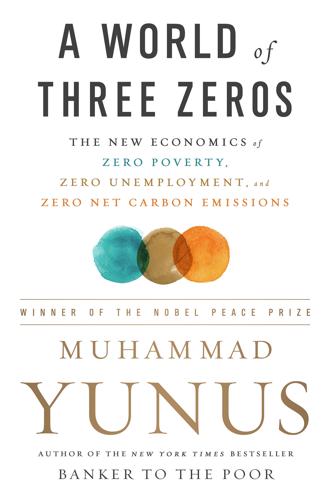
A World of Three Zeros: The New Economics of Zero Poverty, Zero Unemployment, and Zero Carbon Emissions
by
Muhammad Yunus
Published 25 Sep 2017
Members also commit to keeping their children in school, nurturing the health and well-being of their families, and otherwise building toward a better future. In all these ways, the Grameen microcredit formula in the United States is exactly the same as in Bangladesh. It’s important to understand that not all of the organizations around the world that have jumped on the microcredit bandwagon have followed the same consistent rules. Many NGOs have launched microcredit programs that ignore or twist the principles that made Grameen Bank successful and effective. Most egregiously, some have converted microcredit from a social business dedicated to helping poor people (and, in the case of Grameen Bank, actually owned and controlled by the poor people themselves) into a money-making scheme designed to enrich the affluent by making profits off the poor.
…
Classification: LCC HD60 .Y863 2017 | DDC 330—dc23LC record available at https://lccn.loc.gov/2017017988 ISBNs: 978-1-61039-757-5 (HC); 978-1-61039-758-2 (EB); 978-1-5417-6792-8 (INTL) First Edition: E3-20170807-JV-NF CONTENTS Cover Title Page Copyright Dedication PART ONE THE CHALLENGE 1The Failures of Capitalism 2Creating a New Civilization: The Countereconomics of Social Business PART TWO THE THREE ZEROS 3Zero Poverty: Bringing an End to Income Inequality 4Zero Unemployment: We Are Not Job Seekers, We Are Job Creators 5Zero Net Carbon: Creating an Economics of Sustainability 6A Road Map to a Better Future PART THREE MEGAPOWERS FOR TRANSFORMING THE WORLD 7Youth: Energizing and Empowering the Young People of the World 8Technology: Unleashing the Power of Technology to Liberate All People 9Good Governance and Human Rights: Keys to Building a Society That Works for All PART FOUR STEPPING STONES TO THE FUTURE 10The Legal and Financial Infrastructure We Need 11Redesigning the World of Tomorrow About the Author Also by Muhammad Yunus: Notes Index To the young generation, who will build a new civilization PART ONE THE CHALLENGE 1 THE FAILURES OF CAPITALISM I’VE DEVOTED MOST OF MY life to working for the poorest people, particularly the poorest women, trying to remove the hurdles they face in their efforts to improve their lives. Through the tool known as microcredit, Grameen Bank, which I launched in my home country of Bangladesh in 1976, makes capital available to poor villagers, especially women. Microcredit has since unleashed the entrepreneurial capabilities of over 300 million poor people around the world, helping to break the chains of poverty and exploitation that have enslaved them. The impact of microcredit in enabling millions of people to lift themselves out of poverty helped to expose the shortcomings of a traditional banking system that denied its services to those who needed them most—the world’s poorest people.
…
This practice excludes the world’s poorest people, the very ones I designed microcredit to help. In other cases, companies selling nonessential consumer products lure poor people to buy them by arranging finance through so-called microcredit programs. This is completely contrary to the Grameen purpose. We lend money to support productive investments so that the borrowers can build assets and lift themselves and their families out of poverty. Excessive borrowing for consumption tends to mire people in debt and traps them more firmly in the chains of poverty rather than liberating them. For all these reasons, I urge people who want to understand how microcredit really works to study the Grameen organizations, including the Grameen Bank in Bangladesh, GAI in the United States, and many others around the world.

Geek Heresy: Rescuing Social Change From the Cult of Technology
by
Kentaro Toyama
Published 25 May 2015
In the decades since, microcredit has grown into a titan of social programs. It was boosted by the tireless evangelism of advocates like Yunus, who has said that “the purpose of microcredit is to eliminate poverty in the shortest possible time frame.”3 According to proponents, loans allow households to apply existing skills to build up small businesses – microenterprises – and climb out of poverty on their own. Microcredit is supposed to increase incomes, empower women, and enhance health and education outcomes for children. It’s been said that lives are “transformed by microfinance,” and that microcredit “revolutionized global anti-poverty efforts.”4 Today there are as many as 180 million microcredit borrowers worldwide.5 The United Nations declared 2005 the International Year of Microcredit.
…
A closer look at the economists’ data shows that positive effects tend to favor certain subgroups. Microcredit is more beneficial for those with greater wealth and education; for those with existing businesses; and for those with entrepreneurial skills and temperament; and, in some communities, for the men more than for the women, probably because of other sociocultural advantages.18 In other words, like digital technologies, microcredit also amplifies human forces. But microcredit isn’t a concrete thing like hardware or software. What is doing the amplifying? In essence, it’s a prescribed process for making cash loans. In its classic form, microcredit is based on lending to groups of people who offer a social guarantee instead of financial collateral.
…
Here is John Hatch, founder of the nonprofit Foundation for International Community Assistance, describing his philosophy of microcredit: “Give poor communities the opportunity, and then get out of the way!”43 Kiva.org, an online portal where individuals can contribute to loan capital, asserts, “Low-income individuals are capable of lifting themselves out of poverty if given access to financial services.”44 Opportunity International, another large microcredit organization, says simply that microcredit is “a solution to global poverty.”45 The people making these claims, though, contradict their public statements in their own work.
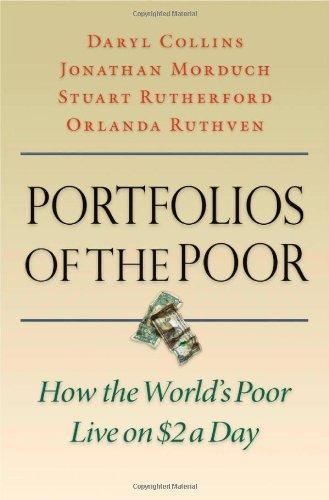
Portfolios of the poor: how the world's poor live on $2 a day
by
Daryl Collins
,
Jonathan Morduch
and
Stuart Rutherford
Published 15 Jan 2009
When Yunus started Grameen, his focus was not on microfinance but on microcredit. Moving to microfinance from the narrower goal of microcredit begins with the recognition that poor households want to save and insure as well as borrow. Lately, Grameen itself, as we discuss in chapter 6, has taken up the cause of saving with energy and innovation. The financial diaries show in daily detail why the shift from an exclusive focus on microcredit to the broader microfinance is an important and welcome advance. But the diaries also show the need to push further. The idea of microcredit has long been associated with the promotion of enterprise: to enable people to purchase productive assets and working stock to set up in business.
…
Instead, emergencies were met with a mosaic of smaller loans and savings combined with asset sales. In Bangladesh, microcredit loans were seldom available for emergencies, because they were disbursed on an annual cycle, with prepayments (which would lead to the early release of a fresh loan) not allowed. If microcredit loans contributed to emergencies, they did so indirectly: a microcredit client might be able to secure a private loan, for example, by assuring the lender that she was due to get a microcredit loan within the next few months and thus would be positioned to repay the moneylender. Likewise, many savings clubs in all three countries pay out only at pre-specified times, leaving a saver with a sudden emergency unable to access funds.
…
For example, when policymakers say, as they sometimes do, that microcredit providers offer a good price as long as it beats the annualized interest rate charged by moneylenders, there is something amiss. The diaries show that few borrowers would expect to pay the high moneylender rates for a relatively large, long-term loan. Annualized rates may not be the most 22 THE PORTFOLIOS OF THE PO OR appropriate way to compare a large, yearlong microcredit loan with a small, short-term loan from a moneylender, and poor households may not be behaving irrationally if they sometimes choose the moneylender over the microcredit provider. Other pricing conundrums are there to be looked at, as we do in chapter 5.
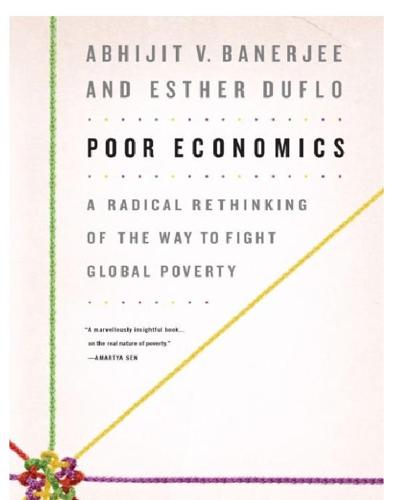
Poor Economics: A Radical Rethinking of the Way to Fight Global Poverty
by
Abhijit Banerjee
and
Esther Duflo
Published 25 Apr 2011
But this is not the whole answer. First, as we saw, although there are millions of microcredit borrowers, there are many more who have the opportunity to borrow but choose not to. Ben Sedan was one of them. He had a business raising cows and could have grown it with a microcredit loan, but he decided against it. Even in Hyderabad, where there are several competing MFIs, the sign-up rate for any microcredit loan among families who were eligible to borrow was only 27 percent, and only 21 percent of those who had a small business had taken a microcredit loan. Moreover, even those who cannot borrow can save: Consider the shopkeeper family in Gulbarga.
…
What CGAP called evidence turned out to be case studies, often produced by the MFIs themselves. For many supporters of microcredit, this appears to be enough. We met a prominent Silicon Valley venture capitalist and investor, and supporter of microcredit (he was an early backer of SKS), who told us that he needed no more evidence. He had seen enough “anecdotal data” to know the truth. But anecdotal data do not help with the skeptics out there, including large sections of governments everywhere that worry that microcredit might be the “new usury.” In October 2010, just two months after SKS’s successful IPO, the Andhra Pradesh government blamed SKS for the suicide of fifty-seven farmers, who allegedly were put under unbearable pressure by the loan officers’ coercive recovery practices.
…
Fortunately, this is not the way the rest of the industry seems to be going. At a conference in New York City in fall 2010, where similar results were presented, all the attendees agreed that microcredit as we know it has its strengths and its limits, and that the next order of business was to see what microfinance organizations could do to deliver more to their clients. THE LIMITS OF MICROCREDIT Why didn’t microcredit deliver more than it did? Why didn’t more families start new businesses, given that they now had access to capital at affordable rates? In part, the answer is that many poor people are not willing, or able, to start a business, even when they can borrow (why this is the case is one of the central themes of Chapter 9, on entrepreneurship).
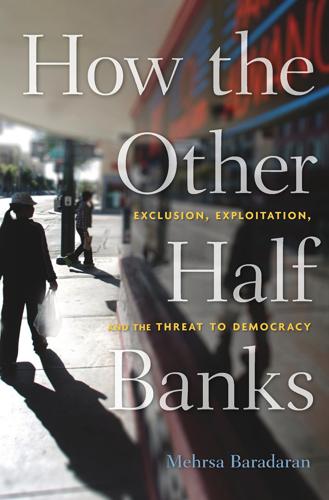
How the Other Half Banks: Exclusion, Exploitation, and the Threat to Democracy
by
Mehrsa Baradaran
Published 5 Oct 2015
Niche “poverty banks” would simply pop up in the market and fill the void created by competitive forces. MICROCREDIT: MARKET-BASED PHILANTHROPY Microcredit, a market-based lending principle, has been the most heralded and controversial modern effort to lend to the poor. Though not a significant part of the financial landscape in the United States, it has swept over the developing world. Just as the credit union movement had evangelical leaders who saw it as the wave of the future and the cure to all sorts of social ills, microcredit was also seen as a potential cure to poverty. Microcredit’s quixotic mission was to help the poor through profitable lending.
…
Microcredit did not begin or end with Grameen—informal banking institutions have existed for centuries on practically every continent—but Grameen did give the concept new legs.49 Today, thousands of institutions worldwide offer “microcredit,” and the term, stretched by overuse, has become almost meaningless. Nonprofits like Kiva connect small-scale “entrepreneurs” in developing countries with small-scale financiers, usually from developed countries. Kiva lends small loans at or near 0 percent interest and only lends to verified borrowers with a business plan. Large “microcredit” corporations similar to formalized loan sharks also operate in the Third World. It wasn’t long before the honeymoon with microcredit gave way to widespread criticism. With such ambitious aims and universal hype, the metrics were never quite reachable.
…
Even Grameen Bank has reported annual interest rates as high as 60 to 70 percent—technically usurious by U.S. standards but necessary to make a profit.52 Eventually, what was intended as a means to help the poor turned into a way for big corporations to make money. A 2010 New York Times report described the hand-wringing by microcredit supporters surprised at the direction it has taken: “Drawn by the prospect of hefty profits from even the smallest of loans, a raft of banks and financial institutions now dominate the field, with some charging interest rates of 100% or more.”53 Yunus himself expressed frustration and said: “We created microcredit to fight the loan sharks; we didn’t create microcredit to encourage new loan sharks.” The article went on to state that the microfinance industry, “with over $60 billion in assets, has unquestionably outgrown its charitable roots.”

Confessions of a Microfinance Heretic
by
Hugh Sinclair
Published 4 Oct 2012
This was a triumph for transparency, and for once attention had focused not simply on the activities per se, but on the source of the funding. The Times article went on to quote Muhammad Yunus: “We created microcredit to fight the loan sharks; we didn’t create microcredit to encourage new loan sharks,” Mr. Yunus recently said at a gathering of financial officials at the United Nations. “Microcredit should be seen as an opportunity to help people get out of poverty in a business way, but not as an opportunity to make money out of poor people. . . .” Mr. Yunus says interest rates should be 10 to 15 percent above the cost of raising the money, with anything beyond a “red zone” of loan sharking.
…
Contents Foreword by David Korten Preface 1 Thou Shalt Not Criticize Microfinance 2 Baptism in Mexico 3 Bob Dylan and I in Mozambique 4 Another Mozambican Civil War 5 The “Developed” World 6 Something Not Quite Right in Nigeria 7 Something Not Quite Right in Holland 8 In Front of the Judge 9 Rustling Dutch Feathers 10 Blowing the Whistle from Mongolia 11 Enter the New York Times 12 Collapse, Suicide, and Muhammad Yunus 13 The Good, the Bad, and the Poor Appendix: Microfinance Economics 101 Notes Acknowledgments Index About the Author Foreword By David Korten Confessions of a Microfinance Heretic provides an insightful, well-documented, and devastating look into the tragic reality of how a good idea was derailed by the same mindless pursuit of financial gain that caused the global financial crash of 2008. It is essential reading for anyone involved in microcredit and for all who are committed to ending global poverty and injustice. For some twenty years we have heard the story that microcredit is the cure for global poverty: An amazing visionary economist in Bangladesh named Mohammed Yunus founded the Grameen Bank and demonstrated a simple, effective way to end world poverty. Small, low-cost loans to the poor unleash their entrepreneurial potential and allow them to start profitable businesses that bring prosperity to themselves, their children, and their communities.
…
Too Good to Be True Microfinance is now a $70 billion industry and some investors and microfinance institutions enjoy eye-popping returns. The industry falls far short, however, of fulfilling its promise to end poverty. Indeed, as Hugh Sinclair spells out in detail, many microcredit programs are nothing more than predatory lending schemes rebranded as socially responsible investment opportunities. There are effective microcredit programs. Sinclair describes one in Mongolia that truly serves the poor with low-cost loans used to fund successful microbusinesses. Tragically, these may be more the exception than the norm. I lived and worked in Asia from 1978 to 1992 as part of the foreign aid establishment.
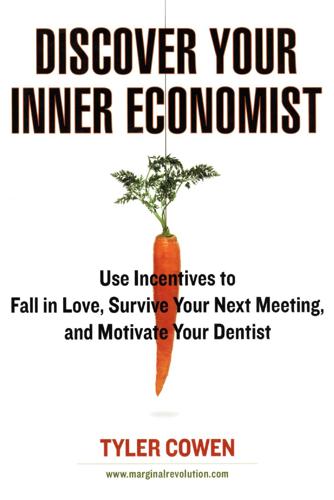
Tyler Cowen-Discover Your Inner Economist Use Incentives to Fall in Love, Survive Your Next Meeting, and Motivate Your Dentist-Plume (2008)
by
Unknown
Published 20 Sep 2008
Counterintuitively, it has been suggested that we should abandon the role of charity angel for that of moneylender. Daniel Akst, writing for Slate.com, refers to micro-credit as "the best way to spend a little money helping the world's poorest citizens." Micro-credit is the practice of giving very small loans-often no How to Save the World I 215 more than $100-to the world's poor. Millions of people around the globe use micro-credit to set up small businesses or sometimes just to pay their medical bills. Micro-credit is particularly well-known for helping women set up tailoring shops or small retail outlets in their communi ties. The micro-credit revolution started in 1976, when an economics professor, one Muhammad Yunus, started the Grameen Bank Project in Bangladesh.
…
An Indian company named Spandana has started extending micro-credit to thousands of lower-middle-class borrowers in the city slums. But not everyone has access to these loans. Two years later, a follow-up survey will look at just how big a difference micro-credit has made. Are family incomes higher? How many new businesses have been started where micro-credit is available? Has the status of women improved? We await the final results, but this economist is hopeful. I visited these micro-credit markets in Hyderabad and met many eager, responsible, and entrepreneurial Indian women. None of them had chopped off their limbs in search of sympathy and larger donations.
…
If the neighbor does not pay, each group member is responsible. Many micro-credit projects have repayment rates as high as 98 percent. Groups that repay their loans are eligible for larger borrowings the next time around. Often micro-credit funds come from charities, from governments, or from multilateral agencies such as the World Bank. But private commercial banks are taking a growing interest in micro-lending for profit. As economic growth spreads around the world, banks are realizing that many individual borrowing needs are quite small. Furthermore, today's micro-borrower may be tomorrow's depositor. We can see why micro-credit might do more good than charity.
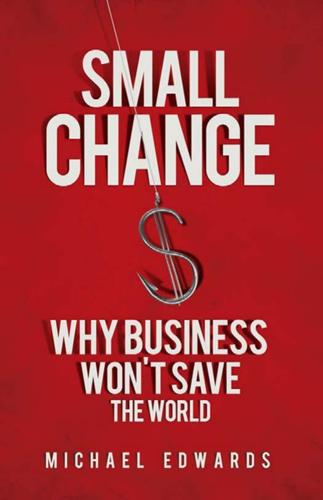
Small Change: Why Business Won't Save the World
by
Michael Edwards
Published 4 Jan 2010
The lesson is very clear: Don’t sacrifice systems change for quick, material results. Invest in the capacity of countries and communities to manage and direct their own 40 small change health care and other aspects of their development so that they can cope with whatever problems come their way. microcredit and the “fortune at the bottom of the pyramid” The other high-profile success story of philanthrocapitalism is microcredit or microfinance — in some people’s minds, part of a broader claim that markets are the best way to eradicate global poverty. Although few rigorous evaluations of the impact of microfinance exist, it is clear that increasing poor people’s access to savings, credit, and other financial services is a very good thing, and in one or two countries it has already reached significant scale — 21 million clients and 105 million family members in Bangladesh alone.6 Microfinance increases people’s resilience, reduces their need to sell precious assets in times of trouble, and finances consumption, including spending on health and education that are vital for the future; but it doesn’t move them out of poverty on its own.
…
See also Creative Capitalism Gates, Melinda, 9, 30, 92 Girl Scouts of America, The, 52, 58 GiveWell, 80 Global Fund to Fight AIDS, Tuberculosis and Malaria, 2 Global Giving, 72 Global Peace Index, 61 Good Club, The, 94 Good to Great, 78 Google.org, 20, 32, 34, 80 Grameen Bank, 19, 62 Grameen Foundation, 41 Grameen Phone, 41 Greed patterns of, 9 Green Dot, 47 Green, Michael, 2 Greenlining Institute, 101 GuideStar International, 79 H Habitat for Humanity, 52, 58 Hartigan, Pamela, 74 Hasan, Arif, 12 Hatred patterns of, 9 Helmsley, Leona, 94 Hewlett Foundation, 104 Hindustan Lever (HLL), 42 HIV/AIDS, 37, 60, 89 Hoffman, Kurt, 3–4 Holla, Richard, 43 Homophobia patterns of, 9 Hookworm, 37 Hotmail, 72 How to Change the World: Social Entrepreneurs and the Power of New Ideas (Bornstein), 19 Humankind, love of, 2 I Ibrahim, Mo, 32 IMproved, 72 Individualism role of entrepreneur and, 71 Inequality attitudes toward economic, 67 Infosys, 3 Intel, 31 Iverson, Erik, 8 J JEHT Foundation, 4 K Kahn, Si, 70 Kaletra, 37 Karnani, Aneel, 42 Karnofsky, Holden, 80 Kassoy, Andrew, 21 King, Martin Luther, 19 Kiva, 72 Kunreuther, Frances, 70 L La Mujer Obrera, 19, 44 Landsburg, Daniel, 31 Lee, Mike, 87 Lehman Brothers, 4, 59 Leishmaniasis, 37 M Madoff, Bernard, 4, 59. See also Ponzi scheme Make the Road New York, 10, 11, 77 index Malaria bed nets and, 36 Mandela, Nelson, 30 Market regulation, 6 McKinsey and Company, 39, 52 Menon, Lakshmi, 43 Micro-Credit Ratings International Ltd., 73 Microcredit, 40 Microfinance, 40 Microsoft, 29, 30, 72 Mondragon, 22 Morino, Mario (quoted), 5 Movement Strategy Center, 13 MTV.com, 44 Multinational companies versus mom-and-pop stores, 17 Munger, Charles (quoted), 2 N National AIDS Control Organization, 39 National Center for Social Entrepreneurs, 47 National Committee for Responsive Philanthropy (NCRP), 90–91 Nature Conservancy, The, 51 NCRP (National Committee for Responsive Philanthropy), 90–91 New business models, 21–22 New Deal, 23 New Philanthropy Capital (NPC), 79 Nightingale, Florence, 19 Nilekani, Nandan, 3 Nilekani, Rohini, 74 Nonmarket peer production, 22 Nonprofit Quarterly, 51, 57–58 Novogratz, Jacqueline, 8 121 O Obama, Barack, 6 Omidyar Network, The, 30, 104 Omidyar, Peter, 7, 89 One Laptop Per Child, 31, 44 Oracle, 2 P Parent Teacher Associations (PTAs), 54 Participant Productions, 19, 44 PATH, 44 Peaceworks, 30 Philanthrocapitalism as form of philanthropy, 2 civil rights and, 14 competition and, 68 focus of, 9 hype surrounding, 34 rise of, 1–6 social justice and, 73 social problems and, 36 versus social transformation, 7 Philanthrocapitalists, 2–3, 78.
…
Second, the hype that surrounds philanthrocapitalism runs far ahead of its ability to deliver real results. There is little hard evidence that these new approaches are any better at reducing poverty and injustice than the governments, foundations, and civil society groups that have been working away more quietly in the background for a generation and more. Yes, they get much-needed drugs, microcredit loans, solar-rechargeable light bulbs, and the like to people who really need these things, but they don’t change the social and political dynamics that deny most of the world’s population the hope of a decent life. Chapter 3 reviews this evidence and looks at the impact of philanthrocapitalism on people’s access to useful goods and services, on the strength of civil society, and on national indicators of poverty and health.
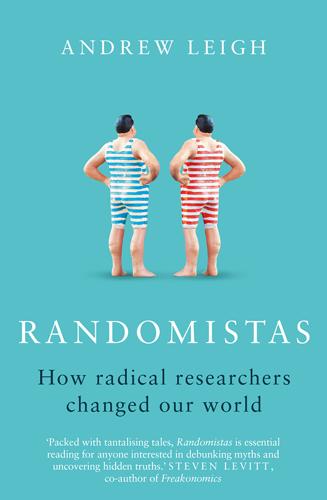
Randomistas: How Radical Researchers Changed Our World
by
Andrew Leigh
Published 14 Sep 2018
As Yunus recounts, they repaid the loan and their businesses became more profitable. So he set up a bank to provide ‘microcredit’ – loans as small as a few dollars. Fast-forward two decades, and microcredit was among the hottest trends in development. Yunus’s Grameen Bank had grown into a multi-billion-dollar organisation. The prime minister of Bangladesh argued that microcredit would ‘allow the world’s poorest people to free themselves from the bondage of poverty and deprivation to bloom to their fullest potentials’.9 Internationally, microcredit won supporters from the left for its focus on poor women and from the right for its emphasis on personal responsibility.
…
A pair of supporters wrote: ‘If a social evangelist had a choice of picking one tool, one movement with the goal of emancipating the poorest women on earth, the microcredit phenomenon wins without serious competition.’10 As US president, Bill Clinton provided development assistance to microcredit programs and championed Muhammad Yunus for the Nobel Peace Prize.11 Awarding the prize to Yunus in 2006, the Nobel committee praised him for developing ‘micro-credit into an ever more important instrument in the struggle against poverty’. U2’s Bono wrote: ‘Give a man a fish, he’ll eat for a day. Give a woman microcredit, she, her husband, her children, and her extended family will eat for a lifetime.’12 Yet it turned out that the bold claims for microcredit were largely based on anecdotes and evaluations that failed to distinguish correlation from causation.
…
Give a woman microcredit, she, her husband, her children, and her extended family will eat for a lifetime.’12 Yet it turned out that the bold claims for microcredit were largely based on anecdotes and evaluations that failed to distinguish correlation from causation. By the 2000s, researchers had begun carrying out randomised trials of microcredit programs in Bosnia, Ethiopia, India, Mexico, Morocco and Mongolia. Summarising these six experiments, a team of leading development economists concluded that microcredit had no impact on raising household income, getting children to stay in school, or empowering women.13 Microcredit schemes did provide more financial freedom, and led people to invest more money in their businesses, but it didn’t make them more profitable.
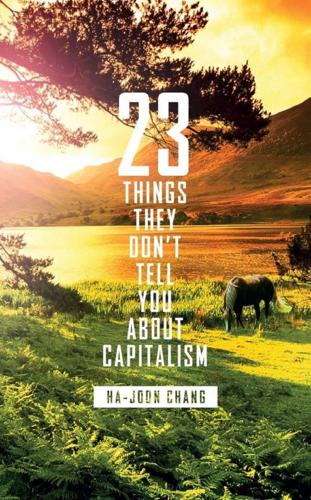
23 Things They Don't Tell You About Capitalism
by
Ha-Joon Chang
Published 1 Jan 2010
If they are given a small amount of credit (known as a ‘microcredit’) at a reasonable interest rate to set up a food stall, buy a mobile phone to rent out, or get some chickens to sell their eggs, they will be able to pull themselves out of poverty. With these small enterprises making up the bulk of the developing country’s economy, their successes would translate into overall economic development. The invention of microcredit is commonly attributed to Muhammad Yunus, the economics professor who has been the public face of the microcredit industry since he set up the pioneering Grameen Bank in his native Bangladesh in 1983, although there were similar attempts before.
…
By the early 1990s, the success of the Grameen Bank, and of some similar banks in countries such as Bolivia, was noticed, and the idea of microcredit – or more broadly microfinance, which includes savings and insurance, and not just credit – spread fast. The recipe sounds perfect. Microcredit allows the poor to get out of poverty through their own efforts, by providing them with the financial means to realize their entrepreneurial potential. In the process, they gain independence and self-respect, as they are no longer relying on handouts from the government and foreign aid agencies for their survival. Poor women are particularly empowered by microcredit, as it gives them the ability to earn an income and thus improve their bargaining positions vis-à-vis their male partners.
…
With interest rates running up to 100 per cent, few businesses can make the necessary profits to repay the loans, so most of the loans made by microfinance institutions (in some cases as high as 90 per cent) have been used for the purpose of ‘consumption smoothing’ – people taking out loans to pay for their daughter’s wedding or to make up for a temporary fall in income due to the illness of a working family member. In other words, the vast bulk of microcredit is not used to fuel entrepreneurship by the poor, the alleged goal of the exercise, but to finance consumption. More importantly, even the small portion of microcredit that goes into business activities is not pulling people out of poverty. At first, this sounds inexplicable. Those poor people who take out microcredit know what they are doing. Unlike their counterparts in rich countries, most of them have run businesses of one kind or another. Their business wits are sharpened to the limit by their desperation to survive and sheer desire to get out of poverty.

Listen, Liberal: Or, What Ever Happened to the Party of the People?
by
Thomas Frank
Published 15 Mar 2016
“Whether we are talking about a rural area in South Asia or an inner city in the United States, microcredit is an invaluable tool in alleviating poverty, promoting self-sufficiency and stimulating economic activity in some of the world’s most destitute and disadvantaged communities.” The president of the Citicorp Foundation at the time was Paul Ostergard. His remarks are found on p. 21 of “The Microcredit Summit Report,” a booklet dated April 1997 and apparently published by the RESULTS Educational Fund. Hillary Clinton’s remarks are found on p. 29. A pdf of the report may be downloaded here: http://www.microcreditsummit.org/resource/59/1997-microcredit-summit-report.html. 27.
…
A pdf of the report may be downloaded here: http://www.microcreditsummit.org/resource/59/1997-microcredit-summit-report.html. 27. Verveer: “Launch of the State of the Microcredit Summit Campaign Report 2011,” March 7, 2011. Otero: “Keynote Address to the Mobile Money Policy Forum,” Nairobi, Kenya, November 30, 2010. Hillary herself: Hard Choices, p. 149. 28. On microcredit in Bosnia, see Bateman’s blog post, “A New Balkan Tragedy? The Case of Microcredit in Bosnia,” April 8, 2014. In “From Poverty to Power,” an Oxfam blog post dated April 20, 2011, Bateman poses the following rhetorical question: “With so many countries having achieved microfinance ‘saturation’ this last decade or so (notably Bolivia, Bosnia, Mexico, Peru, Cambodia and others), why is it that in none of these countries can we see obvious substantive poverty reduction and ‘bottom-up’ development gains?”
…
She declared that a connection to it was “an on-ramp to modernity.” The fear that the Internet might create “haves and have-nots” was false, she continued; she knew of farmers in Kenya who were using “mobile banking technology” and of “women entrepreneurs” somewhere else in Africa who were getting “microcredit loans” and she also knew about a doctor who used a search engine to diagnose a disease.17 I guess she hadn’t heard about what was happening to journalists or musicians or taxi drivers in her own country, but I quibble; as long as this technology was free, anyone could see that it pushed in one direction only, and that was up.
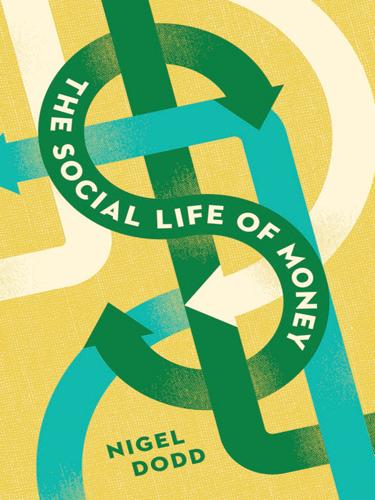
The Social Life of Money
by
Nigel Dodd
Published 14 May 2014
One recent noteworthy manifestation of mutualist principles has been the microcredit movement, and in particular, the Grameen Bank founded in Bangladesh by Muhammad Yunus in 1976. The principle behind microcredit is to provide loans that would normally be too small for ordinary banks. The idea of collectivism is built into the very structure of the loan, which is made to a “solidarity group”: if one person defaults, the credit record of all group members is tarnished (although other group members are not actually liable for that portion of the loan).16 Besides encouraging collectivism, the principle behind microcredit is that, when compared with charity, lending—within limits—can be empowering.
…
The idea of collectivism is built into the very structure of the loan, which is made to a “solidarity group”: if one person defaults, the credit record of all group members is tarnished (although other group members are not actually liable for that portion of the loan).16 Besides encouraging collectivism, the principle behind microcredit is that, when compared with charity, lending—within limits—can be empowering. Critics, on the other hand, argue that microcredit amounts to little more than the privatization of welfare, draws many borrowers into a debt trap, and reinforces extant gender inequalities (Rankin 2001; Karim 2008; Faraizi, Rahman, et al. 2010). The microcredit movement (including global organizations such as Kiva) has been enormously successful: solidarity lending now operates in forty-three countries worldwide. The Grameen Bank, principally owned by its borrowers, has spawned a large network of organizations, such as trusts and nonprofit ventures, including Grameen America, which made more than $85 million worth of loans between 2008 (when it was founded) and 2013.17 However, microfinance recently underwent a crisis of its own, analogous perhaps to the subprime crisis.18 The problem, to a degree, was one of scale: microcredit was becoming a victim of its own success as new companies were attracted to the system for commercial, rather then ethical, reasons: some of these were engaging in lending practices that resonate with subprime, such as failure to conduct proper credit checks and lending unrealistic amounts (Wichterich 2012).
…
The Grameen Bank, principally owned by its borrowers, has spawned a large network of organizations, such as trusts and nonprofit ventures, including Grameen America, which made more than $85 million worth of loans between 2008 (when it was founded) and 2013.17 However, microfinance recently underwent a crisis of its own, analogous perhaps to the subprime crisis.18 The problem, to a degree, was one of scale: microcredit was becoming a victim of its own success as new companies were attracted to the system for commercial, rather then ethical, reasons: some of these were engaging in lending practices that resonate with subprime, such as failure to conduct proper credit checks and lending unrealistic amounts (Wichterich 2012). Having seen growth from 1 to 26.7 million microloans between 2003 and 2009, the microcredit system in India went into meltdown during 2010, amid accusations of predatory lending, excessive interest rates, and coercive collection tactics.19 Inevitably, government intervention has followed—not only in India but elsewhere, such as Mexico and Peru—with tighter regulation of organizations that have evolved from a quasicharitable to a more commercially driven form.
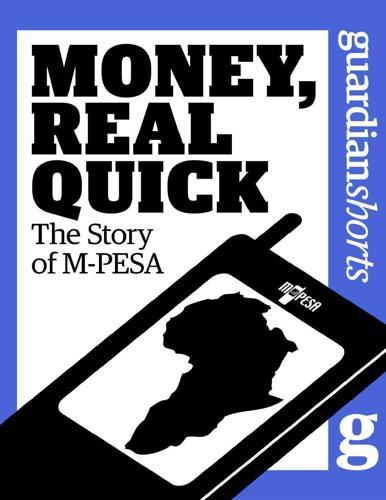
Money, Real Quick: The Story of M-PESA
by
Tonny K. Omwansa
,
Nicholas P. Sullivan
and
The Guardian
Published 28 Feb 2012
Perceiving a large gap in the provision of financial services to the poor, DFID’s theory was that while microfinance and informal finance had addressed some of the gap, a substantial expansion of products beyond microcredit was needed to tackle financial inclusion on an adequate scale. DFID envisioned new products for savings, money transfers, leasing and insurance—and the need for a new delivery system beyond bank branches in ******ebook converter DEMO Watermarks******* affluent urban centers. Today, this approach to development is commonly accepted; then, when microcredit was perceived as a panacea for world poverty, it was forward thinking. So was DFID’s principle that engagement with the private sector was crucial to find new business models that would be profitable but also have potential development impact.
…
Hughes’ 2003 proposal to use mobiles to deliver financial services, particularly microfinance loans, was awarded 1 million pounds by DFID. Vodafone would match that in-kind with a combination of cash and staff time. Hughes organized a series of open workshops in Nairobi and Dar es Salaam (Tanzania)—inviting banks, microfinance organizations, technology service suppliers, NGOs with an interest in micro-credit, and telecom and banking regulators. This diverse array of stakeholders with often conflicting agendas would appear to have killed any positive outcome. But the concept was to bring together several parties with different competencies to bear in tackling the needs of the unbanked. Hughes and the team then systematically reviewed an ideal partnership mix and settled with a proposed memorandum of understanding between Commercial Bank of Africa, Faulu Kenya (a microfinance institution) and Safaricom/Vodafone.
…
An agency’s central functions are to maintain office space, develop signage and marketing, hire employees (using some combination of salary and commissions), and rebalance cash and e-float so that merchants always have what they need to satisfy customer demand. PEP Intermedius, for example, located in Kisumu on the shores of Lake Victoria and founded in 2004 as a microcredit organization, began operating as an aggregator when M-PESA launched in 2007. It now manages 150 outlets, eight of which are fully owned by partners Frederik Eijkman and Paul Otieno, with the remainder franchise operations, for which PEP provides startup capital and liquidity management. PEP’s first agency was number 999 (out of 30,000 and counting), which is worn like a badge of honor, much as early Microsoft or Google employees tout their low employee numbers.

No Such Thing as a Free Gift: The Gates Foundation and the Price of Philanthropy
by
Linsey McGoey
Published 14 Apr 2015
He was the first to establish a non-profit organization dedicated to securing small loans for poor Bangladeshis, a practice that soon spread to other nations as microcredit was embraced by the UN, USAID, the World Bank, and investors in the west. Dozens of lenders mushroomed in Grameen’s wake. Today, tens of millions of borrowers worldwide have received loans from microcredit institutions. The UN declared 2005 the International Year of Microcredit. Enthusiasts suggest that Grameen and its successors have ‘demonstrated that it was possible to mitigate poverty on a massive scale’.25 But has it? Dozens of studies have explored the effect of microfinance on poverty levels.
…
Former President Bill Clinton wrote a foreword for the book’s paperback edition, stressing that the concept is what drives his own approach at the Clinton Foundation. ‘You can also see the same approach’, he adds, ‘taking hold throughout the world. Nobel Peace Prize–winner Muhammad Yunus pioneered with the Grameen Bank’s microcredit loans, which have helped lift more than 100 million people out of poverty across the world. The Gates Foundation has used it to save countless lives from malaria, to search for better ways to prevent HIV/AIDS, and to improve education in poor communities in the United States’.10 New trends such as philanthrocapitalism, microfinance, impact investing, and social entrepreneurship fall within the ‘business-oriented’ rubric that Bishop, Green, and Clinton hail for lifting individuals out of poverty, saving lives and improving education.
…
The same thing applies here. After tracking the impact of microfinance loans over a twenty-year period, the investigators found an almost negligible increase in schooling and a minor jump in household spending. This is not exactly groundbreaking stuff. I mentioned earlier that Bill Clinton has praised microcredit loans for helping to ‘lift more than 100 million people out of poverty across the world’. I think he may be confusing access with benefit. At least 100 million people have received microfinance loans to date. But whether that’s helped or hindered their livelihoods is a source of ongoing debate.
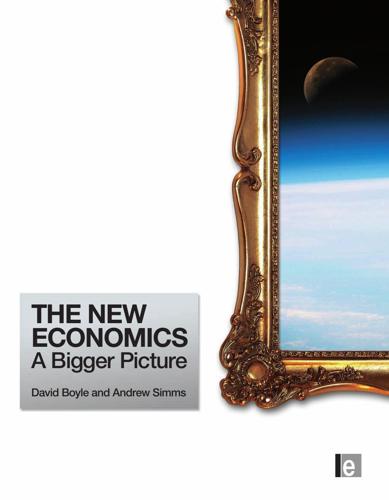
The New Economics: A Bigger Picture
by
David Boyle
and
Andrew Simms
Published 14 Jun 2009
Grameen was also about allowing people to find the investment they needed to make a major difference to people’s lives, by providing the services or food neighbours needed in the poorest places, rather than waiting hopelessly for big corporations to provide anything along the same lines. It has spawned thousands of similar micro-credit projects all over the world, one of the major ways that the first world is learning about development from the third world. Micro-credit reached its apotheosis with the UN Micro-Credit summit in 1996, hosted in Washington by Hillary Clinton. Some of the other models include: • • • Grameenphone: providing phone services in Bangladesh where they are otherwise non-existent, and redressing the anomaly that Bangladeshis who wanted a mobile had to wait ten years and pay $500, whereas New Yorkers could get one immediately, free and over the counter.
…
Other thinking, to underpin thriving local economies – local money flows, complementary currencies or the critique of the doctrine of comparative advantage – have barely filtered into mainstream assumptions at all, except among those creative and forward-thinking early adopters that exist in any government, however backward. The developing new economics was also informed by a range of successful initiatives to put those ideas into practice, like the pioneering Grameen Bank micro-credit operation, or the massive Seikatsu consumer co-op in Japan.16 Grameen allowed people, mainly women, to borrow very small amounts to underpin small businesses. Seikatsu allowed people to band together and buy healthier, local food wholesale, and in the end produce their own. It also soon became clear that there was a sizeable and growing minority of people who are involved in the emerging new economics paradigm in their everyday lives, and a sector is emerging to support them, providing green energy, ethical investment, community-supported agriculture and organic food.
…
The government responded in 2005 with reforms to credit union legislation and by setting up a Financial Inclusion Fund to tackle the problem of debt and lack of access to affordable credit. This initiative has supported about 100 credit unions and community development finance institutions to access £40 million of investment capital and revenue to provide affordable credit. Thanks to this investment, microcredit loans of over £21 million have been advanced. An extension of this programme to 2011 was agreed. Bill Clinton targeted the development of 100 community development banks. The social investment programme he implemented has borne fruit. From invisible players in 1992, by March 2007 community development credit unions (CDCUs) had attracted over 1 million low and moderate income members, were mobilizing savings of over $4 billion and were advancing new loans of over $3 billion annually.
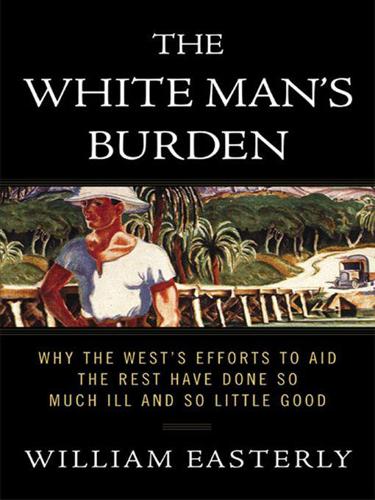
The White Man's Burden: Why the West's Efforts to Aid the Rest Have Done So Much Ill and So Little Good
by
William Easterly
Published 1 Mar 2006
He experimented, and found that microcredit borrowers would repay the loan in order to get access to future loans and also because of peer pressure from other microcredit borrowers. His first loan was to Sufiya Begum, who started a successful peddling business with the money, instead of making more bamboo stools. There was a huge demand for such loans, and Grameen Bank became the legend that it is today, with imitators from all over the world. Yunus was a Searcher. Microcredit is not a panacea for poverty reduction that some made it out to be after Yunus’s discovery. Some disillusionment with microcredit has already come in response to these blown-up expectations.
…
Zaf’s best paramedics, she will be promoted to supervisor, with a raise to one hundred dollars a month and a scooter instead of a bicycle. Dr. Zaf searched for and found a piecemeal way to improve the lot of the Bangladeshi poor. SNAPSHOT: THE SECRET HISTORY OF GRAMEEN BANK MOHAMMAD YUNUS OF BANGLADESH, the founder of the Grameen Bank and the main inventor of microcredit schemes, didn’t start off with the goal of giving poor people credit. As Columbia University Business School professor Bill Duggan tells the story in a great book about people who find things that work, Napoleon’s Glance, Yunus started off with the conviction that the Green Revolution, and irrigation, was the answer to poverty in Bangladesh.
…
Some disillusionment with microcredit has already come in response to these blown-up expectations. Microcredit didn’t solve everything; it just solved one particular problem under one particular set of circumstances—the poor’s lack of access to credit except at usorious rates from moneylenders. CHAPTER THREE YOU CAN’T PLAN A MARKET The nature of man is intricate; the objects of society are of the greatest complexity: and therefore no simple disposition or direction of power can be suitable either to man’s nature or to the quality of his affairs. EDMUND BURKE, “REFLECTIONS ON THE REVOLUTION IN FRANCE,” 179.1 THE FAILURE OF THE Big Push led to some soul-searching among foreign aid agencies, beginning in the 1980s.
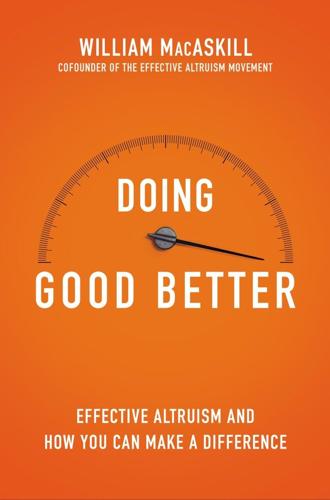
Doing Good Better: How Effective Altruism Can Help You Make a Difference
by
William MacAskill
Published 27 Jul 2015
Only after looking at randomized controlled trials could we tell that correlation did not indicate causation in this case and that Scared Straight programs were actually doing more harm than good. One of the most damning examples of low-quality evidence concerns microcredit (that is, lending small amounts of money to the very poor, a form of microfinance most famously associated with Muhammad Yunus and the Grameen Bank). Intuitively, microcredit seems like it would be very cost-effective, and there were many anecdotes of people who’d received microloans and used them to start businesses that, in turn, helped them escape poverty. But when high-quality studies were conducted, microcredit programs were shown to have little or no effect on income, consumption, health, or education.
…
“one $10 bed net can mean the difference between life and death”: “Saving Lives,” Nothing But Nets, http://www.nothingbutnets.net/new/saving-lives/. But when high-quality studies were conducted: See, for example, David Roodman, Due Diligence: An Impertinent Inquiry into Microfinance (Washington, DC: Center for Global Development, 2012). Roodman comments: “On current evidence, the best estimate of the average impact of microcredit on poverty is zero. . . . The commonsense idea that credit is a useful tool that sometimes helps and sometimes hurts appears close to the truth.” (http://www.cgdev.org/doc/full_text/DueDiligence/Roodman_Due_Diligence.html). Initially, there were academic studies conducted on microfinance that did seem to show strong impact, summarized in Nathanael Goldberg, Measuring the Impact of Microfinance: Taking Stock of What We Know, Grameen Foundation, December 2005, http://files.givewell.org/files/Cause1-2/Independent%20research%20on%20microfinance/GFUSA-MicrofinanceImpactWhitepaper-1.pdf.
…
This example illustrates just how important getting high-quality evidence is: low-quality evidence can include highly cited academic studies, not just anecdotes. For an overview of the “hierarchy of evidence,” see Trisha Greenhalgh, “How to Read a Paper: Getting Your Bearings (Deciding What the Paper Is About),” BMJ 315, no. 7,102 (July 26, 1997), 243–6. Note that microcredit is only one form of microfinance; other forms of microfinance, such as microsavings (providing secure places for the very poor to save money), have shown promise. Rather than starting new companies: In an interview with Time, David Roodman from the Center for Global Development commented that “there are a fair number of stories where women cannot pay back their loans but they’re in [community borrowing groups].
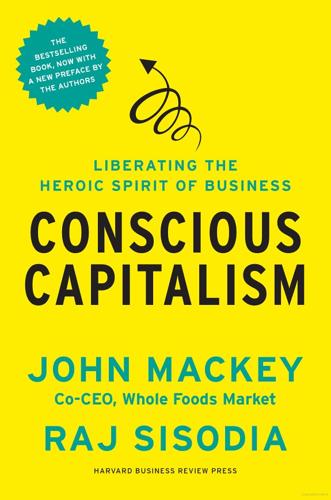
Conscious Capitalism, With a New Preface by the Authors: Liberating the Heroic Spirit of Business
by
John Mackey
,
Rajendra Sisodia
and
Bill George
Published 7 Jan 2014
We’ve concluded that the best way for us to support the communities we trade with is to work to alleviate poverty through micro-lending programs. Initially, we worked exclusively with Mohammed Yunus and his pioneering microcredit lending institution, the Grameen Trust. The Whole Planet Foundation now works with many local microfinance organizations that are already offering microcredit in a community. We engage in thorough research and due diligence to find partners most aligned with our values. We are now in fifty-plus countries and have provided more than $35 million in capital to fund over two hundred thousand microcredit loans. The average first loan size is about $133, and 92 percent of the loans have been made to women.
…
We give our customers the opportunity to donate to the Whole Planet Foundation to fund microcredit loans. We promote the campaign in our stores with brochures and posters. Customer support has been amazing. In 2012, the prosperity campaign raised $5.6 million in six weeks. Many customers who learn about what the Whole Planet Foundation is doing become excited about it. Our stores compete to raise the most money within a region and in the whole company. Our team members also love it. We have created a program where our team members can now go to six countries where we do microcredit lending—Guatemala, India, Kenya, Peru, Ghana, and Brazil—to volunteer for two to four weeks.
…
We believe this diet will radically improve the health of millions of people by helping prevent and reverse the lifestyle diseases that are killing so many of us—heart disease, stroke, cancer, diabetes, and obesity.5 Through the Whole Planet Foundation, we want to help end poverty around the world by making microcredit working-capital loans to millions of impoverished people to help them create and improve their businesses. We want to help make Conscious Capitalism the dominant economic and business paradigm in the world to spread human flourishing. The purpose of a business does not have to be confined to only one of the four great ideals.
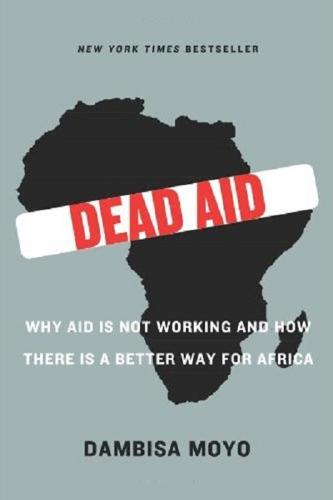
Dead Aid: Why Aid Is Not Working and How There Is a Better Way for Africa
by
Dambisa Moyo
Published 17 Mar 2009
The extension of financial services to people who otherwise have no access to banks dates as far back as when municipal savings banks began in Europe in the eighteenth century, and when German groups based on the self-help principle and called savings and credit cooperatives were first organized by Herman Schulze-Delitzsch and Friedrich Raiffeisen in the middle of the nineteenth century. In more recent times, micro-credit organizations were developed in the 1960s to serve Africa and Asia’s needs for agricultural support, yet most Africans today still have very limited access to financial markets. In Ghana and Tanzania, for example, only about 5–6 per cent of the population has access to the banking sector, although some 80 per cent of households in Tanzania would be prepared to save if they had access to appropriate products and saving mechanisms. The oldest private, worldwide, fully commercial micro-finance investment fund is the Dexia Micro-Credit Fund. It is managed by Blue Orchard Finance, a micro-finance investment consultancy, and finances some fifty micro-finance institutions in twenty-four countries.
…
Since the housing programme’s inception in 1984, over 650,000 houses have been constructed. The most truly extraordinary aspect of this extraordinary tale is their ‘No Donor Money, No Loans’ policy. In 1995, Grameen Bank decided not to receive any more donor funds, and today funds itself 100 per cent through its deposits. Although recognized as the grandfather of micro-credit and micro-lending, Grameen Bank has spawned numerous variations all over the world, all targeting the segment of the population that has fallen through the high-street banking cracks. The BKI in Indonesia, Acción in Latin America, BRAC in Bangladesh and K-REP in Kenya are just a sample of the growing and expansive list.
…
By some estimates some 10,000 organizations (from nongovernmental organizations to registered banks) today offer over US$1 billion worth of micro-finance loans annually to many millions of customers around the world; projections are that this amount will have to grow twenty-fold (to US$20 billion) over the next five years to meet projected demand. But in more extreme forecasts, some predict even more exponential growth. Vijay Mahajan, a micro-finance practitioner, puts potential annual micro-credit demand in India alone at US$30 billion, 10 per cent of the estimated global US$300 billion.4 According to an April 2006 survey by McKinsey Consulting, India has the potential to become a US$500 billion market by the year 2020. Growth in most emerging-market regions has been meteoric: For example, the Bangladeshi organization BRAC signed up 5,000 customers in Afghanistan, just six months after setting up there; two Cambodian organizations (Acleda and EMT) each have over 80,000 customers; Banco do Nordeste in Brazil has become the second-largest micro-finance operation in Latin America, with 110,000 clients in just a few years; and Compartamos, in Mexico, has nearly doubled the number of its clients in the past year to become the largest Latin American programme, with over 150,000 clients.
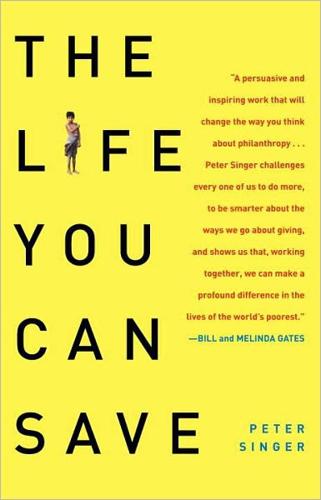
Life You Can Save: Acting Now to End World Poverty
by
Peter Singer
Published 3 Mar 2009
Thanks to controlled trials, we know that providing drugs to kill parasitical worms in Kenyan children improves learning, that education in condom use reduces the likelihood of people getting AIDS, and that offering mothers in India a cheap bag of lentils means that more of them will bring in their children for immunization.12 So why don’t we test all poverty programs this way? One reason is the cost of administering the trials. Oxfam America found that a random controlled trial of one of its microcredit programs in West Africa would cost almost as much as the project itself. The money would have come out of the budget for the project, with the result that microcredit could be extended to only half as many villages as would otherwise be possible. Oxfam did not go ahead with the randomized trial. This is an understandable decision, but it would probably pay, over the long term, for organizations to set aside some money specifically for proper studies of the effectiveness of their programs.
…
In 1982, when it was clear that the concept was working, Yunus founded the Grameen Bank, or “Village Bank,” to provide loans across Bangladesh. Today the Grameen Bank has more than 7 million customers in Bangladesh, and has lent more than $6 billion, with a repayment rate of 97 percent. Most important, Yunus created a model for microcredit, as it has come to be known, that has been followed by thousands of institutions all over the world. But do the loans really reduce poverty? Go to the website of a microfinance institution and you will find accounts of people who have used tiny loans to build successful businesses. The Grameen Foundation, a charity inspired by Yunus’s ideas that operates in twenty-eight countries, tells the story of Marie-Claire, a Rwandan woman who is raising four children alone.
…
A small loan from Opportunity International, another microfinance organization, enabled her to buy in bulk, sell more, and make higher profits. Now her business has grown so much that she employs other workers, and her family has a better home. Such stories are inspiring, but Karnofsky and Hassenfeld wanted to know how representative they are of people who receive microcredit. They read some research showing that those who get loans generally become better off, but they still needed to be convinced that the loans were responsible for the improvement. It might be the case that people who have enough initiative to get loans would become better off anyway. Then Karnofsky and Hassenfeld read a study in which researchers persuaded a South African microfinance organization to choose at random, and offer loans to, some applicants who had narrowly failed to meet the criteria for receiving a loan.
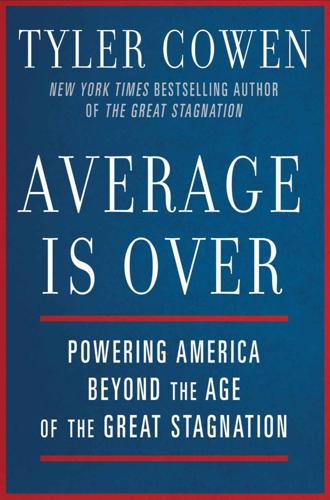
Average Is Over: Powering America Beyond the Age of the Great Stagnation
by
Tyler Cowen
Published 11 Sep 2013
It involved tens of thousands of subjects, some of whom had access to microcredit and some of whom did not. The two groups were drawn from roughly comparable neighborhoods and the goal was to compare how big a benefit microcredit really was, or not. An army of dozens of assistants helped gather data from the borrowers, both before and after they started (or did not start) the microcredit program. That included data about income, new jobs or businesses, failure to repay loans, and many other features of their daily economic lives. The basic question was a pretty simple one: whether the group with access to the microcredit did better. It turned out they were more likely to have started their own businesses and thus a classic paper was born.
…
It turned out they were more likely to have started their own businesses and thus a classic paper was born. Most people see this as the most important study of microcredit, in addition to another large-scale randomized control trial from Dean Karlan at Yale University. It’s a long way from grabbing a publicly available database from a government agency, without much worrying about the quality or meaning of the numbers, and running some regressions. Setting up the entire field experiment is also a uniquely human contribution and it does not approximate any task that is replicable with smart machines. Outside of economics, a computer program will look at a lot of numbers, search for patterns in a more complex way than current empirical researchers can do, and report back the results.
…
See also artificial intelligence (AI) Mechanical Turk, 148–49 mechanization, 126–27 media, 146 median incomes, 38, 52, 60, 253 Medicaid, 234–39, 250 medical diagnosis, 87–89, 128–29 Medicare, 232–35, 237–38, 242 Medication Adherence Scores, 124 Mediterranean Europe, 174–75 memory, 151–55 meritocracy, 189–90, 230–31 meta-rationality, 82, 115 meta-studies, 224–25 Mexico, 168, 171, 177, 242–43 microcredit, 222–23 microeconomics, 212, 225 “micro-intelligibility,” 219 mid-wage occupations, 38 military, 29, 57 Millennium Prize Problems, 207–8 minimum wage, 59, 60 modes of employment, 35–36 monetarist theory, 226 MOOCs (massive open online courses), 180 Moonwalking with Einstein (Foer), 152 Moore’s law, 10, 15–16 moral issues, 26, 130–31 morale in the workplace, 30, 36 Mormon Church, 197 Morphy, Paul, 106 motivation, 197–202, 203 movie ratings, 121 Moxon’s Master, 134 Mueller, Andreas, 59 multinational corporations, 164 Murray, Charles, 231, 249 music, 146–47, 158 Myspace, 42, 209 mysticism, 153 Nakamura, Hikaru, 80 Narrative Science, 8–9 natural gas production, 177 natural language, 7, 119, 140–41 Naum (chess program), 72 negotiations in business, 12–13, 73 Netflix, 9 Nevada, 8 The New York Times, 11–12 Newton, Isaac, 153 Ng, Jennifer Hwee Kwoon, 89 Nickel, Arno, 81 Nielsen, Dagh, 80 Nobel Prizes, 187, 216 non-tradeable sectors, 176 North American Free Trade Agreement (NAFTA), 8 Northeast US, 241 “nudge” concept, 105 Obama healthcare reform, 237–38 Occupy Wall Street, 230, 251, 253, 256 O’Daniel, Karrah, 96 offshoring, 175.
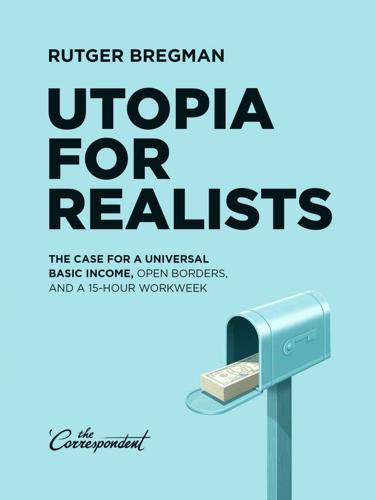
Utopia for Realists: The Case for a Universal Basic Income, Open Borders, and a 15-Hour Workweek
by
Rutger Bregman
Published 13 Sep 2014
Often, local organizations are less than eager to cooperate, not least because they’re worried the findings will prove them ineffective. Take the case of microcredit. Development aid trends come and go, from “good governance” to “education” to the ill-fated “microcredit” at the start of this century. Microcredit’s reckoning came in the form of our old friend Esther Duflo, who set up a fatal RCT in Hyderabad, India, and demonstrated that, all the heartwarming anecdotes notwithstanding, there is no hard evidence that microcredit is effective at combating poverty and illness.13 Handing out cash works way better. As it happens, cash handouts may be the most extensively studied anti-poverty method around.
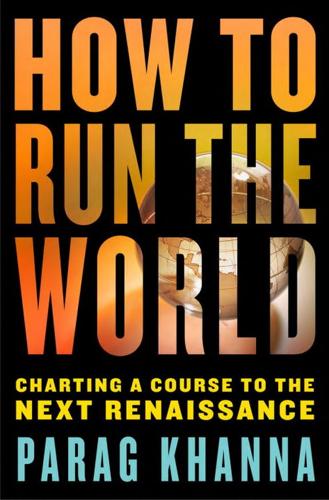
How to Run the World: Charting a Course to the Next Renaissance
by
Parag Khanna
Published 11 Jan 2011
China’s Communist Party has a massively superior capacity to care for its citizens than India’s Congress Party, but technology has enabled more than two million Indians to file electronic claims for rights to public information. In the Obama administration, the same bureaus and offices that used to issue rhetorical démarches about democracy are now focused on supporting enterprise funds that create jobs, establish public-private micro-credit programs through local banks, and use social networking technology to train journalists and encourage youth activism. This is the language of good governance and a better pathway to build democracy. Human-Rights.com Mo Ibrahim isn’t the only cellular billionaire facing down dictators. Swashbuckling Irishman Denis O’Brien made his fortune selling cell phones to more than seven million people in the most corrupt countries, including Haiti and Papua New Guinea.
…
Designing systems to meet the needs of these societies isn’t about revising the existing architecture but rather building a new one altogether, one focused on empowerment at the community level first and foremost. Forget stale debates about “trade versus aid.” What countries want is “aid for trade”: assistance that directly helps them ramp up their own exports. And forget nation building: Community building is nation building done right. In millions of small communities worldwide, micro-credit operations, new donors, diasporas, and social entrepreneurs are treating the causes, not just the symptoms, of social problems better than most of the world’s governments put together. They also prove the axiom that the best global governance is local governance. The global village would mean more if it helped these individual villages.
…
Rather than contributing to the glut of funds that don’t take necessary risks on the poor, a better plan is to constantly run experiments at the local level and scale up only what works. This is, of course, what entrepreneurs do. The Philippines, South Africa, and other countries have become the world’s liveliest laboratories for the interplay of remittances, micro-credit, FDI, bilateral donors, and new public-private partnerships—with results tracked and measured on websites such as AidData.org. Stories of success inspire replication and scale. Small models that work are far more useful than failed big ones. In Nepal, the Asian Development Bank runs a performance-based grant system: Local constituencies that spend money wisely get more as a reward.

What We Say Goes: Conversations on U.S. Power in a Changing World
by
Noam Chomsky
and
David Barsamian
Published 1 Oct 2007
The result would be a flood of people north into the United States, joined by a flood of people leaving the ruins of Central America after Reagan’s terrorist wars. So, you build a wall. Muhammad Yunus of Bangladesh was awarded the 2006 Nobel Peace Prize.14 He started the Grameen Bank in that country. It’s based on microcredit loans to mostly poor women in rural areas. People are always asked, if you don’t like capitalism, what about some kind of alternative? Is this perhaps the basis of an alternative? It’s a sensible device. It’s not the answer to everything. Empowering women is extremely important in third world countries—actually, in most communities.
…
The women’s responsibilities continue no matter how rotten the situation. They’re still taking care of the children, doing all the housework, cooking. Often men, when their usual opportunities are gone, are lost. They have nothing to do. They turn to drink, to crime. You see it all over the place. So giving microcredit loans to women is a very smart thing to do. It’s not the end of everything, but it has paid off. It’s a good capitalist approach. This is pure capitalism, actually, much purer than the U.S. economy. It’s real capitalism. The U.S. economy is state-based to a large extent. The current pope, Benedict XVI, who has managed to mire himself in controversy around his statements about Islam, was known as the enforcer during the reign of the much revered and hallowed Pope John Paul II.15 He was the guy who apparently purged high-ranking Catholic officials who supported liberation theology.
…
The article notes, “Costa Rica has led the region in renewable energy, with 90 percent of its electricity from hydroelectric, geothermal and wind-powered generators, according to Carlos Manuel Rodriguez, Costa Rica’s energy and environment minister.” 11 See Oscar Olivera and Tom Lewis, ¡Cochabamba! Water War in Bolivia (Cambridge: South End Press, 2004). 12 Simon Romero, “Early Returns Point to a Presidential Runoff in Ecuador,” New York Times, 16 October 2006. 13 Adam Thomson, “Fury Builds in Mexico as Defeated Side Cries Fraud,” Financial Times, 8 July 2006. 14 Molly Moore, “Micro-Credit Pioneer Wins Peace Prize,” Washington Post, 14 October 2006. 15 Pope Benedict XVI called Islam “evil and inhuman.” Ian Fisher, “Pope Calls West Divorced from Faith, Adding a Blunt Footnote on Jihad,” New York Times, 13 September 2006. 16 Nikolai Lanine, “We’re Still Dying in Afghanistan,” Globe and Mail (Toronto), 30 November 2006. 17 Walter Pincus, “Mueller Outlines Origin, Funding of Sept. 11 Plot,” Washington Post, 6 June 2002. 18 Karen DeYoung, “Allies Are Cautious on ‘Bush Doctrine,’” Washington Post, 16 October 2001. 19 See Abdul Haq, “US Bombs Are Boosting the Taliban,” Guardian (London), 2 November 2001.
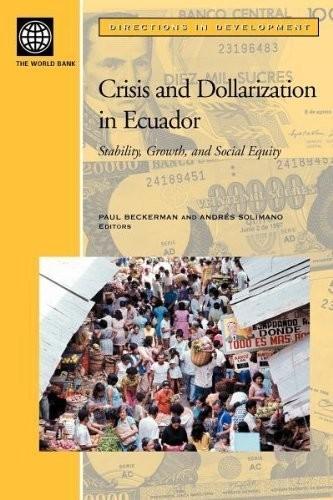
Crisis and Dollarization in Ecuador: Stability, Growth, and Social Equity
by
Paul Ely Beckerman
and
Andrés Solimano
Published 30 Apr 2002
As analyzed earlier, its targeting is not closely tied to the Bono Solidario, although its intended effects could in part duplicate the observed positive impact of the Bono Solidario in terms of raising school attendance. Another complement to the Bono Solidario is a microcredit program to be introduced in 2002. This program is targeted at beneficiaries of the Bono Solidario and other extremely poor beneficiaries to be selected through the SELBEN information system. These credits should support the development of household firms and thus the income-earning capacity of the poor. Credits are to be supplied through a new network of financial intermediaries. It is hoped the microcredit scheme will induce increases in productive investment and, over time, reduce dependence of beneficiary families on the Bono Solidario.
…
The Employment Plan 2001–2006 envisages a broad range of actions, partly building on the institutional infrastructure of existing programs to be used for expanding public employment in the short run (CIE 2001). A special interministerial committee was set up in early 2001 to coordinate actions to enhance employment creation through existing public invest- 162 CRISIS AND DOLLARIZATION IN ECUADOR ment plans in infrastructure (roads, housing, FISE), as well as through several new schemes of microcredits and vocational training. 6. Future Prospects A government strategy to offset the effects of the crisis would need three basic components: (a) protection of basic and targeted public services, (b) income or consumption support for vulnerable groups, and (c) new or expanded programs to prevent the crisis from doing permanent and irreparable harm to the poor.
…
Ecuador’s experience to date with the FISE, however, indicates that reaching this target might be difficult (Vos and others 2000) The government opted in 2001 for a more comprehensive approach to employment generation through public investment programs, social housing projects, the FISE, as well as through microcredits to small enterprises and the enhancement of vocational training programs. Much of this Employment Plan (see section 5) will be embedded in existing or planned actions, but will be coordinated by an Interministerial Commission for Employment with the involvement of local governments and NGOs. The plan envisages generating a total of 2 million new and improved jobs between 2001 and 2006 at a total budget of US$524 million.
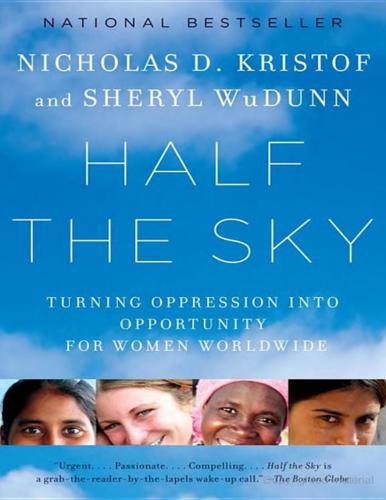
Half the Sky: Turning Oppression Into Opportunity for Women Worldwide
by
Nicholas D. Kristof
and
Sheryl Wudunn
Published 7 Sep 2008
.: Camfed, 2004), p. 11. 182 Half of Tanzanian women: Figures for abuse by teachers in South Africa, Tanzania, and Uganda come from Ruth Levine, Cynthia Lloyd, Margaret Greene, and Caren Grown, Girls Count: A Global Investment & Action Agenda (Washington, D.C.: Center for Global Development, 2008), p. 54. CHAPTER ELEVEN Microcredit: The Financial Revolution 188 Muhammad Yunus: See Muhammad Yunus, Banker to the Poor: Micro-Lending and the Battle Against World Poverty (New York: Public Affairs, 2003); David Bornstein, The Price of a Dream: The Story of the Grameen Bank (New York: Oxford University Press, 1996); Phil Smith and Eric Thurman, A Billion Bootstraps: Microcredit, Barefoot Banking, and the Business Solution for Ending Poverty (New York: McGraw-Hill, 2007). 192 A remarkable study: Edward Miguel, “Poverty and Witch Killing,” Review of Economic Studies 72 (2005): 1153. 193 The economists Abhijit Banerjee and Esther Duflo: Abhijit V.
…
—CHINESE PROVERB CONTENTS INTRODUCTION The Girl Effect CHAPTER ONE Emancipating Twenty-First-Century Slaves Fighting Slavery from Seattle CHAPTER TWO Prohibition and Prostitution Rescuing Girls Is the Easy Part CHAPTER THREE Learning to Speak Up The New Abolitionists CHAPTER FOUR Rule by Rape Mukhtar’s School CHAPTER FIVE The Shame of “Honor” “Study Abroad”—in the Congo CHAPTER SIX Maternal Mortality—One Woman a Minute A Doctor Who Treats Countries, Not Patients CHAPTER SEVEN Why Do Women Die in Childbirth? Edna’s Hospital CHAPTER EIGHT Family Planning and the “God Gulf” Jane Roberts and Her 34 Million Friends CHAPTER NINE Is Islam Misogynistic? The Afghan Insurgent CHAPTER TEN Investing in Education Ann and Angeline CHAPTER ELEVEN Microcredit: The Financial Revolution A CARE Package for Goretti CHAPTER TWELVE The Axis of Equality Tears over Time Magazine CHAPTER THIRTEEN Grassroots vs. Treetops Girls Helping Girls CHAPTER FOURTEEN What You Can Do Four Steps You Can Take in the Next Ten Minutes Appendix: Organizations Supporting Women Acknowledgments Notes INTRODUCTION The Girl Effect What would men be without women?
…
It’s Angeline. * Larry Summers offers an example to emphasize the distinction between correlation and causation. He notes that there is an almost perfect correlation between literacy and ownership of dictionaries. But handing out more dictionaries will not raise literacy. CHAPTER ELEVEN Microcredit: The Financial Revolution It is impossible to realize our goals while discriminating against half the human race. As study after study has taught us, there is no tool for development more effective than the empowerment of women. —KOFI ANNAN, THEN UN SECRETARY-GENERAL, 2006 Saima Muhammad would dissolve into tears every evening.

Make Your Own Job: How the Entrepreneurial Work Ethic Exhausted America
by
Erik Baker
Published 13 Jan 2025
Yunus and Grameen sought to combat poverty in Bangladesh by making small, high-interest loans to women (exclusively, since they were supposedly more responsible than men) interested in starting their own “microbusiness.”17 With backing from the Ford Foundation and buoyed by a wave of near-hagiographic press coverage, Yunus became a celebrity in development and anti-poverty circles in the 1980s and 1990s, in the United States and around the world.18 By the time he was awarded the Nobel Peace Prize in 2006, his legend was already assured, despite a mounting body of evidence calling the efficacy of his trademarked “microfinance” program into question.19 Yunus was a proud, self-identified “social entrepreneur.” The Grameen Bank, Yunus always reminded his readers, was not a charity but a fully solvent business. Microfinance did not merely seek to promote entrepreneurship but was itself an exemplary entrepreneurial endeavor. “Microcredit institutions are powerful because they are not about charity for the poor, but are based on business principles,” Yunus argued. “They are able to cover costs and so need not depend for too long on subsidy.”20 Yunus’s optimism about the power of social entrepreneurship was practically infinite. “By defining ‘entrepreneur’ in a broader way we can change the character of capitalism radically, and solve many of the unresolved social and economic problems within the scope of the free market,” Yunus argued in his Nobel Prize acceptance speech.
…
“Healthcare for the poor, financial services for the poor, information technology for the poor, education and training for the poor, marketing for the poor, renewable energy—these are all exciting areas for social businesses.”21 Some of Yunus’s followers took his advice more literally than he had intended, or so he later claimed. In the years after Yunus won the Nobel, a host of for-profit, publicly traded microcredit banks appeared around the world, from Mexico to India. “To ensure that the small loans would be profitable for their shareholders, such banks needed to raise interest rates and engage in aggressive marketing and loan collection,” Yunus himself reported in a New York Times op-ed decrying the trend.
…
The Aspen Foundation, a major microfinance backer, claimed in 2000 that “microenterprise programs in the United States have worked to assist welfare recipients to use self-employment as a means to move toward self-sufficiency.”48 Despite the Clintons’ enthusiasm for microfinance, much of the energy for the idea in the late 1980s and 1990s came from outside Arkansas. Beginning in 1988, the Corporation for Enterprise Development, a Washington, DC-based nonprofit, rolled out a microcredit program targeting welfare recipients in collaboration with state governments in Minnesota, Iowa, Michigan, Mississippi, and New Jersey. Under the program, the Self Employment Investment Demonstration, a small number of welfare recipients—following Yunus’s lead, only women were eligible—were selected to receive mentorship in devising a business plan, learning management skills, and perhaps most importantly, “thinking like entrepreneurs.”
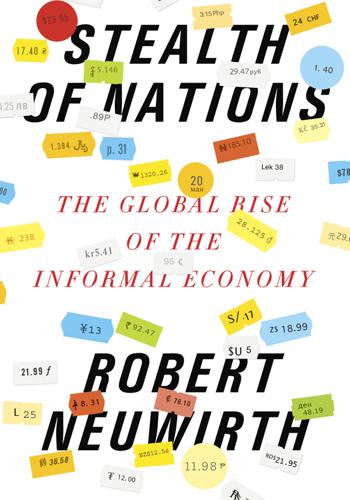
Stealth of Nations
by
Robert Neuwirth
Published 18 Oct 2011
At the same time, microcredit, which many in the West point to as a solution for the needs of small-scale merchants throughout the world, won’t help either. A subsistence microloan from a local bank, or through a Web-based entity like Kiva, which allows people in the West to support small-scale entrepreneurialism, is a valuable approach for the lowest tier of businesspeople (sadly, though, the combination of fees and interest charged on microloans are often higher than what is normally charged by banks). But Right Time Investments needs a bigger boost than the largest microcredit outfits can offer.
…
But Right Time Investments needs a bigger boost than the largest microcredit outfits can offer. Essentially, Andrew’s business is too micro for macrocredit and too macro for microcredit. Despite the impediments, Andrew refuses to be despondent. He believes Lagos will open itself to those who are committed and diligent. “Lagos is a city for hustling,” he told me. “If you have an idea and you are serious and willing to work, you can make money here. I believe the future is bright.” Then he marched off into the ashen air, ready to invest his energy once again in the trash-to-cash future. You might say that Patrick Anari is a human faucet in a thirsty city that doesn’t have a water system.
…
Customers also avoided making the lengthy trip to Panguila, the new location, and traders report a steep decline in business. “There are no customers,” a vendor told Agence France-Presse. “Before people could come to buy pants, or a CD. Now they aren’t going to spend 1,000 kwanzas [close to $11] on transport to come to Panguila.” In fact, business is so bad at the new market that Angola’s leading microcredit bank has determined that it will no longer make loans to the merchants there. And the final sad fact is that the city has announced nothing about how it intends to redevelop the central site where the market used to be. Similarly, when a new market was built a few years back in Nairobi, Kenya, national and local officials trumpeted it as a terrific plan to move all street hawkers off the downtown streets.
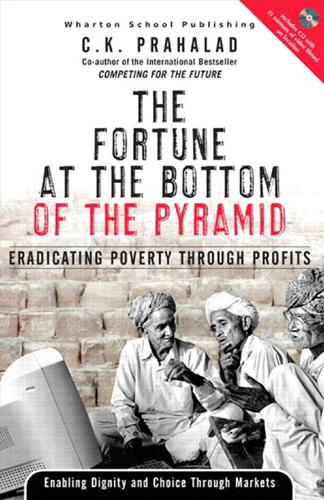
The fortune at the bottom of the pyramid
by
C. K. Prahalad
Published 15 Jan 2005
The world of MFIs is diverse—they exist in various legal forms, including nongovernmental organizations (NGOs), credit unions, nonbank financial intermediaries, and commercial banks. In the most recent meeting of the MicroCredit Summit in November 2002, there were more than 2,100 MFI entities in various forms that provided information on loans to more than 54 million clients. Their success has shown that poor people can be valuable clients of specially designed financial services. In 1997, the Micro-Credit Summit was formed to exchange ideas and start a global campaign dedicated to reaching 100 million of the world’s poorest families by 2005. Worldwide, there are more than 7,000 MFIs.
…
An additional strength was the Bank of Madura’s microfinance initiative. ICICI made it clear it intended to aggressively develop this initiative. P. H. Ravikumar, Senior Executive Vice President of ICICI Bank, stated that in “the area of micro-credit lending they also have a strong presence, especially in those areas where the lending is to self-help groups involved with handicrafts, weaving, etc. We will evaluate the micro-credit areas and wherever possible will try to grow them.”25 The merger was approved on March 10, 2001, by the RBI. With the merger, ICICI Bank Limited became one of India’s largest private-sector banks with total deposits of Rs. 13,460 crores.
…
For comparison, the State Bank of India, one of the oldest and largest banks in the country, had to financially support a network of more than 13,000 branches.19 As ICICI oriented the banking operations toward the BOP (see Figure 3), it began looking at entering the microfinance field because there certainly was and still is a vast unmet demand for credit in rural areas. “In rural areas, only one million households have received access to microcredit from MFIs.”20 Yet the competitive situation was relatively crowded. “India currently boasts more than 500 microfinance institutions.”21 However, the incumbents in this space were all struggling to turn profits because they were used to working as donorfunded and supported institutions. This dependence often affects scalability and sustainability.

Consumed: How Markets Corrupt Children, Infantilize Adults, and Swallow Citizens Whole
by
Benjamin R. Barber
Published 1 Jan 2007
But a $50 loan repaid at $80 after a year that established a real business which lifted a family out of poverty was a pretty good deal for lender and borrower alike.43 And although Yunus insisted on credit as a right, he also understood that lender institutions had to be sustainable, which is to say at least marginally profitable.44 This was not philanthropy, but prudent market investment that helped create the market in which it invested. A decade after Yunus’s pioneering work, microcredit has become an important tool of the international aid and development community and has made the Grameen Bank a model of how finance capitalism can contribute to development without altogether slighting profit. The year 2005 was the International Year of Microcredit, widely supported by the IMF, the World Bank, and the United Nations. The microcredit strategy has been used throughout the Third World, and been the subject of some experimental work in Third World enclaves inside the First World, in Los Angeles, for example.
…
These include the experiments proposed by three imaginative economic pioneers: C. K. Prahalad’s strategy of mining “the fortune at the bottom of the [consumer] pyramid” by turning the world’s poor into paying consumers; Muhammad Yunus’s idea for lifting women and their families out of poverty through microcredit, a small-loan program for the impoverished to jump-start market development in communities barred by poverty from market participation; and Hernando de Soto’s inventive idea of addressing poverty by legalizing informal and black-market elements of the private economy that represent real but largely unrealized wealth among populations that are poor in name rather than substance—if their invisible wealth can be unlocked.
…
Yunus saw that in the developing world the difference between an impoverished mother unable to meet the needs of her own children and a village dynamo helping the whole community rise up out of poverty might be a microloan of a few dollars, enabling her to start up (for example) a modest cottage-industry basket business. Microcredit can turn the poor into self-employed producers, and transform the needy into viable consumers in the global marketplace. Like Prahalad, Yunus also understood that discourse and ethos were at stake. His most radical innovation was thus to treat credit as a right, urging banks to rely on trust and the engagement of the bank itself in guiding the client’s investment as collateral to secure the loan.
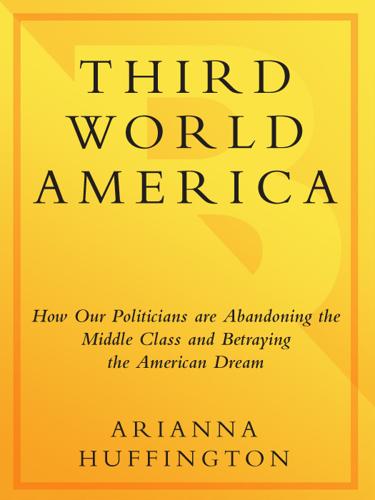
Third World America: How Our Politicians Are Abandoning the Middle Class and Betraying the American Dream
by
Arianna Huffington
Published 7 Sep 2010
Harlem Children’s Zone, www.hcz.org. 140 Susie Buffett offers another shining example: Quotes and materials provided by Susie Buffett to the author in conversation and by email, May 2010. 141 In The Empathic Civilization, Jeremy Rifkin: Jeremy Rifkin, The Empathic Civilization: The Race to Global Consciousness in a World in Crisis (New York: Penguin, 2009), 12. 142 New scientific data tells us: Ibid., 47. 143 “An individual,” said Martin Luther King: Martin Luther King Jr., The Measure of a Man (Minneapolis: Augsburg Fortress, 2001), 43. 144 the Huffington Post published a story about Monique Zimmerman-Stein: Julian Hattem, “Mom Goes Blind So Her Daughters Can See,” 28 Sep. 2009, www.huffingtonpost.com. 145 The Stein family’s story struck: Victoria Fine, “Help the Steins: Mother Who Went Blind to Save Her Children’s Sight Struggles with Medical Debt,” 13 Oct. 2009, www.huffingtonpost.com. 146 “We are on the cusp of an epic shift”: Jeremy Rifkin, The Empathic Civilization: The Race to Global Consciousness in a World in Crisis (New York: Penguin, 2009), 3. 147 “Seven billion individual connections”: Ibid., 594. 148 In his 1963 work “Letter from a Birmingham Jail”: Martin Luther King Jr., “Letter from a Birmingham Jail,” www.africa.upenn.edu. 149 Conservative commentator Tony Blankley: Left, Right and Center, 15 Jan. 2010, www.kcrw.com. 150 As America’s Misery Index soars: www.miseryindex.us. 151 “We have to lean on one another …”: Barack Obama, eulogy for West Virginia Miners, 25 Apr. 2010, www.whitehouse.gov. 152 David Brooks has written about the need: David Brooks, “The Broken Society,” 18 Mar. 2010, www.nytimes.com. 153 “Volunteering, especially among professional classes and the young”: Philip Blond “Cameron’s ‘Big Society,’ ” 25 Apr. 2010, www.guardian.co.uk. 154 In 2002 in San Francisco’s Mission district: “About 826,” www.826valencia.org. 155 In Brooklyn, New York, FEAST: Danny LaChance, “An Idea Grows in Brooklyn,” University of Minnesota Alumni Association, spring 2010, www.minnesotaalumni.org. 156 Matthew Bishop, U.S. business editor for the Economist: Howard Davies, “A New Take on Giving,” 10 Jan. 2009, www.guardian.co.uk. 157 Social entrepreneurs pinpoint social problems: Caroline Hsu, “Entrepreneur for Social Change,” 31 Oct. 2005, www.usnews.com. 158 Providing microcredit to small businesses: Devin Leonard, “Microcredit? To Him, It’s Only a Start,” 30 Apr. 2010, www.nytimes.com. 159 In 2008, Yunus’s Grameen bank opened a branch in New York: “About Us,” www.grameenamerica.com. 160 In 2010 it opened a branch in Omaha, Nebraska: “Grameen America Celebrates Grand Opening of Omaha Branch,” 24 Feb. 2010, www.grameenamerica.com. 161 The Grameen Bank’s slogan: “Banking for the unbanked”: Emily Belz, “Recession-Proof Banking?”
…
Social entrepreneurs pinpoint social problems and, rather than waiting for government action, apply market principles to solve them in original ways.157 Supported by investment funds from organizations such as Echoing Green, Ashoka, and Investors’ Circle, trailblazing social ventures are reenvisioning the way social change happens, not only abroad, but here at home, too. Providing microcredit to small businesses is an innovation for which Muhammad Yunus won the Nobel Peace Prize in 2006.158 In 2008, Yunus’s Grameen Bank opened a branch in New York.159 In 2010 it opened a branch in Omaha, Nebraska.160 The Grameen Bank’s slogan: “Banking for the unbanked.”161 Hoping to serve one million American entrepreneurs, Grameen America plans to expand into more than fifty cities across the country, including Washington, D.C., and San Francisco.162 A practice most closely associated with helping struggling Third World countries has now arrived in America.
…
Providing microcredit to small businesses is an innovation for which Muhammad Yunus won the Nobel Peace Prize in 2006.158 In 2008, Yunus’s Grameen Bank opened a branch in New York.159 In 2010 it opened a branch in Omaha, Nebraska.160 The Grameen Bank’s slogan: “Banking for the unbanked.”161 Hoping to serve one million American entrepreneurs, Grameen America plans to expand into more than fifty cities across the country, including Washington, D.C., and San Francisco.162 A practice most closely associated with helping struggling Third World countries has now arrived in America. By February 2010, the New York branch had extended loans to 2,500 clients, mostly women. The average loan amount is $1,500 (no collateral necessary) and more than 99 percent of the recipients make their payments on time.163 Grameen Bank is not the only organization committed to providing microcredit to small businesses here at home. Since 1991, ACCION USA has lent over $119 million, in the form of more than 19,500 small-business loans, to low- and moderate-income entrepreneurs.164 Luis Zapeda Alvarez, for example, who was once homeless and out of work, now runs his own business delivering baked goods to New York City restaurants and delis—in large part due to the assistance he received.165 After banks refused to lend him start-up capital, Alvarez approached ACCION and borrowed enough money to buy the delivery truck he needed to get his business off the ground.
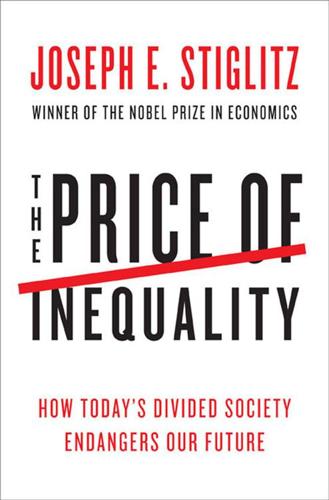
The Price of Inequality: How Today's Divided Society Endangers Our Future
by
Joseph E. Stiglitz
Published 10 Jun 2012
In fact, around the world the poor are sinking in debt as a result of the spread of the same rogue capitalism. India had its own version of a subprime mortgage crisis: the hugely successful microcredit schemes that have provided credit to poor farmers and transformed their lives turned ugly once the profit motive was introduced. Initially developed by Muhammad Yunus of the Grameen Bank and Sir Fazle Hasan Abed of BRAC in Bangladesh, microcredit schemes transformed millions of lives by giving the poorest, who had never banked, access to small loans. Women were the main beneficiaries. Allowed to raise chickens and engage in other productive activities, they were able to improve living standards in their families and their communities.
…
In India the banks seized upon the new opportunities, realizing that poor Indian families would pay high interest rates for loans not just to improve livelihoods but to pay for medicines for sick parents or to finance a wedding for a daughter.28 They could cloak these loans in a mantle of civic virtue, describing them as “microcredit,” as if they were the same thing that Grameen and BRAC were doing in neighboring Bangladesh—until a wave of suicides from farmers overburdened with debt called attention to the fact that they were not the same. THE MORTGAGE CRISIS AND THE ADMINISTRATION OF THE RULE OF LAW When the subprime mortgage crisis finally broke wide open, precipitating the Great Recession of 2008, the country’s response to the ensuing flood of foreclosures provided a test of America”s “rule of law.”
…
In the United States beginning in 1980, federal laws increasingly preempted state laws that attempted to restrict usury. 27. See C. K. Prahalad, The Fortune at the Bottom of the Pyramid: Eradicating Poverty through Profits (Upper Saddle River, NJ: Prentice Hall, 2005). 28. The former governor of the Reserve Bank of India explicitly made the link between microcredit in India and America’s subprime lending: Y. V. Reddy “Microfinance in India Is like Subprime Lending,” Economic Times, November 23, 2010, available at http://articles.economictimes.indiatimes.com/2010-11-23/news/27602978_1_priority-sector-lending-sks-microfinance-microfinance-industry. 29. The FBI’s mortgage fraud unit reports that fraud continued to be elevated into 2010.
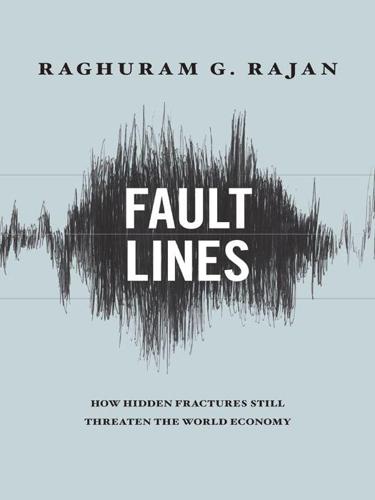
Fault Lines: How Hidden Fractures Still Threaten the World Economy
by
Raghuram Rajan
Published 24 May 2010
Few “solutions” hold more support and promise up front, and lead to more recrimination after the fact, than opening the spigot of lending. For poor countries there is a strong parallel with the past enthusiasm for foreign aid. Now we know that aid leads to dependency, indebtedness, and poor governance and rarely leads to growth.53 The new miracle solution is microcredit—lending to the poor through group loans, a system in which peer pressure from the group makes individuals more likely to repay. Although it has promise on a small scale, history suggests that when scaled up, and especially when used as an instrument of government policy, it will likely create significant problems.
…
The second way the Fund overreached was in setting conditions, often dictated by its major shareholders such as the United States, that attempted to reform the East Asian countries according to Western notions of governance. For instance, Indonesia was asked to undertake 140 or so actions in 1998, including disbanding the clove monopoly, strengthening reforestation programs, and introducing a microcredit scheme. To the cynic—and cynics were sometimes correct—these moves were really intended to open up large protected segments of the country to Western firms and advocacy groups. Although some of these measures may have benefited the country in the long run, these were decisions for the people themselves to take, not for foreign officials to require when the country was flat on its back.
…
See higher education Community Reinvestment Act (CRA) conglomerates consumption: in China in developing countries discouragement of of energy excess in Japan of middle class political pressure for economic stimulus to in United States contingent capital corruption CRA. See Community Reinvestment Act credit: benefits and costs of easy definition of democratization of credit card debt credit default swaps credit markets: access to in developing countries expansion of government intervention in informal microcredit political pressure for easy credit See also subprime mortgage market credit ratings, of mortgage-backed securities crises. See financial crises crony capitalism currencies. See exchange-rate policies current-account balances debt: consumer government household negative views of,See also credit markets; foreign debt; mortgages Defoe, Daniel, A Plan of the English Commerce demand: in housing market interest rate levels and in United States, See also consumption democracies democratization of credit Dennis, William deposit insurance deregulation developing countries: central banks of consumption in current-account surpluses of economic growth of excess savings of exchange-rate policies of, financial systems of foreign debt of foreign exchange reserves of foreign investment in microcredit in organizational capital in poverty in trade deficits of trade surpluses of Dimon, Jamie disability payments dot-com bubble Douthat, Ross early developers earthquake, Haitian earthquake insurance East Asia.
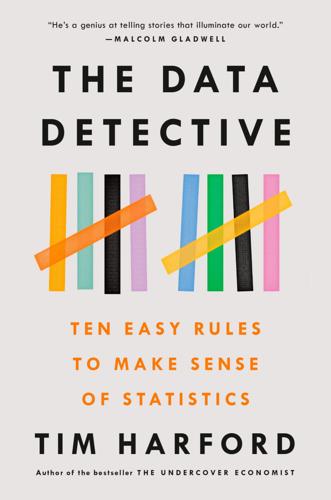
The Data Detective: Ten Easy Rules to Make Sense of Statistics
by
Tim Harford
Published 2 Feb 2021
An earlier version was published in 1976 and a conference paper existed in 1974. 14. Abhijit Banerjee, Dean S. Karlan, and Jonathan Zinman, “Six Randomized Evaluations of Microcredit: Introduction and Further Steps,” American Economic Journal: Applied Economics 7, no. 1 (2015), 1–21; and Rachel Meager, “Understanding the Average Effect of Microcredit,” VoxDev, July 1, 2019, https://voxdev.org/topic/methods-measurement/understanding-average-effect-microcredit. 15. Anna Rosling Rönnlund, “See How the Rest of the World Lives, Organized by Income,” a talk presented at a TED conference, April 2017, https://www.ted.com/talks/anna_rosling_ronnlund_see_how_the_rest_of_the_world_lives_organized_by_income?
…
Professor Yunus, paying close attention to the lives of poor women around him in Bangladesh, saw an opportunity to improve their lives by giving them access to less expensive loans, unleashing a generation of microentrepreneurs. But that up-close intuition needs to be cross-checked with some statistical rigor. The microcredit schemes that Yunus did so much to popularize have now been examined more thoroughly, using randomized trials in which a group of otherwise similar people applying for small loans are either approved or rejected at random. (This is like a clinical trial in which some patients get a new drug while others get a placebo.)
…
See health and medical data Medicare, 199 Meehl, Paul, 167 Mellers, Barbara, 252 memes, 42 memory and criminal sentencing, 168 and data visualization, 217–18 and forecasting failures, 248–49, 251, 254 and Milgram experiment, 138 and “precognition” study, 111 and scale of numerical comparisons, 95 and value of imagery, 64 Merkel, Angela, 191 Messy (Harford), 57–58, 203 Metropolitan Police (London), 199 microcredit, 61 Microsoft, 175 Milgram experiment, 138–39 Milkmaid, The (Vermeer), 21, 31 Millikan, Robert, 244–47, 260 Mills, Wilbur, 186 mindfulness meditation, 134 miscarriages, 66 misconceptions of statistics, 55–56 misinformation, 3, 26, 41, 223. See also visualization of data misleading claims, 107 missing data, 135–52 and gender issues, 138–42 limits of combating, 151–52 and sample bias, 135–38, 142–51 MissingNumbers.org, 135 mixed-gender groups, 138 Modi, Narendra, 196 moiré patterns, 223 Molière, 32 monocultures, 137 Moore, Alan, 105 Moore, Don, 252 More or Less (radio show), 10, 11, 47, 68, 71, 93, 213, 266–67, 276 mortality rates, 65–67 Mosteller, Frederick, 15n motivated reasoning, 27–29, 32–39, 131, 268 Moy, Will, 143 Mullainathan, Sendhil, 169 Muller, Jerry Z., 57 multiple-occupancy housing, 148 murder rates, 55, 87–89, 88n “N = All” assumptions, 150, 152, 155 naive realism, 54–55 Naked Statistics (Wheelan), 2 Nasar, Sylvia, 262 National Aeronautics and Space Administration (NASA), 217 National Gallery, London, 256 National Health Service (NHS), 74, 159 National Safety Council, 72 national statistics.
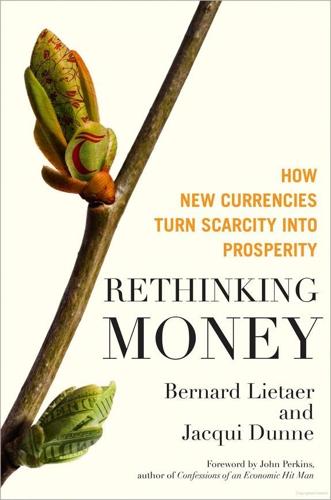
Rethinking Money: How New Currencies Turn Scarcity Into Prosperity
by
Bernard Lietaer
and
Jacqui Dunne
Published 4 Feb 2013
Its annual revenue is 32 billion euros.17 Henk Van Arkel of STRO recalled the early days of the system in the Palmeira settlement: “We put aside the money for building a school in Fortaleza, Brazil. We asked the donor, the Dutch NGO ICCO, to be patient. The school would get built, but instead we planned to first put local currency, called fomentos, in circulation in the form of microcredits backed by the donor money in the bank. At the start, nobody knew what fomentos were, but the Banco Palmas reps asked people, mostly vendors, who were getting these loans to put signs in their windows saying, ‘Fomentos accepted here.’ Notices were very quickly all over the place. Then Banco Palmas went to builders and asked them to accept payment in fomentos.
…
Support for “community development banks” issuing new currency is now official state policy. In 2006, Banco Popular do Brazil, the largest public bank in the country, became a partner of the Brazilian Network of Community Development Banks (CDB), a guarantor of credit lines based on the criteria from PMNPO (National Program of Oriented Productive Microcredit). The CDB estimates that this microloan program had an impact on the lives of more than 200,000 people. There are currently 78 community banks. Banco Palmas has created over 1,800 jobs and sparked the creation of similar dual currency banking already operational now in some 66 communities around Brazil with the full support of the Brazilian government and the nation’s Central Bank. 108 PROSPERITY FROM HUMBLE BEGINNINGS Aurineide Alves Cordeiro, a resident of Conjunto Palmeira, asked for her first loan of less than $100 more than 14 years ago.
…
Using money from a Dutch government program, he was able to hire full-time and part-time employees to research currency models following STRO’s early adventures into implementing LETS systems in the Low Countries. Keenly aware that business is the backbone of any community, Van Arkel focused on the successes in South and Central America of microcredit lending and started to look for new designs and models. Van Arkel remembers, “We started with the relations we had at the time. The manager that we had in Porto Allegre, Brazil, was a former director of the UN small enterprise program. Prior to working with us, he had initiated a program in Uruguay and introduced IT and new technologies and other innovations.

Beautiful Solutions: A Toolbox for Liberation
by
Elandria Williams, Eli Feghali, Rachel Plattus
and
Nathan Schneider
Published 15 Dec 2024
Community-controlled finance is about building power. Consider an example from Quebec, a province known for its long history of cooperative entrepreneurship and innovation around social finance. MicroCrédit Montréal puts into practice the original ideals of the movement that shares its name. Aware of the potential risks of microlending, they have developed measures to avoid the cycles of extraction and exploitation into which some other microlending has fallen. MicroCrédit Montréal emerged in 1990 from the Milton Park neighborhood, the site of important housing rights organizing that led to the creation of a multi-unit housing cooperative in the early 1980s.
…
All the fund’s earned interest is returned to the capital pool, which covers the interest paid to investors, as well as any losses. Then, that growing capital pool can go out into the community as new loans. “THE TRUST THAT WE GRANT THROUGH LOANS TO PEOPLE WHO FACE SYSTEMIC BARRIERS ALLOWS THEM TO TAKE THEIR FUTURE IN HAND WITH DIGNITY.” —MICROCRÉDIT MONTREAL MCM’s employees, whose wages come from outside fundraising, support prospective borrowers throughout the entire loan-application process. A committee composed of volunteers and a member of the board of directors reviews completed applications; investors do not have a voice in that process.
…
Although loans officially last up to three years, loan officers are flexible about life’s uncertainties and have the power to postpone loan repayments in some situations, in order to avoid placing borrowers in a situation where they are unable to repay. What began as a local project has created spin-offs across the province, with 17 agencies under the umbrella of Micro Entreprendre. This is a model that depends on local knowledge and local power, but it can be replicated in many contexts. LEARN MORE WEBSITE MicroCrédit Montreal. microcreditmontreal.ca GUIDE “Community Investment Funds How-to Guide” by Sarah Amyot. (2014) ccednet-rcdec.ca/resource/community-investment-funds-how-to-guide GUIDE “British Columbia Community Investment Cooperative Start-Up and Operations Guide - Make an Impact” by Eden Yesh. (2020) tiip.ca/british-columbia-community-investment-cooperative-start-up-and-operations-guide-make-an-impact STORY NDN FUND Solar project on the Navajo Nation lands.
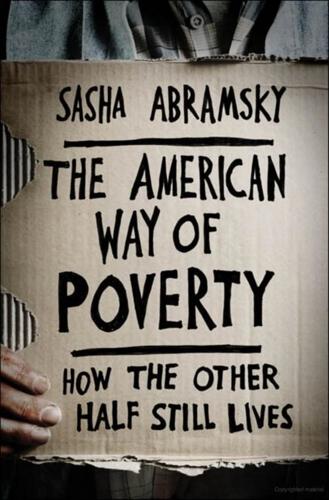
The American Way of Poverty: How the Other Half Still Lives
by
Sasha Abramsky
Published 15 Mar 2013
Had she had a guaranteed income years earlier, however, she wouldn’t have been stuck in a violent, abusive situation for as long as she was. She would have had the means to move much sooner, to start the next stage of her life without worrying that her kids would be out on the street. WHEN SMALLER IS BETTER Beyond the guaranteed income, state governments should also experiment more with state-backed micro-credit lending for low-income communities. Such lending seeds startup businesses in much of the developing world, yet, despite its documented success in raising numbers of borrowers out of poverty in countries such as Bangladesh, there has been a paucity of it within the United States. Yes, the Small Business Administration provides low-interest, long-term loans to organizations such as the Milwaukee-based Wisconsin Women’s Business Initiative (WWBI), which then leverage that money to raise additional low-interest loans from private banks, which can then be turned around and loaned at a slightly higher rate of interest to poor Americans looking to start their own companies.
…
Why not use some of the revenues raised from a financial transactions tax to put the federal government directly into the micro-loan business? Why not open up these loans to employees wanting to buy out retiring company owners and create worker-owned cooperatives? Why not, asked Wendy Baumann, executive director of WWBI, create a national micro-credit lending pool into which the government, as well as private banks, could contribute? In 2008 and 2009, such contributions could have been one of the conditions upon which the feds provided banks with bailout money. These days, such contributions could be one of the requirements for banks wanting the umbrella of FDIC insurance.
…
See Aid to Families with Dependent Children Affordable Care Act, 224, 298 African Americans, 9–10, 25, 81, 128–129, 129–130, 186 and education, 26 and housing, 172–173 and Hurricane Katrina, 155–156 Agassi, Andre, 276 Aid to Families with Dependent Children (AFDC), 45, 107, 216–217, 218, 232 Alabama, 103, 106, 131, 289 Alaska, 251 Albelda, Randy, 206, 218, 233 Alfond, Harold, 256–257 American Airlines, 312 American Bankers Association conference (Chicago, 2009), 36 American Legislative Exchange Council, 178, 179, 205 American Recovery and Reinvestment Act, 100, 110, 218, 278 Anti-poverty strategies, 197–198, 199–205 and automatic stabilizers, 231–232 and automatic triggers/coordinated efforts, 228–229 and benefit corporations, 310–311 and community building, 308–309, 309–312 and disability insurance, 304–306 and domestic workers, 297–298 and Earned Income Tax Credit, 233, 287–294, 295–296, 299–300, 300–301 and economic downturns, 218–220 and education, 274–283 and existing programs, 287–317 and food stamp program, 220–223, 232 and green jobs and industries, 264–266 holistic approach to, 229–231 and homelessness, 269–270, 283–284 and housing, 266–269, 283–284 and income guarantee, 294–297 and infrastructure, public and private, 263–264 and job training/retraining programs, 305–306, 306–310 and living wage, 295–296, 297, 298–299, 305 and Medicaid, 224–227 and Medicare, 311, 314–315, 316 and minimum wage, 297, 299–300, 305 and mortgage foreclosures, 270–274 and pensions, 311–313, 313–315 and public works programs, 301–304 punishment-based vs. incentive-based approach to, 233, 234 and school meals, 223–224 and Social Security, 311, 313–315, 315–316, 316–317 and state banks, 263–266 and taxes, 263, 264, 266, 298–300 and unions, 297–298 and will to reform, 227–229, 326–327 See also Poverty; War on Poverty Appalachia, 54, 131–132 Appalachian Pennsylvania, 18–20 Appalachian Regional Development Act, 202 Arizona, 91, 106, 300 Arkansas, 106, 107 As Texas Goes (Collins), 179 Asian Americans, 24–25, 26 Aspen Institute, FIELD program, 254 Atlanta, 103, 229 Attwell, Steven, 302–303, 305 Automatic stabilizers, 121, 218, 231–232 Automatic triggers/coordinated efforts, 228–229 Autor, David, 304 Bachmann, Michele, 119–120 Bacon, Pastor Ed, 230–231 Baker, Dean, 244–247 Bankruptcy, 56, 57–58, 175, 312–313 Banks/bankers, 36, 58–59. See also Micro-credit lending; Mortgage foreclosures; State banks Barbour, Haley, 120 Barry, Artensia, 171–172 Bartholow, Jessica, 98, 99, 120, 218–219, 223 Baumann, Wendy, 254–255 BCC credit union. See Boston Community Capital credit union Beck, Glenn, 92 Benefit corporations, 310–311 Bernanke, Ben, 165 Bethlehem Steel, 312 Bing, David, 185 Bismarck, Otto von, 71 Blaming the poor, 8, 44, 58, 61, 119 Blockett, Nekedra, 151–153 Bloomberg, Michael, 108 Boehner, John, 119 Boeing, 83 Booker, Alicia, 109, 110 Booth, Charles, 65 Boston, 173, 271–273 Boston Community Capital (BCC) credit union, 271–272 Brady, Diane, 102 Brazil, 251 Brown, Jerry, 218 Buchanan, Pat, 37–138 Buckley, William, 290 Budget deficit, 39–40, 47–48, 99, 119–122, 198 Buffett, Warren, 4, 39, 244 Burke, Robert, 184 Bush, George H.
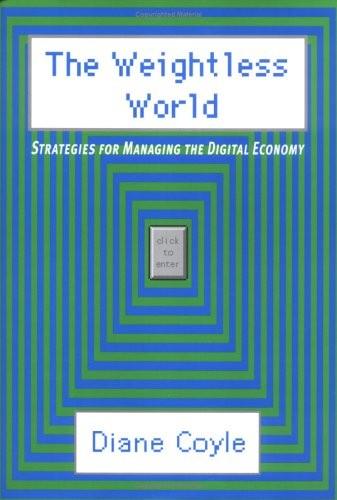
The Weightless World: Strategies for Managing the Digital Economy
by
Diane Coyle
Published 29 Oct 1998
Even those who seemingly have no conceptual thought, no ability to think of yesterday or tomorrow, are in fact quite intelligent and expert at the art of survival. Credit is the key that unlocks their humanity.’ From these small beginnings, microcredit has been given the seal of approval by the World Bank, which had itself made $200 million available for tiny loans in developing countries by the end of 1995. World Bank figures put the amount of such loans in Bangladesh alone at $520 million by that time, involving 4.8 million borrowers. By the end of 1996 it estimated that there were more than 7000 microcredit programmes serving 16 million people in developing countries with loans worth $2.5 billion. Almost none of the funds came from government sources.
…
It is one of many possible forms in which there can be meaningful activity and work in an increasingly weightless economy where many traditional job opportunities are vanishing. Local financing Another approach is one born of an astonishingly successful initiative in the developing world known as microcredit. The vision of one man, Muhammad Yunus, who founded Bangladesh’s Grameen Bank has grown into a worldwide lending network amounting to hundreds of millions of dollars — all in loans of no more than a few thousand dollars each and often far less than that. Yunus, an economist, founded Grameen in the mid-1970s when he was head of the economics department at Chittagong University.
…
Almost none of the funds came from government sources. In the light of this success it is not surprising that projects involving microcredit in the developed world should have started to spring up. They are seen as an extension of well-established social investment programmes. One of the best-known of these is Chicago’s South Shore Bank. It was founded in 1973 by investors who wanted to put their money to socially useful ends by lending money locally to people seen as bad risks by other banks, and some of the loans have been tiny in scale. Most of the lending has been for redevelopment of the neighbourhood’s housing.
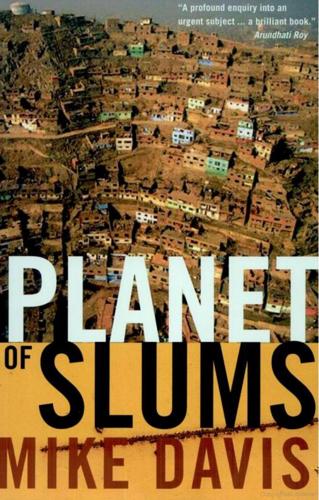
Planet of Slums
by
Mike Davis
Published 1 Mar 2006
Hernando de Soto, of course, is internationally famous for arguing that this enormous population of marginalized laborers and expeasants is a frenzied beehive of proto-capitalists yearning for formal property rights and unregulated competitive space: "Marx would probably be shocked to find how in developing countries much of the teeming mass does not consist of oppressed legal proletarians but of oppressed extralegal small entrepreneurs''20 De Soto's bootstrap model of development, as we have seen, is especially popular because of the simplicity of his recipe: get the state (and formal-sector labor unions) out of the way, add micro-credit for micro-entrepreneurs and land titling for squatters, then let markets take their course to produce the transubstantiation of poverty into capital. (De Soto-inspired optimism, in its most absurd version, has led some development-aid bureaucrats to redefine slums as "Strategic Low-Income Urban Management Systems.")21 This semi-utopian view of the informal sector, however, grows out of a nested set of epistemological fallacies. 18 Obetai, Population Growth, Employment andPoverty in Third-World Mega-Cities, p. 64.
…
For example, in their study of the household economy of the Klong Thoey slum in the port of Bangkok, Hans-Dieter Evers and Rudiger Korff discovered that fully 20 percent of neighborhood income was redistributed through gambling and share games.33 Throughout the urban Third World, moreover, religious devotion revolves around attempts to influence fortune or importune good luck. Seventh, under such conditions, it is not surprising that initiatives such as micro-credit and cooperative lending, while helpful to those informal enterprises managing to Wead water, have had little macro impact on the reduction of poverty, even in Dhaka, the home of the world-famous Grameen Bank.34 Indeed, stubborn belief in "leveraging the micro-enterprise," writes Jaime Joseph, a veteran community 32 Clifford Geertz, Agricultural Involution: The Processes of Ecological Change in Indonesia, Berkeley 1963, pp. 80-82.
…
McGhee uses the "urban involution" metaphor in "Beachheads and Enclaves: The Urban Debate and the Urbanization Process in Southeast Asia since 1945," in Y. M. Yeung and C. P. Lo (eds), Changing South-East Asian Cities: Readings on Urbanisation, London 1976. 33 Evers and Korff, Southeast Asian Urbanism, p. 143. 34 Serajul Hoque, "Micro-credit and the Reduction of Poverty in Bangladesh," journal of Contemporary Asia 34:1 (2004), pp. 21, 27. organizer in Lima, has become something of an urban cargo cult amongst well-meaning NGOs: "There has been much emphasis placed on small or micro-enterprises as the magic solution in offering economic development for the urban poor.
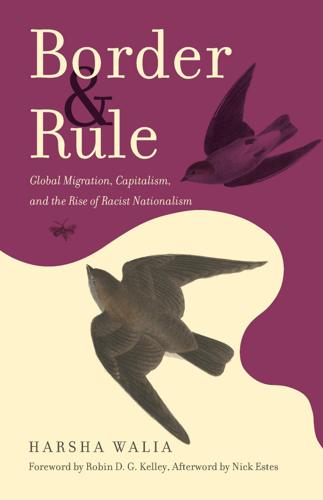
Border and Rule: Global Migration, Capitalism, and the Rise of Racist Nationalism
by
Harsha Walia
Published 9 Feb 2021
Tayyab Mahmud argues that expansion of debt is as essential to neoliberalism as privatization and financialization in order to immobilize and impose precarity on the workforce.15 David Harvey goes further: “Creation of indebtedness from within the financial system becomes a persistent driver of further accumulation.”16 Harvey’s assertion is illustrative, given the rapid expansion of micro-credit initiatives, such as the Grameen Bank, across Bangladesh. In 2015, twenty-nine million people in Bangladesh had microcredit loans.17 Offering small loans to borrowers, microcredit lenders often charge exorbitant interest rates and require almost instant repayment, thus creating a cycle of debt. First-time borrowers, particularly women, are ensnared in formal contractual obligations to repay, propelling neoliberal financialization, dispossession of assets, exploitative wage-labor markets, and risky and desperate measures, such as organ sales, to pay off debt.18 Dispossession and debt also work together to expand the system of bonded labor and intensify the dispossession of Indigenous communities.
…
Such land dispossession generates property relations; as Saskia Sassen writes, these are “accelerated histories and geographies in the making.”62 Women are not only disproportionally impacted, but neoliberal accumulation itself structures gendered relations. This can be traced back to the imposition of a colonial gendered ideology, which Amina Mama depicts as “European chauvinistic constructions of femininity and a marginalizing ideology of domesticity” impacting the status of African women.63 Despite neoliberal poverty reduction schemes, like microcredit, geared toward rural women’s entry into formal land registration mechanisms and wage-labor markets, Lyn Ossome contends that neoliberal land regimes exacerbate African women’s dispossession from land by foreclosing customary kinship-based land use as a political process. Ossome maintains: “Arguments that favor formalization of customary land rights expose motives that are less in the interest of women’s tenure security and more inclined toward supporting commercial interests in land.”64 Silvia Federici similarly demonstrates that capitalist extraction, enclosures of land, and forced entry into labor markets result in the cumulative attrition of women’s socioeconomic relations and consequently intensify gendered violence.65 It is not surprising, then, that women form the forefront of movements against land grabbing.
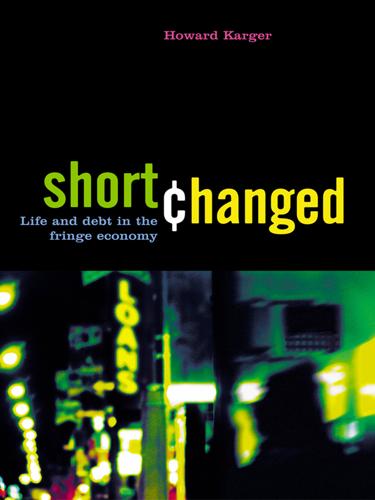
Shortchanged: Life and Debt in the Fringe Economy
by
Howard Karger
Published 9 Sep 2005
In fact, the growth of the bank was so stunning that in only 28 years it grew to 1,326 branches, had 12,903 staff members, and operated in 48,000 of Bangladesh’s 68,000 villages. Using the concept of microcredit, the Grameen Bank offers collateral-free loans sometimes worth just a few U.S. dollars and rarely more than $200. The bank doesn’t provide charity—it charges an annual interest rate of 20% and is strict about the terms. Ninety-eight percent of the loans are repaid.11 In 1987 former president Bill Clinton, then the governor of Arkansas, approached the Grameen Bank to ask for help in replicating the model in the United States. Although at one point there were 20 Grameen-style programs in the United States, the microcredit concept never really took hold on a large scale.
…
Although at one point there were 20 Grameen-style programs in the United States, the microcredit concept never really took hold on a large scale. Nevertheless, through one form or another, several groups continue to work toward developing the concept of microcredit in the United States, and it continues to represent a viable model for local community development. The federal government is involved in helping the unbanked get banked. For example, the Federal Deposit Insurance Corporation (FDIC) created the Money Smart program, an educational outreach initiative aimed at increasing financial literacy. The U.S. Treasury’s First Accounts program is designed to make basic financial institution accounts available to low- and moderate-income consumers.

How to Speak Money: What the Money People Say--And What It Really Means
by
John Lanchester
Published 5 Oct 2014
P2P A term all the vogue in certain circles at the moment: it means peer to peer, and in the context of finance refers to lending, usually in the form of microcredit or small loans. A number of companies are offering this service as a way of providing, on the one hand, access to credit for people who are finding it difficult to obtain it through conventional channels and, on the other, a way of earning a decent rate of interest on money while also doing something socially useful. The growth of P2P is an extension of the ideas of the Nobel Peace Prize–winning Bangladeshi economist Muhammad Yunus, who came up with the idea of microcredit, or small loans to people too poor to have access to conventional bank credit.
…
P2P is controversial because the rates of interest can be high and also because it is a way of profiting from the poor—even if it is a creative, flexible, useful, and much-appreciated way of profiting from the poor. It is an example of capitalism at its most flexible and creative, rather than any kind of challenge to the capitalist order. At the same time, P2P lending and microcredit also begin to raise the question, what exactly are banks for? It has long been an irony of economics that in a purely efficient market, banks would not exist. Lenders with excess capital would directly seek out borrowers who need the capital, and both would benefit from the transaction, rather than the current model in which banks borrow money at say 0.25 percent and lend it at 5 percent and pocket the difference.
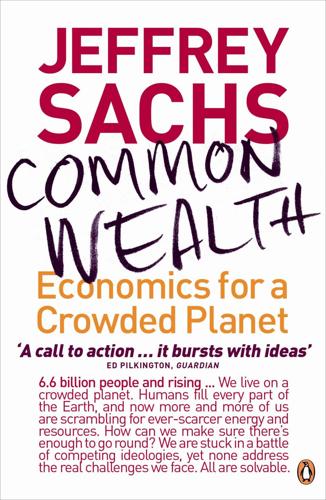
Common Wealth: Economics for a Crowded Planet
by
Jeffrey Sachs
Published 1 Jan 2008
Nongovernmental organizations have repeatedly played a pivotal role in identifying local needs, proving new technologies, and perhaps most important, identifying novel implementation strategies. Perhaps the leading example of NGO leadership in recent years has been in the area of microcredit, pioneered by Nobel laureate Muhammad Yunus of Bangladesh and described in his book Banker to the Poor. Microcredit has revolutionized banking by making it possible for the very poor to take out small loans without collateral. The idea is that by lending to small groups rather than to individuals, collateral can be replaced by trust and group enforcement, since the group monitors its own members and ensures repayment.
…
The loans also have the advantage of breaking the reliance of the poor on moneylenders who charge such high interest rates that the poor who borrow from them can never repay their debts. Microcredit was unrolled gradually, first at the level of one village, then across one district, followed by several districts and, eventually, the entire country. The model evolved into a full-fledged financial institution, the Grameen Bank, which has more than seven million borrowers today. Grameen’s model has been replicated across the developing world, and microcredit is now a widely used tool in the fight against global poverty. The Grameen model exemplifies how innovative solutions are first tried on a small scale and are gradually scaled up once their success has been proven.
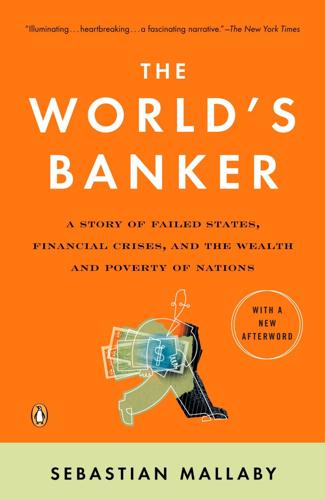
The World's Banker: A Story of Failed States, Financial Crises, and the Wealth and Poverty of Nations
by
Sebastian Mallaby
Published 24 Apr 2006
Early on in the process of assembling his team, Kemal Dervis had worried that it might be difficult to find people willing to forsake the comfort of Washington. But word had gone around the Bank about the adventure that was revving up in the Balkans, and candidates were lining up to join the effort. Dervis diffidently asked one applicant, a young microcredit expert named Sarah Forster, whether she’d be prepared to live in Sarajevo full time. He got a sharp response: Forster was only interested in the job if she could move to the region. Within a few months, Forster was organizing a lending cooperative for widows of the Srebrenica massacre, who were setting up small businesses, investing in farm animals or sewing clothes, and beginning to look to the future.27 It helped Dervis’s recruitment drive that the early Sarajevo missions had returned with inspiring stories.
…
The signing finally took place, and Wolfensohn emerged from the presidency building and set off on a tour of Sarajevo, accompanied by Prime Minister Muratovic. He visited a school that the Bank had rehabilitated, a housing project where the Bank had bought the materials for the roofs, and a kitchen where a man who’d lost a leg was manufacturing chocolate box trays, pressing them out with the help of a machine financed by a World Bank microcredit. He visited the leaders of the four religious denominations in the city: the chief rabbi welcomed him to a place where, as he put it, his community had suffered as citizens rather than as Jews; the chief imam assured him that Bosnians could overcome their hatreds if the Bank could open economic opportunities.
…
They enrolled three times as many of their children in school. Before returning to his village, Briscoe had followed Bangladesh only from a distance. The country was known among World Bankers mainly for its impressive nongovernmental organizations. There was the Grameen Bank, which spawned the microcredit movement by pioneering small loans to poor women; there was the Bangladesh Rural Advancement Committee (BRAC), which has enriched the countryside with some fifty thousand teachers. When Briscoe went back to Fatepur, he asked the villagers about these NGO heroes. The way he recounts these conversations, they went something like this: “So what made a difference to your life here?”
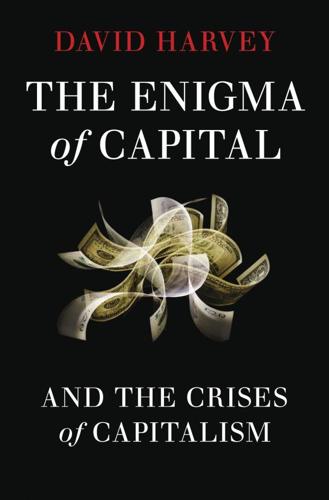
The Enigma of Capital: And the Crises of Capitalism
by
David Harvey
Published 1 Jan 2010
In recent years, for example, what was once referred to in the official language of international institutions as ‘the informal sector’ (and therefore somehow outside of the logic of capital accumulation) has been redefined as a world of ‘microenterprises’. The fate of these enterprises is then linked to that of capital through the extension of microcredit and microfinance schemes to these microenterprises. These schemes extend small amounts of credit (at very high rates of interest) to collectives (usually a fairly small group of women) from within the 2 billion people who live on less than 2 dollars a day. The purported aim is to permit the population to raise themselves out of poverty and join the merry business of capital accumulation.
…
Funded by both state and private interests, populated often by idealist thinkers and organisers (they constitute a vast employment programme), and for the most part dedicated to single-issue questions (environment, poverty, women’s rights, anti-slavery and trafficking work, etc.), they refrain from straight anti-capitalist politics even as they espouse progressive ideas and causes. In some instances, however, they are actively neoliberal, engaging in privatisation of state welfare functions or fostering institutional reforms to facilitate market integration of marginalised populations (microcredit and microfinance schemes for low income populations are a classic example of this). While there are many radical and dedicated practitioners in this NGO world, their work is at best ameliorative. Collectively, they have a spotty record of progressive achievements, although in certain arenas such as women’s rights, health care and environmental preservation they can reasonably claim to have made major contributions to human betterment.
…
.: Limits to Growth 72 meat-based diets 73, 74 Medicare 28–9, 224 Mellon, Andrew 11, 98 mercantilism 206 merchant capitalists 40 mergers 49, 50 forced 261 Merrill Lynch 12 Merton, Robert 100 methane gas 73 Mexico debt crisis (1982) 10, 19 northern Miexico’s proximity to the US market 36 peso rescue 261 privatisation of telecommunications 29 and remittances 38 standard of living 10 Mexico City 243 microcredit schemes 145–6 microeconomics 237 microenterprises 145–6 microfinance schemes 145–6 Middle East, and oil issue 77, 170, 210 militarisation 170 ‘military-industrial complex’ 91 minorities: colonisation of urban neighbourhoods 247, 248 Mitterrand, François 198 modelling of markets 262 modernism 171 monarchy 249 monetarism 237 monetisation 244 money centralised money power 49–50, 52 a form of social power 43, 44 limitlessness of 43, 47 loss of confidence in the symbols/quality of money 114 universality of 106 monoculture 186 Monopolies Commission 52 monopolisation 43, 68, 95, 113, 116, 221 Monsanto 186 Montreal Protocol (1989) 76, 187 Morgan Stanley 19 Morishima, Michio 70 Morris, William 160 mortgages annual rate of change in US mortgage debt 7 mortgage finance for housing 170 mortgage-backed bonds futures 262 mortgage-backed securities 4, 262 secondary mortgage market 173, 174 securitisation of local 42 securitisation of mortgage debt 85 subprime 49, 174 Moses, Robert 169, 171, 177 MST (Brazil) 257 multiculturalism 131, 176, 231, 238, 258 Mumbai, India anti-Muslim riots (early 1990s) 247 redevelopment 178–9 municipal budgets 5 Museum of Modern Art, New York 21 Myrdal, Gunnar 196 N Nandigram, West Bengal 180 Napoleon III, Emperor 167, 168 national debt 48 National Economic Council (US) 11, 236 national-origin quotas 14 nationalisation 2, 4, 8, 224 nationalism 55–6, 143, 194, 204 NATO 203 natural gas 188 ‘natural limits’ 47 natural resources 30, 71 natural scarcity 72, 73, 78, 80, 83, 84, 121 nature and capital 88 ‘first nature’ 184 relation to 121, 122 ‘the revenge of nature’ 185 ‘second nature’ 184, 185, 187 as a social product 188 neocolonialism 208, 212 neoliberal counter-revolution 113 neoliberalism 10, 11, 19, 66, 131, 132, 141, 172, 175, 197, 208, 218, 224, 225, 233, 237, 243, 255 Nepal: communist rule in 226 Nevada, foreclosure wave in 1 New Deal 71 ‘new economy’ (1990s) 97 New Labour 45, 255 ‘new urbanism’ movement 175 New York City 11 September 2001 attacks 41 fiscal crisis (1975) 10, 172, 261 investment banks 19, 28 New York metropolitan region 169, 196 Nicaragua 189 Niger delta 251 non-governmental organisations (NGOs) 35, 253–4 non-interventionism 10 North Africa, French import of labour from 14 North America, settlement in 145 North American Free Trade Association (NAFTA) 200 Northern Ireland emergency 247 Northern Rock 2 Norway: Nordic cris (1992) 8 nuclear power 188 O Obama, Barack 11, 27, 34, 210 Obama administration 78, 121 O’Connor, Jim 77, 78 offshoring 131 Ogoni people 251 oil cheap 76–7 differential rent on oil wells 83 futures 83, 84 a non-renewable resource 82 ‘peak oil’ 38, 73, 78, 79, 80 prices 77–8, 80, 82–3, 261 and raw materials prices 6 rents 83 United States and 76–7, 79, 121, 170, 210, 261 OPEC (Organisation of Oil-Producing Countries) 83, 84 options markets currency 262 equity values 262 unregulated 99, 100 Orange County, California bankruptcy 100, 261 Organisation for Economic Cooperation and Development (OECD) 51 organisational change 98, 101 organisational forms 47, 101, 121, 127, 134, 238 Ottoman Empire 194 ‘over the counter’ trading 24, 25 overaccumulation crises 45 ozone hole 74 ozone layer 187 P Pakistan: US involvement 210 Palley, Thomas 236 Paris ‘the city of light’ 168 epicentre of 1968 confrontations 177, 243 Haussmann’s rebuilding of 49, 167–8, 169, 171, 176 municipal budget crashes (1868) 54 Paris Commune (1871) 168, 171, 176, 225, 243, 244 Partnoy, Frank: Ubfectious Greed 25 patents 221 patent laws 95 patriarchy 104 pensions pension funds 4, 5, 245 reneging on obligations 49 Péreire brothers 49, 54, 98, 174 pesticides 185, 186, 187 petty bourgeois 56 pharmaceutical sector 129, 245 philanthropy 44 Philippines: excessive urban development 8 Phillips, Kevin 206 Pinochet, General Augusto 15, 64 plant 58 Poland, lending to 19 political parties, radical 255–6 politics capitalist 76 class 62 co-revolutionary 241 commodified 219 depoliticised 219 energy 77 identity 131 labour organizing 255 left 255 transformative 207 pollution air 77 oceanic 74 rights 21 ‘Ponts et Chaussées’ organisation 92 Ponzi schemes 21, 114, 245, 246 pop music 245–6 Pope, Alexander 156 population growth 59, 72, 74, 121, 167 and capital accumulation 144–7 populism 55–6 portfolio insurance 262 poverty and capitalism 72 criminalisation and incarceration of the poor 15 feminisation of 15, 258 ‘Great Society’ anti-poverty programmes 32 Prague 243 prices commodity 37, 73 energy 78 food grain 79–80 land 8, 9, 182–3 oil 8, 28, 37–8, 77–8, 80, 82–3, 261 property 4, 182–3 raw material 37 reserve price 81–2 rising 73 share 7 primitive accumulation 58, 63–4, 108, 249 private consortia 50 private equity groups 50 private property and radical egalitarianism 233, 234 see also property markets; property rights; property values privatisation 10, 28, 29, 49, 251, 256, 257 pro-natal policies 59 production expansion of 112, 113 inadequate means of 47 investment in 114 liberating the concept 87 low-profit 29 offshore 16 production of urbanisation 87 reorganisation and relocation of 33 revolutionising of 89 surplus 45 technologies 101 productivity agreements 14, 60, 96 agricultural 119 cotton industry 67 gains 88, 89 Japan and West Germany 33 rising 96, 186 products development 95 innovation 95 new lines 94, 95 niches 94 profit squeeze 65, 66, 116 profitability constrains 30 falling 94, 131 of the financial sector 51 and wages 60 profits easy 15 excess 81, 90 falling 29, 72, 94, 116, 117 privatising 10 rates 70, 94, 101 realisation of 108 proletarianisation 60, 62 property markets crash in US and UK (1973–75) 8, 171–2, 261 overextension in 85 property market-led Nordic and Japanese bank crises 261 property-led crises (2007–10) 10, 261 real estate bubble 261 recession in UK (after 1987) 261 property rights 69, 81–2, 90, 122, 179, 198, 233, 244, 245 Property Share Price Index (UK) 7 property values 171, 181, 197, 248 prostitution 15 protectionism 31, 33, 43, 211 punctuated equilibrium theory of natural evolution 130 Putin, Vladimir 29, 80 Q Q’ing dynasty 194 quotas 16 R R&D (research and development) 92, 95–6 race issues 104 racism 61, 258 radical egalitarianism 230–34 railroads 42, 49, 191 Railwan, rise of (1970s) 35 rare earth metals 188 raw materials 6, 16, 37, 58, 77, 101, 113, 140, 144, 234 RBS 20 Reagan, Ronald 15, 64, 131, 141 Reagan-Thatcher counter revolution (early 1980s) 71 Reagan administration 1, 19 Reagan recession (1980–82) 60, 261 Real Estate Investment Trusts (US) 7 recession 1970s 171–2 language of 27 Reagan (1980–82) 60, 261 Red Brigade 254 reforestation 184 refrigeration 74 reinvestment 43, 45, 66–7, 110–12, 116 religious fundamentalism 203 religious issues 104 remittances 38, 140, 147 rentiers 40 rents differential rent 81, 82, 83 on intellectual property rights 221 land 182 monetisation of 48, 109 monopoly 51, 81–2, 83 oil 83 on patents 221 rising 181 reproduction schemas 70 Republican Party (US) 11, 141 reserve price 81 resource values 234 Ricardo, David 72, 94 risks, socialising 10 robbery 44 Robinson, Joan 238 robotisation 14, 136 Rockefeller, John D. 98 Rockefeller brothers 131 Rockefeller foundation 44, 186 Roman Empire 194 Roosevelt, Franklin D. 71 Rothschild family 98, 163 Royal Society 91, 156 royalties 40 Rubin, Robert 98 ‘rule of experts’ 99, 100–101 Russia bankruptcy (1998) 246, 261 capital flight crisis 261 defaults on its debt (1998) 6 oil and natural gas flow to Ukraine 68 oil production 6 oligarchs 29 see also Soviet Union S Saddam Hussein 210 Saint-Simon, Claude Henri de Rouvroy, Comte de 49 Saint-Simonians 87, 168 Salomon Brothers 24 Samuelson, Robert 235, 239 Sandino, Augusto 189 Sanford, Charles 98 satellites 156 savings 140 Scholes, Myron 100 Schumer, Charles 11 Schumpeter, Joseph 46 Seattle battle of (1999) 38, 227 general strike (1918) 243 software development in 195 Second World War 32, 168–70, 214 sectarianism 252 securitisation 17, 36, 42 Sejong, South Korea 124–6 service industries 41 sexism 61 sexual preferences issues 104, 131, 176 Shanghai Commune (1967) 243 shark hunting 73, 76 Shell Oil 79, 251 Shenzhen, China 36 shop floor organisers (shop stewards) 103 Silicon Valley 162, 195, 216 Singapore follows Japanese model 92 industrialisation 68 rise of (1970s) 35 slavery 144 domestic 15 slums 16, 151–2, 176, 178–9 small operators, dispossession of 50 Smith, Adam 90, 164 The Wealth of Nations 35 social democracy 255 ‘social democratic’ consensus (1960s) 64 social inequality 224 social relations 101, 102, 104, 105, 119, 121, 122, 123, 126, 127, 135–9, 152, 240 loss of 246 social security 224 social services 256 social struggles 193 social welfarism 255 socialism 136, 223, 228, 242, 249 compared with communism 224 solidarity economy 151, 254 Soros, George 44, 98, 221 Soros foundation 44 South Korea Asian Currency Crisis 261 excessive urban development 8 falling exports 6 follows Japanese model 92 rise of (1970s) 35 south-east Asia: crash of 1997–8 6, 8, 49, 246 Soviet Union in alliance with US against fascism 169 break-up of 208, 217, 227 collapse of communism 16 collectivisation of agriculture 250 ‘space race’ (1960s and 1970s) 156 see also Russia space domination of 156–8, 207 fixed spaces 190 ‘space race’ (1960s and 1970s) 156 Spain property-led crisis (2007–10) 5–6, 261 unemployment 6 spatial monopoly 164–5 special drawing rights 32, 34 special economic zones 36 special investment vehicles 36, 262 special purpose entities 262 speculation 52–3 speculative binges 52 speed-up 41, 42 stagflation 113 stagnation 116 Stalin, Joseph 136, 250 Standard Oil 98 state formation 196, 197, 202 state-corporate nexus 204 ‘space race’ (1960s and 1970s) 156 state-finance nexus 204, 205, 237, 256 blind belief in its corrective powers 55 ‘central nervous system’ for capital accumulation 54 characteristics of a feudal institution 55 and the current crisis 118 defined 48 failure of 56–7 forms of 55 fusion of state and financial powers 115 innovation in 85 international version of 51 overwhelmed by centralised credit power 52 pressure on 54 radical reconstruction of 131 role of 51 and state-corporate research nexus 97 suburbanisation 171 tilts to favour particular interests 56 statistical arbitrage strategies 262 steam engine, invention of 78, 89 Stiglitz, Joseph 45 stimulus packages 261 stock markets crash (1929) 211, 217 crashes (2001–02) 261 massive liquidity injections (1987) 236, 261 Stockton, California 2 ’structural adjustment’ programmes vii, 19, 261 subcontracting 131 subprime loans 1 subprime mortgage crisis 2 substance abuse 151 suburbanisation 73, 74, 76–7, 106–7, 169, 170, 171, 181 Summers, Larry 11, 44–5, 236 supermarket chains 50 supply-side theory 237 surveillance 92, 204 swaps credit 21 Credit Default 24, 262 currency 262 equity index 262 interest rate 24, 262 Sweden banking system crash (1992) 8, 45 Nordic crisis 8 Yugoslav immigrants 14 Sweezey, Paul 52, 113 ‘switching crises’ 93 systematic ‘moral hazard’ 10 systemic risks vii T Taipei: computer chips and household technologies in 195 Taiwan falling exports 6 follows Japanese model 92 takeovers 49 Taliban 226 tariffs 16 taxation 244 favouring the rich 45 inheritance 44 progressive 44 and the state 48, 145 strong tax base 149 tax rebates 107 tax revenues 40 weak tax base 150 ‘Teamsters for Turtles’ logo 55 technological dynamism 134 technologies change/innovation/new 33, 34, 63, 67, 70, 96–7, 98, 101, 103, 121, 127, 134, 188, 193, 221, 249 electronic 131–2 ‘green’ 188, 221 inappropriate 47 labour fights new technologies 60 labour-saving 14–15, 60, 116 ‘rule of experts’ 99, 100–101 technological comparative edge 95 transport 62 tectonic movements 75 territorial associations 193–4, 195, 196 territorial logic 204–5 Thailand Asian Currency Crisis 261 excessive urban development 8 Thatcher, Margaret, Baroness 15, 38, 64, 131, 197, 255 Thatcherites 224 ‘Third Italy’, Bologna 162, 195 time-space compression 158 time-space configurations 190 Toys ‘R’ Us 17 trade barriers to 16 collapses in foreign trade (2007–10) 261 fall in global international trade 6 increase in volume of trading 262 trade wars 211 trade unions 63 productivity agreements 60 and US auto industry 56 trafficking human 44 illegal 43 training 59 transport costs 164 innovations 42, 93 systems 16, 67 technology 62 Treasury Bill futures 262 Treasury bond futures 262 Treasury instruments 262 TRIPS agreement 245 Tronti, Mario 102 Trotskyists 253, 255 Tucuman uprising (1969) 243 Turin: communal ‘houses of the people’ 243 Turin Workers Councils 243 U UBS 20 Ukraine, Russian oil and natural gas flow to 68 ultraviolet radiation 187 UN Declaration of Human Rights 234 UN development report (1996) 110 Un-American Activities Committee hearings 169 underconsumptionist traditions 116 unemployment 131, 150 benefits 60 creation of 15 in the European Union 140 job losses 93 lay-offs 60 mass 6, 66, 261 rising 15, 37, 113 and technological change 14, 60, 93 in US 5, 6, 60, 168, 215, 261 unionisation 103, 107 United Fruit Company 189 United Kingdom economy in serious difficulty 5 forced to nationalise Northern Rock 2 property market crash 261 real average earnings 13 train network 28 United Nations 31, 208 United States agricultural subsidies 79 in alliance with Soviet Union against fascism 169 anti-trust legislation 52 auto industry 56 blockbusting neighbourhoods 248 booming but debt-filled consumer markets 141 and capital surplus absorption 31–2 competition in labour markets 61 constraints to excessive concentration of money power 44–5 consumerism 109 conumer debt service ratio 18 cross-border leasing with Germany 142–3 debt 158, 206 debt bubble 18 fiscal crises of federal, state and local governments 261 health care 28–9 heavy losses in derivatives 261 home ownership 3 housing foreclosure crises 1–2, 4, 38, 166 industries dependent on trade seriously hit 141 interventionism in Iraq and Afghanistan 210 investment bankers rescued 261 investment failures in real estate 261 lack of belief in theory of evolution 129 land speculation scheme 187–8 oil issue 76–7, 79, 80, 121, 170, 210, 261 population growth 146 proletarianisation 60 property-led crisis (2007–10) 261 pursuit of science and technology 129 radical anti-authoritarianism 199 Reagan Recession 261 rescue of financial institutions 261 research universities 95 the reversing origins of US corporate profits (1950–2004) 22 the right to the city movement 257 ‘right to work’ states 65 savings and loan crisis (1984–92) 8 secondary mortgage market 173 ‘space race’ (1960s and 1970s) 156 suburbs 106–7, 149–50, 170 train network 28 unemployment 5, 6, 60, 168, 215, 261 unrestricted capitalist development 113 value of US stocks and homes, as a percentage of GDP 22 and Vietnam War 171 wages 13, 62 welfare provision 141 ‘urban crisis’ (1960s) 170 urban ‘heat islands’ 77 urban imagineering 193 urban social movements 180 urbanisation 74, 85, 87, 119, 131, 137, 166, 167, 172–3, 174, 240, 243 US Congress 5, 169, 187–8 US Declaration of Independence 199 US National Intelligence Council 34–5 US Senate 79 US Supreme Court 179 US Treasury and Goldman Sachs 11 rescue of Continental Illinois Bank 261 V Vanderbilt family 98 Vatican 44 Veblen, Thorstein 181–2 Venezuela 256 oil production 6 Vietnam War 32, 171 Volcker, Paul 2, 236 Volcker interest rate shock 261 W wage goods 70, 107, 112, 162 wages and living standards 89 a living wage 63 national minimum wage 63 rates 13, 14, 59–64, 66, 109 real 107 repression 12, 16, 21, 107, 110, 118, 131, 172 stagnation 15 wage bargaining 63 Wal-Mart 17, 29, 64, 89 Wall Street, New York 35, 162, 200, 219, 220 banking institutions 11 bonuses 2 ‘Party of Wall Street’ 11, 20, 200 ‘War on Terror’ 34, 92 warfare 202, 204 Wasserstein, Bruce 98 waste disposal 143 Watt, James 89 wealth accumulation by capitalist class interests 12 centralisation of 10 declining 131 flow of 35 wealth transfer 109–10 weather systems 153–4 Weather Underground 254 Weill, Sandy 98 Welch, Jack 98 Westphalia, Treaty of (1648) 91 Whitehead, Alfred North 75 Wilson, Harold 56 wind turbines 188 women domestic slavery 15 mobilisation of 59, 60 prostitution 15 rights 176, 251, 258 wages 62 workers’ collectives 234 working hours 59 World Bank 36, 51, 69, 192, 200, 251 ‘Fifty Years is Enough’ campaign 55 predicts negative growth in the global economy 6 World Bank Development Report (2009) 26 World Trade Organisation (WTO) 200, 227 agreements 69 street protests against (Seattle, 1999) 55 TRIPS agreement 245 and US agricultural subsidies 79 WorldCom 8, 100, 261 worldwide web 42 Wriston, Walter 19 X X-rays 99 Y Yugoslavia dissolution of 208 ethnic cleansings 247 Z Zapatista revolutionary movement 207, 226, 252 Zola, Émile 53 The Belly of Paris 168 The Ladies’ Paradise 168
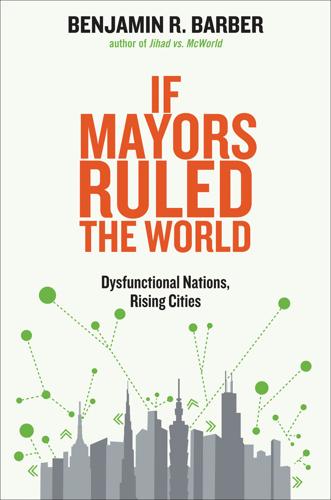
If Mayors Ruled the World: Dysfunctional Nations, Rising Cities
by
Benjamin R. Barber
Published 5 Nov 2013
For a useful, if dated, narrative depicting Grameen’s beginnings and its founding vision, see David Bornstein, The Price of a Dream: The Story of the Grameen Bank and the Idea That Is Helping the Poor to Change Their Lives, Chicago: University of Chicago Press, 1997. Recent scandals surrounding the Bank and Yunus have undermined Yunus’s reputation and damaged the idea of microfinance, though the charges have yet to be made credible. Susan F. Feiner and Drucilla K. Barker, “A Critique of Microcredit: Microfinance and Women’s Poverty,” http://imow.org/economica/stories/viewStory?storyId=3693. Sudhirendar Sharma, “Microcredit: Globalisation Unlimited,” The Hindu, January 5, 2002. My own view, however, is that innovative ideas, especially those impacting “normal market capitalism” are almost always assailed over time, often through personal libels involving their authors.
…
Cairo opened a 70-acre park (Al-Azhar Park) that is the largest in North Africa.75 Built on a former field of garbage, it encompassed a twelfth-century Ayyubid wall and rehabilitation of the fourteenth-century Umm Sultan Shaban Mosque and other historic sites. City officials tried to tie the park to economic stimulus, offering microcredits to residents to develop word-carving and other skills in the park. Total acreage, however, is less important than distribution. Washington, D.C., has 12.9 acres per 1,000 residents while New York has just 6 and Chicago 4.2. Washington, nevertheless, is both segregated and rife with poverty, with African-Americans most impacted.
…
Nearly 20,000 residents have benefited as a result of these changes, and improvements in postnatal service and upgrades of primary health centers; • in education, promoting a new online schooling project, distributing nearly a half million school exercise books and 7,000 school bags, replacing chalk with markers and marker boards, and providing new schools (and life jackets!) for children in underserved river-area slums; • offering a city-sponsored microcredit program at near-zero interest rate for applicants who can secure a reputable sponsor; hundreds have applied, and many have been approved; • environmentally, furthering the work on drainage (above), which has cleared drains of silt and reduced flooding risk; planting 4,500 trees as part of a greening project; • starting a community newspaper (Amuwo Odofin Prism) as a community platform, and engaging residents in town hall meetings; • developing a public-private partnership with the private security firm Blue Waters Security to enhance public safety using new tech security equipment and new security posts; • expanding public transportation through a contract with Ashok-Leyland Motors (India) to build one hundred buses at a nearby plant in Ojo; the buses will seat fifty-seven passengers and be equipped with cash-free electronic fare gear; and • planning recycling plants capable of yielding bio-fuels as part of an environmental greening program.
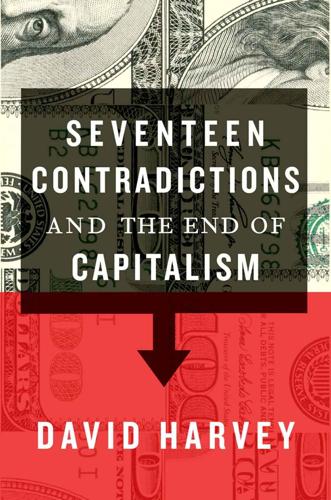
Seventeen Contradictions and the End of Capitalism
by
David Harvey
Published 3 Apr 2014
, the answers are quite stunning. In many parts of the world the usurious moneylender has always been a significant figure and continues to be so up to this day. Social reproduction takes place in much of India under the shadow of the looming power of the usurer. This is not relieved by the arrival of the institutions of microcredit and microfinance (which in some instances have driven people – mostly women – to suicide as the only relief from their collective indebtedness). But personal indebtedness associated with social reproduction has now become a calamitous problem in one form or another almost everywhere. The huge indebtedness of students in the United States is now being mimicked in Britain, Chile and China, while borrowings to finance the conduct of everyday life have been mounting at astonishing rates.
…
Any so-called ‘radical’ strategy that seeks to empower the disempowered in the realm of social reproduction by opening up that realm to monetisation and market forces is headed in exactly the wrong direction. Providing financial literacy classes for the populace at large will simply expose that population to predatory practices as they seek to manage their own investment portfolios like minnows swimming in a sea of sharks. Providing microcredit and microfinance facilities encourages people to participate in the market economy but does so in such a way as to maximise the energy they have to expend while minimising their returns. Providing legal title for land and property ownership in the hope that this will bring economic and social stability to the lives of the marginalised will almost certainly lead in the long run to their dispossession and eviction from that space and place they already hold through customary use rights.
…
283 Maddison, Angus 227 Maghreb 174 Malcolm X 291 Maldives 260 Malthus, Thomas 229–30, 232–3, 244, 246, 251 Manchester 149, 159 Manhattan Institute 143 Mansion House, London 201 manufacturing 104, 239 Mao Zedong 291 maquilas 129, 174 Marcuse, Herbert 204, 289 market cornering 53 market economy 198, 205, 276 marketisation 243 Marshall Plan 153 Martin, Randy 194 Marx, Karl 106, 118, 122, 142, 207, 211 and alienation 125, 126, 213 in the British Museum library 4 on capital 220 conception of wealth 214 on the credit system 239 and deskilling 119 on equal rights 64 and falling profits 107 and fetishism 4 on freedom 207, 208, 213 and greed 33 ‘industrial reserve army’ 79–80 and isolation of workers 125 labour theory of value 109 and monetary system reforms 36 monopoly power and competition 135 reality and appearance 4, 5 as a revolutionary humanist 221 and social reproduction 182 and socialist utopian literature 184 and technological innovation 103 and theorists of the political left 54 and the ‘totally developed individual’ 126–7 and world crises xiii; Capital 57, 79–80, 81, 82, 119, 129, 132, 269, 286, 291–2 The Economic and Philosophic Manuscripts of 1844 269, 286 Grundrisse 97, 212–13 Theories of Surplus Value 1 Marxism contradiction between productive forces and social relations 269 ‘death of Marxism’ xii; ecologically sensitive 263 and humanism 284, 286, 287 ‘profit squeeze’ theory of crisis formation 65 traditional Marxist conception of socialism/ communism 91 Marxists 65, 109 MasterCard Priceless 275 Mau Mau movement 291 Melbourne 141 merchants 67 and industrial capital 179 price-gouging customers 54 and producers 74–5 Mercosur 159 Mexican migrants 115, 175, 195–6 Mexico 123, 129, 174 Mexico City riots (1968) x microcredit 194, 198 microfinance 186, 194, 198, 211 Microsoft 131 Middle East 124, 230 Milanovic, Branko 170 military, the capacities and powers 4 dominance 110 and technology 93, 95 ‘military-industrial complex’ 157 mind-brain duality 70 mining 94, 113, 123, 148, 239, 257 MIT (Massachusetts Institute of Technology) 292 Mitchell, David: Cloud Atlas 264 Mitchell, Timothy 122 Modern Times (film) 103 Mondragon 180 monetarism xi monetary wealth and incomes, inequalities in (1920s) x 1071 monetisation 44, 55, 60, 61, 62, 115, 192–3, 198, 235, 243, 250, 253, 261, 262 money abandonment of metallic basis of global moneys 30, 37, 109 circulation of 15, 25, 30–31, 35 coinage 15, 27, 29, 30 commodification of 57 commodity moneys 27–31 creation of 30, 51, 173, 233, 238–9, 240 credit moneys 28, 30, 31, 152 cyber moneys 36, 109–10 electronic moneys 27, 29, 35, 36, 100 and exchange value 28, 35, 38 fiat 8, 27, 30, 40, 109, 233 gap between money and the value it represents 27 global monetary system 46–7 love of money as a possession 34 measures value 25, 28 a moneyless economy 36 oxidisation of 35 paper 15, 27, 29, 30, 31, 37, 40, 45 power of 25, 36, 59, 60, 62, 65–66, 131–6, 245, 266 quasi-money 35 relation between money and value 27, 35 represented as numbers 29–30 and social labour 25, 27, 31, 42, 55, 88, 243 and the state 45–6, 51, 173 storage of value 25, 26, 35 the US dollar 46–7 use value 28 money capital 28, 32, 59, 74, 142, 147, 158, 177, 178 money laundering 54, 109 ‘money of account’ 27–8, 30 monopolisation 53, 145 monopoly, monopolies 77 and competition 131–45, 218, 295 corporate 123 monetary system 45, 46, 48, 51 monopoly power 45, 46, 51, 93, 117, 120, 132, 133–4, 136, 137, 139, 141, 142–3 monopoly pricing 72, 132 natural 118, 132 of state over legitimate use of force and violence 42, 44, 45, 51, 88, 155, 173 see also prices, monopoly monopsony 131 Monsanto 123 Montreal Protocol 254, 259 ‘moral restraints’ 229, 233 mortgages 19, 21, 28, 32, 54, 67, 82, 239 multiculturalism 166 Mumbai 155, 159 Murdoch, Rupert xi Myrdal, Gunnar 150 N NAFTA 159 name branding 31, 139 nano-trading 243 Nation of Islam 291 national debt 45, 226, 227 National Health Service 115 National Labor Relations Board 120 National Security Administration 136 nationalisation 50 nationalism 7, 8, 44, 289 natural resources 58, 59, 123, 240, 241, 244, 246, 251 nature 56 alienation from 263 capital’s conception of 252 capital’s relation to 246–63 commodification of 59 domination of 247, 272 Heidegger on 59, 250 Polanyi on 58 power over 198 process-thing duality 73 and technology 92, 97, 99, 102 Nazis 151 neoclassical economists 109 neocolonialism 143, 201 neoliberal era 128 neoliberal ethic 277 neoliberalisation x, 48 neoliberalism xiii, 68, 72, 128, 134, 136, 176, 191, 234, 281 capitalism 266 consensus 23 counter-revolution 82, 129, 159, 165 political programme 199 politics 57 privatisation 235 remedies xi Nevada, housing in 77 ‘new economy’ (1990s) 144 New York City 141, 150 creativity 245 domestic labour in 196 income inequality 164 rental markets 22 social reproduction 195 Newton, Isaac 70 NGOs (non-governmental organisations) 189, 210, 284, 286, 287 Nike 31 Nkrumah, Kwame 291 ‘non-coincidence of interests’ 25 Nordic countries 165 North America deindustrialisation in 234 food grain exports 148 indigenous population and property rights 39 women in labour force 230 ‘not in my back yard’ politics 20 nuclear weapons 101 Nyere, Julius 291 O Obama, Barack 167 occupational safety and health 72 Occupy movement 280, 292 Ohlin Foundation 143 oil cartel 252 companies 77, 131 ‘Seven Sisters’ 131 embargo (1973) 124 ‘peak oil’ 251–2, 260 resources 123, 240, 257 oligarchy, oligarchs 34, 143, 165, 221, 223, 242, 245, 264, 286, 292 oligopoly 131, 136, 138 Olympic Games 237–8 oppositional movements 14, 162, 266–7 oppression 193, 266, 288, 297 Orwell, George 213 Nineteen Eighty-Four 202 overaccumulation 154 overheating 228 Owen, Robert 18, 184 Oxfam xi, 169–70 P Paine, Tom: Rights of Man 285 Paris 160 riots (1968) x patents 139, 245, 251 paternalism 165, 209 patriarchy 7 Paulson, Hank 47 pauperisation 104 Peabody, George 18 peasantry ix, 7, 107, 117, 174, 190, 193 revolts 202 pensions 134, 165, 230 rights 58, 67–8, 84, 134 people of colour: disposable populations 111 Pereire, Emile 239 pesticides 255, 258 pharmaceuticals 95, 121, 123, 136, 139 Philanthropic Colonialism 211 philanthropy 18, 128, 189, 190, 210–11, 245, 285 Philippines 115, 196 Picasso, Pablo 140–41, 187, 240 Pinochet, Augusto x Pittsburgh 150, 159, 258 planned obsolescence 74 plutocracy xi, xii, 91, 170, 173, 177, 180 Poland 152 Polanyi, Karl 56, 58, 60, 205–7, 210, 261 The Great Transformation 56–7 police 134 brutality 266 capacities and powers 43 powers xiii, 43, 52 repression 264, 280 surveillance and violence 264 violence 266, 280 police-state 203, 220 political economy xiv, 54, 58, 89, 97, 179–80, 182, 201, 206–9 liberal 204, 206, 209 political parties, incapable of mounting opposition to the power of capital xii political representation 183 pollutants 8, 246, 255 pollution 43, 57, 59, 60, 150, 250, 254, 255, 258 Pontecorvo, Gillo 288 Ponzi schemes 21, 53, 54, 243 population ageing 223, 230 disposable 108, 111, 231, 264 growth 107–8, 229, 230–31, 242, 246 Malthus’s principle 229–30 Portugal 161 post-structuralism xiii potlatch system 33 pounds sterling 46 poverty 229 anti-poverty organisations 286–7 and bourgeois reformism 167 and capital 176 chronic 286 eradication of 211 escape from 170 feminisation of 114 grants 107 and industrialisation 123 and population expansion 229 and unemployment 170, 176 US political movement denies assistance to the poor 292–3 and wealth 146, 168, 177, 218, 219, 243 world xi, 170 power accumulation of 33, 35 of capital xii, 36 class 55, 61, 88, 89, 97, 99, 110, 134, 135, 221, 279 computer 105 and currencies 46 economic 142, 143, 144 global 34, 170 the house as a sign of 15–16 of labour see under labour; of merchants 75 military 143 and money 25, 33, 36, 49, 59, 60, 62, 63, 65–6, 245, 266 monopoly see monopoly power; oligarchic 292 political 62, 143, 144, 162, 171, 219, 292 purchasing 105, 107 social 33, 35, 55, 62, 64, 294 state 42–5, 47–52, 72, 142, 155–9, 164, 209, 295 predation, predators 53, 54, 61, 67, 77, 84, 101, 109, 111, 133, 162, 198, 212, 254–5 price fixing 53, 118, 132 price gouging 132 Price, Richard 226, 227, 229 prices discount 133 equilibrium in 118 extortionate 84 food 244, 251 housing 21, 32, 77 land 77, 78, 150 low 132 market 31, 32 and marketplace anarchy 118 monopoly 31, 72, 139, 141 oil 251, 252 property 77, 78, 141, 150 supermarket 6 and value 31, 55–6 private equity firms 101, 162 private equity funds 22, 162 private property and the commons 41, 50, 57 and eradication of usufructuary rights 41 and individual appropriation 38 and monopoly power 134–5, 137 social bond between human rights and private property 39–40 and the state 47, 50, 58, 59, 146, 210 private property rights 38–42, 44, 58, 204, 252 and collective management 50 conferring the right to trade away that which is owned 39 decentralised 44 exclusionary permanent ownership rights 39 and externality effects 44 held in perpetuity 40 intellectual property rights 41 microenterprises endowed with 211 modification or abolition of the regime 14 and nature 250 over commodities and money 38 and state power 40–41, 42–3 underpinning home ownership 49 usufructuary rights 39 privatisation 23, 24, 48, 59, 60, 61, 84, 185, 235, 250, 253, 261, 262, 266 product lines 92, 107, 219, 236 production bourgeois 1 falling value of 107 immaterial 242 increase in volume and variety of 121 organised 2 and realisation 67, 79–85, 106, 107, 108, 173, 177, 179, 180, 221, 243 regional crises 151 workers’ dispossession of own means of 172 productivity 71, 91, 92, 93, 117, 118, 121, 125, 126, 132, 172, 173, 184, 185, 188, 220, 239 products, compared with commodities 25–6 profitability 92, 94, 98, 102, 103, 104, 106, 112, 116, 118, 125, 147, 184, 191–2, 240, 252, 253, 256, 257 profit(s) banking 54 as capital’s aim 92, 96, 232 and capital’s struggle against labour 64, 65 and competition 93 entrepreneurs 24, 104 falling 81, 107, 244 from commodity sales 71 and money capital 28 monopoly 93 rate of 79, 92 reinvestment in expansion 72 root of 63 spending of 15 and wage rates 172 proletarianisation 191 partial 175, 190, 191 ‘property bubble’ 21 property market boom (1920s) 239 growth of 50 property market crashes 1928 x, 21 1973 21 2008 21–2, 54, 241 property rights 39, 41, 93, 135 see also intellectual property rights; private property property values 78, 85, 234 ‘prosumers’ 237 Proudhon, Pierre-Joseph 183 Prozac 248 public goods 38 public utilities 23, 60, 118, 132 Q quantitative easing 30, 233 R R&D ix race 68, 116, 165, 166, 291 racial minorities 168 racialisation 7, 8, 62, 68 racism 8 Rand, Ayn 200 raw materials 16, 17, 148, 149, 154 Reagan, Ronald x, 72 Speech at Westminster 201 Reagan revolution 165–166 realisation, and production 67, 79–85, 106, 107, 108, 173, 177, 179, 180, 221, 243 reality contradiction between reality and appearance 4–6 social 27 Reclus, Elisée 140 regional development 151 regional volatility 154 Reich, Robert 123, 188 religion 7 religious affiliation 68 religious hatreds and discriminations 8 religious minorities 168 remittances 175 rent seeking 132–3, 142 rentiers 76, 77, 78, 89, 150, 179, 180, 241, 244, 251, 260, 261, 276 rents xii, 16–19, 22, 32, 54, 67, 77, 78, 84, 123, 179, 241 monopoly 93, 135, 141, 187, 251 repression 271, 280 autocratic 130 militarised 264 police-state 203 violent 269, 280, 297 wage 158, 274 Republican Party (US) 145, 280 Republicans (US) 167, 206 res nullius doctrine 40 research and development 94, 96, 187 ‘resource curse’ 123 resource scarcity 77 revolution, Fanon’s view of 288 revolutionary movements 202, 276 Ricardo, David 122, 244, 251 right, the ideological and political assault on the left xii; response to universal alienation 281 ‘rights of man’ 40, 59, 213 Rio de Janeiro 84 risk 17, 141, 162, 219, 240 robbery 53, 57, 60, 63, 72 robotisation 103, 119, 188, 295 Rodney, Walter 291 romantic movement 261 Roosevelt, Theodore 131, 135 Four Freedoms 201 Rousseau, Jean-Jacques 213, 214 Ruhr, Germany 150 rural landscapes 160–61 Russia 154 a BRIC country 170, 228 collapse of (1989) 165 financial crisis (1998) 154, 232 indebtedness 152 local famine 124 oligarchs take natural resource wealth 165 S ‘S’ curve 225, 230–31 Saint-Simon, Claude de Rouvroy, comte de 183 sales 28, 31, 187, 236 San Francisco 150 Santiago, Chile: street battles (2006–) 185 Sao Paulo, Brazil 129, 195 savings the house as a form of saving 19, 22, 58 loss of 20, 58 private 36 protecting the value of 20 Savings and Loan Crisis (USA from 1986) 18 savings accounts 5, 6 Scandinavia 18, 85, 165 scarcity 37, 77, 200, 208, 240, 246, 260, 273 Schumpeter, Joseph 98, 276 science, and technology 95 Seattle 196 Second Empire Paris 197 Second World War x, 161, 234 Securities and Exchange Commission 120, 195 security xiii, 16, 121, 122, 165, 205, 206 economic 36, 153 food 253, 294, 296 job 273 national 157 Sen, Amartya 208–11, 281 Development as Freedom 208–9 senior citizens 168 Seoul 84 serfdom 62, 209 sexual hatreds and discriminations 8 Shanghai 153, 160 share-cropping 62 Sheffield 148, 149, 159, 258 Shenzhen, China 77 Silicon Valley 16, 143, 144, 150 silver 27–31, 33, 37, 57, 233, 238 Simon, Julian 246 Singapore 48, 123, 150, 184, 187, 203 slavery 62, 202, 206, 209, 213, 268 slums ix, 16, 175 Smith, Adam 98, 125–6, 157, 185, 201, 204 ‘invisible hand’ 141–2 The Wealth of Nations 118, 132 Smith, Neil 248 social distinction 68, 166 social inequality 34, 110, 111, 130, 171, 177, 180, 220, 223, 266 social justice 200, 266, 268, 276 social labour 53, 73, 295 alienated 64, 66, 88 and common wealth 53 creation of use values through 36 expansion of total output 232 household and communal work 296 immateriality of 37, 233 and money 25, 27, 31, 42, 55, 88, 243 productivity 239 and profit 104 and value 26, 27, 29, 104, 106, 107, 109 weakening regulatory role of 109, 110 social media 99, 136, 236–7, 278–9 social movements 162–3 social reproduction 80, 127, 182–98, 218, 219, 220, 276 social security 36, 165 social services 68 social struggles 156, 159, 165, 168 social value 26, 27, 32, 33, 55, 172, 179, 241, 244, 268, 270 socialism 215 democratic xii; ‘gas and water’ 183 socialism/communism 91, 269 socialist revolution 67 socialist totalitarianism 205 society capitalist 15, 34, 81, 243, 259 civil 92, 122, 156, 185, 189, 252 civilised 161, 167 complex 26 demolition of 56 and freedom 205–6, 210, 212 hope for a better society 218 industrial 205 information 238 market 204 post-colonial 203 pre-capitalist 55 primitive 57 radical transformation of 290 status position in 186 theocratic 62 women in 113 work-based 273 world 204 soil erosion 257 South Africa 84–5, 152, 169 apartheid 169, 202, 203 South Asia labour 108 population growth 230 software programmers and developers 115, 116 South Korea 123, 148, 150, 153 South-East Asia 107–8 crisis (1997–8) 154, 232, 241 sovereign debt crises 37 Soviet Bloc, ex-, labour in 107 Soviet Union 196, 202 see also Russia Spain xi, 51, 161 housing market crash (2007–9) 82–3 spatio-temporal fixes 151–2, 153, 154, 162 spectacle 237–8, 242, 278 speculative bubbles and busts 178 stagnation xii, 136, 161–2, 169 Stalin, Joseph 70 standard of life 23, 175 starvation 56, 124, 246, 249, 260, 265 state, the aim of 156–7 brutality 266, 280 and capital accumulation 48 and civil society 156 curbing the powers of capital as private property 47 evolution of the capitalist state 42 and externality effects 44 guardian of private property and of individual rights 42 and home ownership 49–50 interstate system 156, 157 interventionism 193, 205 legitimate use of violence 42, 44, 45, 51, 88, 155, 173 loss of state sovereignty xii; and money 1, 45–6, 51, 173 ‘nightwatchman’ role 42, 50 powers of 42–5, 47–52, 57–8, 65, 72, 142, 155–9, 209, 295 and private property 47, 50, 58, 59, 146, 210 provision of collective and public goods 42–3 a security and surveillance state xiii; social democratic states 85 war aims 44 state benefits 165 state regulatory agencies 101 state-finance nexus 44–5, 46–7, 142–3, 156, 233 state-private property nexus 88–9 steam engine, invention of the 3 steel industry 120, 121, 148, 188 steel production 73–4 Stiglitz, Joseph 132–4 stock market crash (1929) x Stockholm, protests in (2013) 171, 243 strikes 65, 103, 124 sub-prime mortgage crisis 50 suburbanisation 253 supply and demand 31, 33, 56, 106 supply chain 124 supply-side remedies xi supply-side theories 82, 176 surplus value 28, 40, 63, 73, 79–83, 172, 239 surveillance xiii, 94, 121, 122, 201, 220, 264, 280, 292 Sweden 166, 167 protests in (2013) 129, 293 Sweezy, Paul 136 swindlers, swindling 45, 53, 57, 239 ‘symbolic analysts’ 188 Syntagma Square, Athens 266, 280 T Tahrir Square, Cairo 266 Taipei, Taiwan 153 Taiwan 123, 150, 153 Taksim Square, Istanbul 266, 280 Tanzania 291 tariffs 137 taxation 40, 43, 47, 67, 84, 93–4, 106, 133, 150, 155, 157, 167, 168, 172, 190 Taylor, Frederick 119, 126 Taylorism 103 Tea Party faction 205, 280, 281, 292 technological evolution 95–6, 97, 101–2, 109 technological imperatives 98–101 technological innovation 94–5 technology changes involving different branches of state apparatus 93–4 communicative technologies 278–9 and competition 92–3 constraints inhibiting deployment 101 culture of 227, 271 definition 92, 248 and devaluation of commodities 234 environmental 248 generic technologies 94 hardware 92, 101 humanising 271 information 100, 147, 158, 177 military 93, 95 monetary 109 and nature 92, 97, 99, 102 organisational forms 92, 99, 101 and productivity 71 relation to nature 92 research and development 94 and science 95 software 92, 99, 101 a specialist field of business 94 and unemployment 80, 103 work and labour control 102–11 telephone companies 54, 67, 84, 278 Tennessee 148 Teresa, Mother 284 Thatcher, Margaret (later Baroness) x, 72, 214, 259 Thatcherism 165 theft 53, 60, 61, 63 Thelluson, Peter 226, 227 think tanks 143 ‘Third Italy’ 143 Third World debt crisis 240 Toffler, Alvin 237 tolls 137 Tönnies, Ferdinand 122, 125 tourism ix, 16, 140, 141, 187, 236 medical 139 toxic waste disposal 249–50, 257 trade networks 24 trade unions xii, 116, 148, 168, 176, 184, 274, 280 trade wars 154 transportation 23, 99, 132, 147–8, 150, 296 Treasury Departments 46, 156 TRIPS agreement 242 tropical rainforest 253 ‘trust-busting’ 131 trusts 135 Turin, Italy 150 Turkey 107, 123, 174, 232, 280, 293 Tuscany, Italy 150 Tutu, Archbishop Desmond 284 Twitter 236 U unemployment 37, 104, 258, 273 benefits 176 deliberately created 65, 174 high xii, 10, 176 insurance 175 and labour reserves 175, 231 and labour-saving technologies 173 long-term 108, 129 permanent 111 echnologically induced 80, 103, 173, 274 uneven geographical developments 178, 296 advanced and underserved regional economies 149–50 and anti-capitalist movements 162 asset bubbles 243 and capital’s reinvention of itself 147, 161 macroeconomic processes of 159 masking the true nature of capital 159–60 and technological forms 219 volatility in 244 United Fruit 136 United Kingdom income inequality in 169; see also Britain United Nations (UN) 285 United States aim of Tea Party faction 280 banking 158 Bill of Rights 284 Britain lends to (nineteenth century) 153 capital in (1990s) 154 Constitution 284 consumption level 194 global reserve currency 45–6 growth 232 hostility towards state interventions 167 House of Representatives 206 human rights abuses 202 imperial power 46 indebtedness of students in 194 Indian reservations 249 interstate highway system 239 jobless recoveries after recession 172–3 liberty and freedom rhetoric 200–201, 202 Midwest ‘rust belt’ 151 military expenditures 46 property market crashes x, 21–2, 50, 54, 58, 82–3 racial issues 166 Savings and Loan Crisis (from 1986) 18 social mobility 196 social reproduction 196–7 solidly capitalist 166 steel industry 120 ‘symbolic analysts’ 188 ‘trust-busting’ 131 unemployment 108 wealth distribution 167 welfare system 176 universal suffrage 183 urbanisation 151, 189, 228, 232, 239, 247, 254, 255, 261 Ure, Andrew 119 US Congress 47 US dollar 15, 30, 45–6 US Executive Branch 47 US Federal Reserve xi, 6, 30, 37, 46, 47, 49, 132, 143, 233 monetary policy 170–71 US Housing Act (1949) 18 US Treasury 47, 142, 240 use values collectively managed pool of 36 commodification of 243 commodities 15, 26, 35 common wealth 53 creation through social labour 36 and entrepreneurs 23–4 and exchange values 15, 35, 42, 44, 50, 60, 65, 88 and housing 14–19, 21–2, 23, 67 and human labour 26 infinitely varied 15 of infrastructural provision 78 loss of 58 marketisation of 243 monetisation of 243 of money 28 privatised and commodified 23 provision of 111 and revolt of the mass of the people 60 social demand for 81 usufructuary rights 39, 41, 59 usury 49, 53, 186, 194 utopianism 18, 35, 42, 51, 66, 119, 132, 183, 184, 204, 206–10, 269, 281, 282 V value(s) commodity 24, 25 failure to produce 40 housing 19, 20, 22 net 19 production and realisation of 82 production of 239 property 21 relation between money and value 27, 35 savings 20 storing 25, 26, 35 see also asset values; exchange values; social value; use values value added 79, 83 Veblen, Thorstein: Theory of the Leisure Class 274 Venezuela 123, 201 Vietnam, labour in 108 Vietnam War 290 violence 53, 57, 72, 204–5, 286 against children 193 against social movements 266 against women 193 colonial 289–90, 291 and contemporary capitalism 8 culture of 271 of dispossession 58, 59 in a dystopian world 264 and humanism 286, 289, 291 of the liberation struggle 290 militarised 292 as the only option 290–91 political 280 in pursuit of liberty and freedom 201 racialised 291 state’s legitimate use of 42, 44, 45, 51, 88, 155, 173 of technology 271 and wage labour 207 virtual ecological transfer 256 Volcker, Paul 37 W wages 103 basic social wage 103 falling 80, 82 for housework 115, 192–3 low xii, 114, 116, 186, 188 lower bound to wage levels 175 non-payment of 72 and profits 172 reduction in 81, 103, 104, 135, 168, 172, 176, 178 rising 178 and unskilled labour 114 wage demands 150, 274 wage levels pushed up by labour 65 wage rates 103, 116, 172, 173 wage repression 158–9 weekly 71 see also income Wall Street criticised by a congressional committee 239–40 illegalities practised by 72, 77 and Lebed 195 new information-processing technologies 100 Wall Street Crash (1929) x, 47 Wall-E (film) 271 Walmart xii, 75, 84, 103, 131 war on terror 280 wars 8, 60, 229 currency 154 defined 44 monetisation of state war-making activities 44–5 privatisation of war making 235 resource 154, 260 and state aims 44 state financing of 32, 44, 48 and technology 93 trade 154 world 154 water privatisation 235 wave theory 70 wave-particle duality 70 wealth accumulation of 33, 34, 35, 157, 205 creation of 132–3, 142, 214 disparities of 164–81 distribution of 34, 167 extraction from non-productive activities 32 global 34 the house as a sign of 15–16 levelling up of per capita wealth 171 and poverty 146, 168, 177, 218, 219, 243 redistribution of 9, 234, 235 social 35, 53, 66, 157, 164, 210, 251, 265, 266, 268 taking it from others 132–3 see also common wealth weather futures 60 Weber, Max 122, 125 Weimar Republic 30 welfare state 165, 190, 191, 208 Wells Fargo 61 West Germany 153, 154, 161 Whitehead, Alfred North 97 Wilson, Woodrow 201 Wolf, Martin 304n2 Wollstonecraft, Mary: A Vindication of the Rights of Woman 285 women career versus family obligations 1–2 disposable populations 111 exploitation of 193 housework versus wage labour 114–15 oppression against 193 social struggle 168 trading of 62 violence against 193 in the workforce 108, 114, 115, 127, 174, 230 women’s rights 202, 218 workers’ rights 202 working classes and capital 80 consumer power 81 crushing organisation 81 education 183, 184 gentrified working-class neighbourhoods ix; housing 160 living conditions 292 wage repression and consumption 158–9 working hours 72, 104–5, 182, 272–5, 279 World Bank 16, 24, 100, 186, 245 World Trade Organization 138, 242 WPA programmes (1930s) 151 Wright, Frank Lloyd: Falling Water 16 Wriston, Walter 240 Y YouTube 236 Yugoslavia, former 174 Z Zola, Émile 7
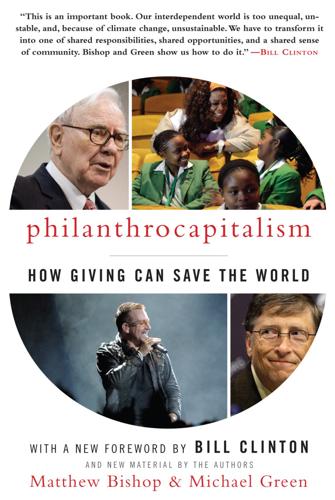
Philanthrocapitalism
by
Matthew Bishop
,
Michael Green
and
Bill Clinton
Published 29 Sep 2008
We’re using the same business-oriented approach to ensure money is spent efficiently and effectively to increase economic opportunity in Latin America, Africa, and U.S. cities. You can see the same approach taking hold throughout the world. Nobel Peace Prize–winner Muhammad Yunus pioneered with the Grameen Bank microcredit loans, which have helped lift more than 100 million people out of poverty across the world. The Gates Foundation has used it to save countless lives from malaria, to search for better ways to prevent HIV/AIDS, and to improve education in poor communities in the United States. I’ve tried to increase the momentum and impact of those in philanthrocapitalism through the Clinton Global Initiative (CGI).
…
The Elders group was launched in July 2007 on Mandela’s eighty-ninth birthday. As well as Robinson and Annan, the twelve Elders included former U.S. president Jimmy Carter; South African archbishop Desmond Tutu; and Muhammad Yunus, the Bangladeshi Nobel Peace Prize–winning founder of the Grameen Bank, which provides small microcredit loans to millions of poor people. A place is reserved for Burmese democratic leader Aung San Suu Kyi, whose house arrest prevents her participation. “I don’t think any of this could work without the root, which is Madiba and Graça,” says Robinson. “Richard and Peter Gabriel managed to persuade the right person on the earth to put this together.
…
Most of her valedictory annual report was devoted to proudly listing many examples of good work by the foundation, which has given away over $13 billion since it was created by Edsel and Henry Ford in 1936. The Ford Foundation, she pointed out, had been one of the first backers of Muhammad Yunus of the Grameen microcredit bank. Not only did Ford have a record of effectively supporting a diverse range of projects, but for more than fifty years it had also demonstrated an ability to be a “long-term and flexible partner with innovative leaders of thought and action,” she wrote. Fleishman, Porter, and Kramer are unrepentant.
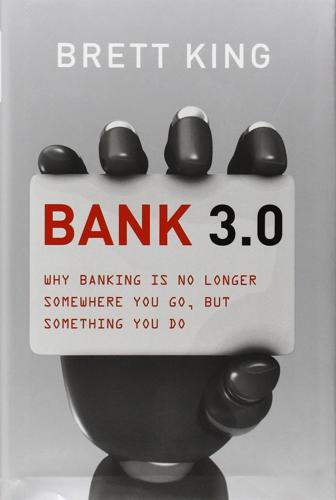
Bank 3.0: Why Banking Is No Longer Somewhere You Go but Something You Do
by
Brett King
Published 26 Dec 2012
However, the microfinance revolution effectively shattered these myths by demonstrating that when poor households have access to financial services, not only do they save, they also have high repayment rates and low default rates when they borrow. Muhammad Yunus, the founder of Grameen Bank in Bangladesh, was awarded the Nobel Peace Prize in 2006 for his efforts to revolutionise microcredit on the subcontinent. Beyond microfinance, however, one of the largest sources of income for developing economies these days is the large population of expatriates living and working overseas who remit funds back to their families in their home countries. Peer-to-peer money remittances enable an expatriated worker to send money across international borders to family or friends.
…
Given the limited number of network operators in each market, banks should move quickly in case they get locked out by exclusivity agreements or other considerations. To illustrate, the Bank of the Philippine Islands (BPI) and Globe Telecom have recently announced the launch of a mobile microfinance institution, PSBI (Pilipinas Savings Bank).23 PSBI is a traditional bank that has been converted for use in the mobile and microcredit arena. Secondly, rather than treat mobile payments as a threat, banks need to see it as an opportunity to open otherwise unprofitable markets for low-income segments. Banks will need strong partners and a strong platform to succeed. If you want to bank the world, the mobile phone is the easiest and cheapest way to do it, as Kenya and the Philippines have shown.
…
Metcalfe’s Law: Attributed to Robert Metcalfe, this law states that the value of a telecommunications network is proportional to the square of the number of connected users of the system (n2). MFI: Microfinance Institution—an alternate form of bank found in developing countries which provides microcredit lending. MIRC: Magnetic Ink Character Recognition Mobile Portal: A website designed specifically for mobile phone interfaces and mini-browsers. Mobile Money: Bank-like services delivered over a mobile device to enable payments between two parties; successful providers include M-Pesa, Edy, G-CASH, MTN Money, T-money, Edy, Suica.
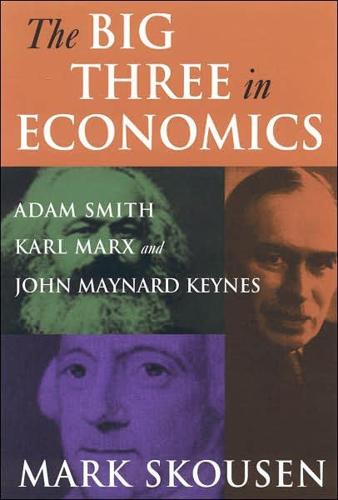
Big Three in Economics: Adam Smith, Karl Marx, and John Maynard Keynes
by
Mark Skousen
Published 22 Dec 2006
In a 1993 study of the Four Tigers and the East Asian economic miracle, it concludes, "The rapid growth in each country was primarily due to the application of a set of common, market-friendly economic policies, leading to both higher accumulation and better allocation of resources" (World Bank 1993, vi). Perhaps the best example of change in development economics is reflected in the work of Muhammad Yunus, president of the Grameen Bank in Bangladesh and founder of the micro-credit revolution. In his book, Banker to the Poor; Yunus tells how he grew up under the influence of Marxist economics. But after earning a Ph.D. in economics at Vanderbilt University, he saw firsthand "how the market [in the United States] liberates the individual I do believe in the power of the global free-market economy and in using capitalist tools I also believe that providing unemployment benefits is not the best way to address poverty."
…
Etienne de. 141«4 213 Marginal productivity theory. 118-120 1930's, 135 Marginal utility. 108. 114 Materialism. 97 Marginalist revolution. 107-110 Mathematics. 55. 56. 115-116. 168 Marginality principle. 117 McConnell, Campbell. 179 Market economy, invisible hand. 19 Meltzer. Allan H., 154 Market imperfection. 214-215 Menger. Carl. 107-108 Market rate of interest. 130 Mercantilism. 7-9. 22. 44 Markets. Say's law oiWee Say's Law Micro-credit revolution. 204 Marshall. Alfred. 112-113. 115. 133q Microeconomics Marshall Plan. 201 imperfect competition. 134-135 Marx. Eleanor. 83 macroeconomics linked to. 129. 137«2 Marx. Karl neoclassical. 205 an antieconomist, 94-95 Mill. John Stuart. 50. 61-63. 106. 122 beard and Zeus. 78 Minsky.
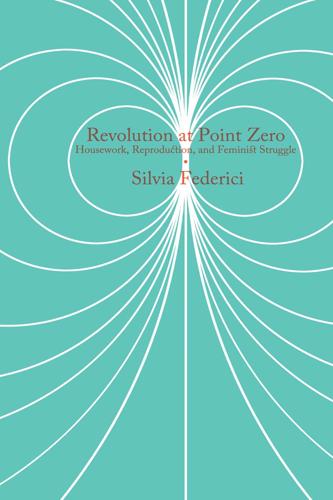
Revolution at Point Zero: Housework, Reproduction, and Feminist Struggle
by
Silvia Federici
Published 4 Oct 2012
By the 1980s, this resistance was recognized as the main factor in the crisis of the World Bank’s agricultural development projects, prompting a flood of articles on “women’s contribution to development,” and later, initiatives aimed at integrating them into the money economy such as NGO-sponsored “income generating projects” and microcredit lending schemes. Given these events, it is not surprising that the restructuring produced by the globalization of the world economy has led to a major reorganization of reproduction, as well as a campaign against women in the name of “population control.” In what follows, I outline the modalities of this restructuring, identify the main trends, its social consequences, and its impact on class relations.
…
Refusal to be without access to land has been so strong that, in the towns, many women have taken over plots in public lands, planted corn and cassava in vacant lots, in this process changing the urban landscape of African cities and breaking down the separation between town and country.14 In India too, women have restored degraded forests, guarded trees, joined hands to chase away the loggers, and made blockades against mining operations and the construction of dams.15 The other side of women’s struggle for direct access to means of reproduction has been the formation, across the Third World—from Cambodia to Senegal—of credit associations that function as money commons.16 Differently named, “tontines” (in parts of Africa) are autonomous, self-managed, women-made banking systems, providing cash to individuals or groups that can have no access to banks, working purely on the basis of trust. In this, they are completely different from the microcredit systems promoted by the World Bank, which functions on the basis of shame, arriving to the extreme (e.g., in Niger) of posting in public places the pictures of the women who fail to repay the loans so that some have been driven to suicide.17 Women have also led the effort to collectivize reproductive labor both as a means to economize on the cost of reproduction, and protect each other from poverty, state violence and the violence of individual men.
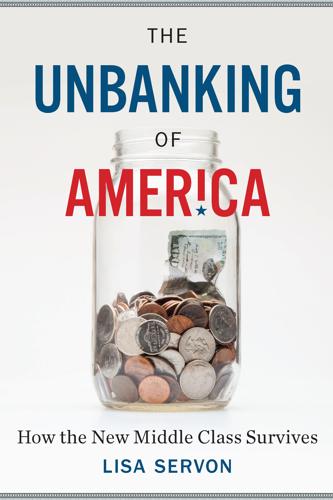
The Unbanking of America: How the New Middle Class Survives
by
Lisa Servon
Published 10 Jan 2017
Sixty-three percent of respondents: Think Finance, “Millennials Use Alternative Financial Services Regardless of Their Income Level”; Henderson, “The Surprising and Smart Reason Millennials Love Payday Loans and Prepaid Debit Cards.” 7. BORROWING AND SAVING UNDER THE RADAR 126 Ardener described how: Shirley Ardener, “Microcredit, Money Transfers, Women, and the Cameroon Diaspora,” Afrika Focus, vol. 23, no. 2 (2010): 11–24. Boston-based Ethiopian: Viviana A. Rotman Zelizer, The Social Meaning of Money: Pin Money, Paychecks, Poor Relief, and Other Currencies(New York: Basic Books, 1994). 127 Six percent of the US: Asli Demirgüç-Kunt and Leora F.
…
Paul Krugman argued: Paul Krugman, “Making Banking Boring,” New York Times, April 9, 2009. http://www.nytimes.com/2009/04/10/opinion/10krugman.html?_r=0 Bibliography Akasha, Nan. “Money Archetypes and Guilt and Shame.” Nan Akasha blog, May 29, 2012. Akerlof, George A., and Robert Shiller. Phishing for Phools: The Economics of Manipulation and Deception. Princeton, NJ: Princeton University Press, 2015. Ardener, Shirley. “Microcredit, Money Transfers, Women, and the Cameroon Diaspora.” Afrika Focus, vol. 23, no. 2 (2010): 11–24. Arnett, Jeffrey J., and Joseph Schwab. “The Clark University Poll of Parents of Emerging Adults.” Worcester, MA: Clark University, September 2013. Associated Press. “Citigroup Ordered to Refund $700 Million in Credit Card Case.”

Radical Cities: Across Latin America in Search of a New Architecture
by
Justin McGuirk
Published 15 Feb 2014
The irony is that, having been denied in Caracas, U-TT is now developing a scheme along very similar lines in South Africa. In Cape Town’s Khayelitsha township, the architects are working on a cooperative model that revolves around rooftop solar panels. The idea is that the government provides leases of fifteen years, against which the owners can secure microcredit loans for construction, while the solar panel eventually generates income by feeding excess energy back into the grid. If it works, it would be the basis of a cooperative and sustainable model of urbanism – a heterotopia indeed. That project is indicative of the fact that, these days, most of U-TT’s experiments are abroad.
…
By contrast, the strict regulations governing any American city strive to segregate the domestic from the economic, and categorise the city into zones suitable for property speculation rather than rich social interaction. Can San Diego learn from the likes of Tijuana? Effectively, what Cruz is doing here is enabling a nonprofit NGO, Casa Familiar, to act as a small-scale developer in the interests of the community. By transferring government funding to individuals, through micro-credit, the NGO becomes a conduit between top-down processes and bottom-up impulses. ‘The community becomes co-owner or co-manager of resources,’ says Cruz. ‘Because the paradigm of the top down is that it just produces units for customers to occupy, but there is no social infrastructural dimension where communities then begin to shape programming, production, food.’
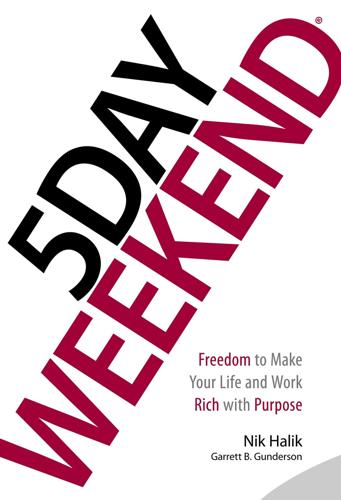
5 Day Weekend: Freedom to Make Your Life and Work Rich With Purpose
by
Nik Halik
and
Garrett B. Gunderson
Published 5 Mar 2018
He began loaning money to these women from his own pocket, starting with just $27. From that initial $27 investment, Nobel Prize–winner Muhammad Yunus built Grameen Bank, which today has 2,565 branches with 22,124 staff serving 8.35 million borrowers (97 percent women) in 81,379 villages. This microcredit pioneer lends out more than a billion dollars a year in loans averaging less than $200.21 The bank has lifted millions of illiterate peasants out of the depths of poverty by helping them create small but thriving businesses. “If we wait until we’re ready, we’ll be waiting for the rest of our lives.”
…
Keohohou, Nicki Kets de Vries, Manfred keystone habits Kiyosaki, Robert Komisar, Randy Kroc, Ray L labor markets, technology’s transformation of Lavie, Peretz Lemony Snicket Lending Club leverage, and Cash Flow Insurance and content and creating greater returns and credit scores and current assets and entrepreneurship and real estate investments liabilities, and insurance vs. debt liberated entrepreneurs life boards, creating life insurance, combining with long-term care insurance as protective expense whole life insurance lifestyle, and cash flow cutting expenses of and freedom and Growth investment strategies and loan debt Linchpin (Godin) LinkedIn liquidity, and Cash Flow Insurance of checking and savings accounts and economic cycles and failure of conventional investments of Growth investments and real estate investments and reducing debt and tax lien certificates Litecoin “Live Like You Were Dying” (song) Living Wealthy Accounts LLCs loads, on mutual funds loans, and Cash Flow Index and credit scores and economic cycles for real estate investments restructuring from retirement plans against whole life insurance policies See also debt location, and real estate investments and storage unit construction Loehr, Jim long-term care insurance Loopnet Lyft, as entrepreneurial opportunity Lynch, Peter M Mackay, Harvey “mailbox money” myth maintenance, and storage units Mandela, Nelson Marcus Aurelius market conditions, and business startup investments and real estate investments market cycles See also economic cycles market demand, and entrepreneurial opportunities Mastermind Principle materialism, and the American dream and simplicity Maxwell, John McCain, John McCoy, Dan meals, as tax deduction meaning, and generosity medical insurance, as protective expense Melish, Stephanie mental capital mental energy mentors, and building your inner circle microcredit Mill, John Stuart mindfulness mindset, of abundance changing components of a strong and control and debt and hiring employees and limitations and Living Wealthy Accounts and quitting your job and real estate investments and resourcefulness strengthening mineral rights mobile apps, as entrepreneurial opportunity Moffat, Kyle Momentum investments, and active vs. passive income streams business startups cryptocurrencies description of gold and silver speculation and Growth investment strategies investing in people and Passive Income Ratio private equity investments purchasing distressed businesses understanding financial reports Monero monetary policies, and economic cycles moneylenders money managers fees money mastery Moody, D.
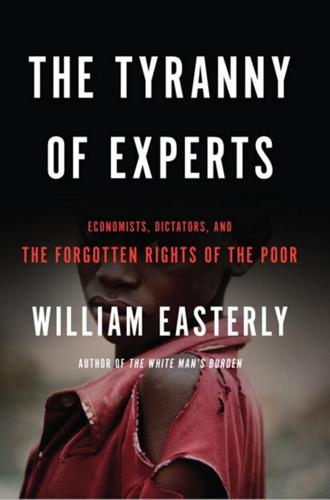
The Tyranny of Experts: Economists, Dictators, and the Forgotten Rights of the Poor
by
William Easterly
Published 4 Mar 2014
The number of mobile-phone subscribers in Africa has quintupled in the last seven years, to reach nearly 500 million.41 They have been applied to unexpected uses. Just as cell phones themselves bypassed dysfunctional land lines in Africa, Africans are using their cell phones to bypass inefficient state-regulated traditional banks. The firm MPESA in Kenya originally intended to be a microcredit organization but found that its customers wanted to use the technology they devised for repaying microcredits for something else. MPESA had stumbled by chance into a huge market for financial transfers by cell phone. Three years after its founding in March 2007, MPESA was reaching 40 percent of Kenya’s adult population.42 MPESA now processes more transfers within Kenya than Western Union does internationally.43 Outsiders tend to overlook another less sexy but still transformative technology in Africa: motor vehicles.
…
During his stay in New York, his family back in Senegal might need food or money. The merchant simply calls another Mouride merchant in Sandaga who can dispense cash to the family the same day in a small Sandaga shop. The Mourides have built a system that allows instantaneous and nearly costless financial transactions. While the aid establishment is supporting microcredit projects around the world with mixed results, almost everyone has overlooked the Mourides, who can pride themselves on decades of successful microfinance. Their dense network also serves for exchange of market information: one Mouride merchant got a tip through the network to buy plastic storks in New York City’s Chinatown to sell to German tourists in the French city of Strasbourg, knowing that Strasbourg’s merchants would not be able to match the price.16 The Mouride network has made possible prosperity for many of its members, both back in Senegal and abroad.
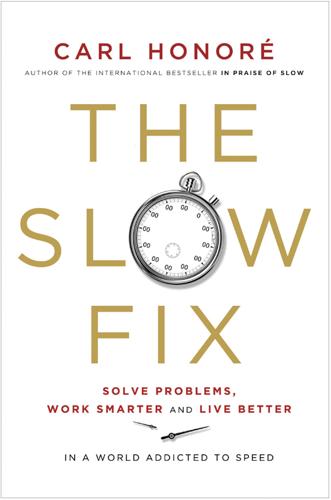
The Slow Fix: Solve Problems, Work Smarter, and Live Better in a World Addicted to Speed
by
Carl Honore
Published 29 Jan 2013
Four years after the one-off cash injection, school attendance was up, poverty was down by two thirds and many more villagers were participating in community activities. “We felt that poor people clearly have the right to decide how the money is spent,” says Steve Price-Thomas, who was Oxfam’s director for Vietnam at the time. “What better than to put money in their hands and let them decide what to do with it?” That same thinking underlies the microcredit movement, where specialist banks, funds and brokers funnel small loans to those too poor to pass muster in the mainstream financial system. My favourite example is Kiva, whose website brings together borrowers in the developing world and lenders willing to back them with loans as low as $25. Recipients display the same can-do entrepreneurial spirit as Pérez.
…
Why else does simply placing an image of a pair of human eyes beside an honesty box make us cough up more money? And how else do you explain passing fads for kipper ties, polyester jumpsuits and mullets? To change ingrained behaviour, organizations such as Alcoholics Anonymous and Weight Watchers motivate members through group meetings. The micro-credit movement also uses peer pressure by tying borrowers into small groups where a single default can cut off everyone else’s access to capital. In war, soldiers do not risk their lives to achieve government policy or follow orders; they put themselves in the line of fire because that is what is expected by their band of brothers.
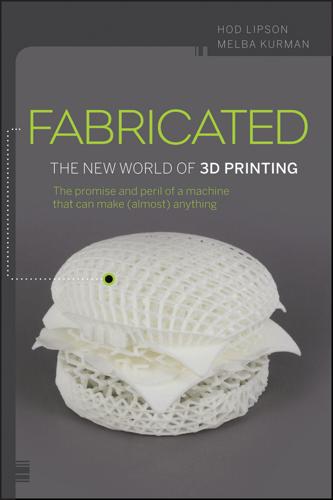
Fabricated: The New World of 3D Printing
by
Hod Lipson
and
Melba Kurman
Published 20 Nov 2012
People’s creativity will know no bounds if offered the ability to fabricate unique novelty toys and related gear in the privacy of their own homes. Combine that with scan technologies, easy design software, and robotics, and the possibilities are endless. Microfinancing microfactories Microloans, microcredit, and microtransactions are part of a burgeoning microfinance economy. Micro scale transactions are possible thanks to communications technologies and online banking that quickly handle international transactions. Lots of small investments can be easier to gather than a few large investments. In certain regions, several small investments can have a larger cumulative impact than a few carefully chosen larger investments.
…
Chapter 3 1 Quote from a press conference covered by VentureBeat in May 2012. http://venturebeat.com/2012/05/10/3d-systems-ceo-we-want-3d-printing-to-be-as-big-as-the-ipad/ 2 Quote from Terry’s blog, July 2012. http://wohlersassociates.com/blog/2012/07/why-most-adults-will-never-use-a-3d-printer/ Chapter 4 1 Chris Anderson, The Long Tail: Why the Future of Business is Selling Less of More (New York, NY: Hyperion Press, 2008). 2 Joseph Pine and James Gilmore, The Experience Economy (Boston, MA: Harvard Business School Press, 1999). 3 Eric Reis, The Lean Startup: How Today's Entrepreneurs Use Continuous Innovation to Create Radically Successful Businesses. (New York, NY: Crown Publishing Group, 2011). 4 http://en.wikipedia.org/wiki/Microcredit Chapter 5 1 Harris L. Marcus, Joel W. Barlow, Joseph J. Beaman, and David L. Bourell, “From computer to component in 15 minutes: The integrated manufacture of three-dimensional objects.” JOM: Journal of the Minerals, Metals and Materials Society 42, no. 4 (1990): 8–10. 2 Paul Williams, “Three Dimensional Printing: A New Process to Fabricate Prototypes Directly from CAD Models.”
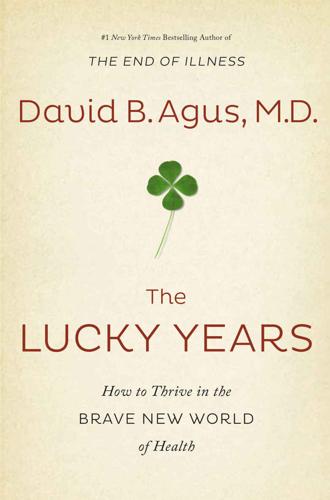
The Lucky Years: How to Thrive in the Brave New World of Health
by
David B. Agus
Published 29 Dec 2015
Famous in his native country of Bangladesh and world renowned as a civic leader and successful social entrepreneur and economist, Yunus was awarded the Nobel Peace Prize in 2006 for founding the Grameen Bank and pioneering the practice of microfinance—providing banking to entrepreneurs and small businesses that would not otherwise have access to such services. Some have called him the godfather of microcredit. What started as a passion to help “just one person each day” has grown into a global phenomenon of two hundred fifty microcredit programs in nearly one hundred countries. His story exemplifies not only the power of blending art and science, but also catering to people’s basic needs, intuitions, and motivations in pursuit of innovation—and a healthier tomorrow.
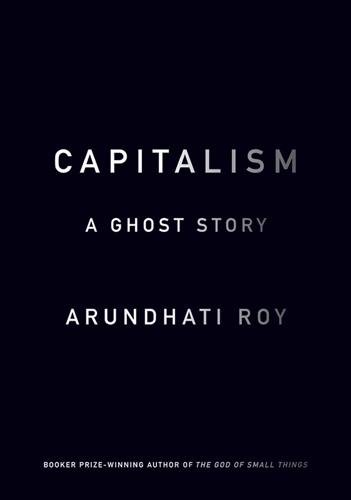
Capitalism: A Ghost Story
by
Arundhati Roy
Published 5 May 2014
Capitalists seized on the first half of Filene’s suggestion and, by disbursing “affordable” loans of tens of millions of dollars to working people, turned the US working class into people who are permanently in debt, running to catch up with their lifestyles.42 Many years later, this idea has trickled down to the impoverished countryside of Bangladesh when Mohammed Yunus and the Grameen Bank brought microcredit to starving peasants with disastrous consequences. The poor of the subcontinent have always lived in debt, in the merciless grip of the local village usurer—the Baniya. But microfinance has corporatized that too. Microfinance companies in India are responsible for hundreds of suicides—two hundred people in Andhra Pradesh in 2010 alone.
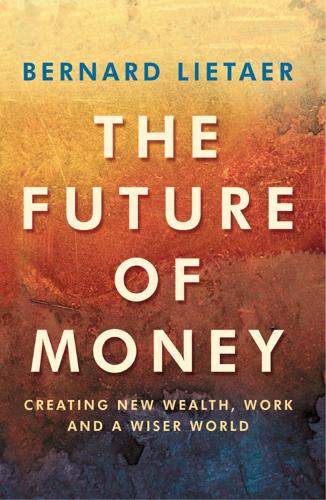
The Future of Money
by
Bernard Lietaer
Published 28 Apr 2013
It has the support of important individuals in the community as well as broad community interest. Although future developments of the system are for the community itself to decide, the system even at this stage allows for a substantial development in import substitution, interestfree banking, micro-credits, and funding of health programs and education through the Bia Bank. The Bia Kud Chum Community Currency System is the first system of its type in South East Asia. What is technically original here is the combination of a paper currency technology with a group system of mutual credits (each account Unit represents in fact a group of coresponsible individuals).
…
Theory shows that true market economies require large numbers of small suppliers and consumers, and low barriers to entry. These perfect conditions are rarely prevailing in today's economy. The opposite of a market price is a price fixed by some authority - individual, government or corporate. Micro-credit: Refers to loans in conventional national currency for small amounts to small-scale entrepreneurs. The Grameen Bank in Bangladesh has been a model of success in such activities. Monetarism: Economic theory which posits that only the quantity of money determines prices, and therefore that it is counterproductive to use monetary adjustment tools for purposes other than inflation control.

The Blue Sweater: Bridging the Gap Between Rich and Poor in an Interconnected World
by
Jacqueline Novogratz
Published 15 Feb 2009
Though I’d been uncomfortable about focusing on women when I was first given the opportunity to come to Africa, I’d begun to see that if you support a woman, you support a family. I’d also learned that I definitely didn’t like the word “expert” when it came to development. I still don’t. The question for me now was whether Rwanda was ready for microcredit—were there enough people and institutions to support the idea? I also questioned whether the Grameen Bank model would work in Rwanda. Bangladesh had something this country didn’t: a history of trading and a feeling of solidarity among the people, especially since nationalism had taken root because of the war with Pakistan.
…
I loved the group of founding partners. They did the work, owned the institution, and would carry it forward. Prudence, Ginette, and Liliane were a powerful triumvirate. The future looked bright. The bakery, too, was thriving. My work was done. I shared my thoughts with my friend Dan; we were completing a study of microcredit and what it meant for a family’s ability to buy food. Dan was becoming known for his work on “household food security.” He’d recently been in Malawi, a country that had exported maize while the poorest among its population, including refugees from nearby Mozambique, nearly starved. Dan wanted to know what we could do to ensure that families could take care of themselves.
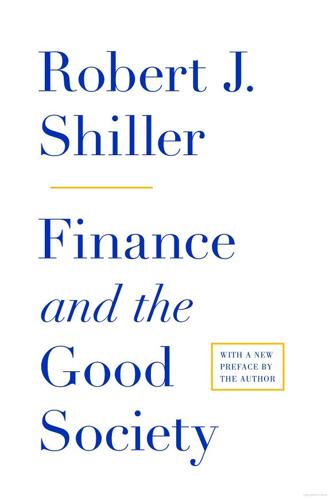
Finance and the Good Society
by
Robert J. Shiller
Published 1 Jan 2012
They should instead have expanded the coverage of repurchase agreements in M3, which might have helped them see the origins of the speculative bubbles and the risks of a crisis. 8. This trend was seen long before the beginnings of the nancial crisis in 2007. See Marcus (1984). 9. Yunus (2003). 10. Karlan and Zinman (2011). Banerjee and Du o (2010) report that microcredit has numerous e ects, including promoting self-control and saving on the part of the borrowers. 11. Bucks et al. (2009): Table 6B, p. A18. 12. Barr (2004). 13. Blank and Barr (2009). Chapter 4. Investment Bankers 1. Malmendier (2005: 38) quotes Cicero referring to “partes illo tempore carissimae” (shares that had a very high price at that time). 2.
…
Kaplan, Steven N., and Antoinette Schoar. 2005. “Private Equity Performance: Returns, Persistence, and Capital Flows.” Journal of Finance 60(4):1791–823. Karlan, Dean, and Margaret A. McConnell. 2009. “Hey Look at Me: The E ect of Giving Circles on Giving.” Unpublished paper, Yale University. Karlan, Dean, and Jonathan Zinman. 2011. “Microcredit in Theory and Practice: Using Randomized Credit Scoring for Impact Evaluation.” Science 332(6035):1278–84. Kasper, Rob. 1980. “Jerry Rubin Goes Wall Street, but Still Can’t Tie a Tie.” Baltimore Sun, August 19, B1. Kat, Harry, and Faye Menexe. 2003. “Persistence in Hedge Fund Performance: The True Value of a Track Record.”
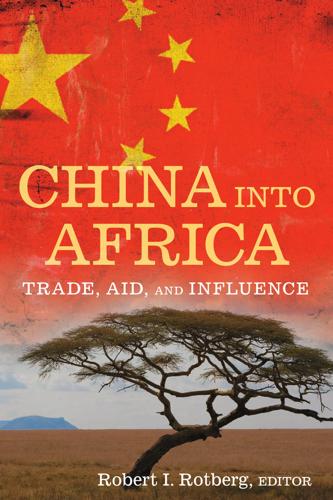
China into Africa: trade, aid, and influence
by
Robert I. Rotberg
Published 15 Nov 2008
Just two months after the outbreak of bird flu in Nigeria in 2006, the Chinese government donated avian influenza support materials. This gesture was repeated in November 2007, leading to an agreement between the Chinese and Nigeria, for the latter’s fight against malaria and bird flu. This new partnership also included cooperation in commercial livestock development, including microcredit financing and technology acquisition.20 13-7561-4 ch13.qxd 9/16/08 4:23 PM Page 279 China’s Expanding Relations with Nigeria 279 Several Nigerian educational institutions have established pedagogical and cultural links to China. One federal polytechnic college, for instance, has organized exhibitions on the Chinese culture and landscape and hosts frequent exchanges of cultural troupes and students.
…
China model, and, 182; ONCC Videsh and, 120; 288; Zimbabwe and, 261 Sudan and, 264; trade flows and, 95; International Olympics Committee, 68 transparency and, 124 International system, 297, 299, 306 Indian Ocean: development and, 144; Internet, 283 naval strategy and, 181–84 Interparliamentary exchanges, 241–42 Indian Ocean Newsletter, 173 Iran, 17, 39, 151; arms transfers and, Industrial and Commercial Bank of 176; military ties and, 159, 163, 165, China, 148 171 Information management, 238 Iraq, 59, 304; military assistance and, Infrastructure, 1, 87, 218, 272, 300; 159 ambivalence regarding, 75; capital Islam, 126, 239, 302; Union of Islamic for, 117; challenges to, 301; China Courts and, 304 model and, 298; colonialism and, 40; Israel, 263, 304; arms transfers and, 176 16-7561-4 index.qxd 9/16/08 4:25 PM Page 329 Index 329 Janjaweed militias, 256, 258; Darfur Kordofan, Sudan, 258 and, 128; oil and, 109, 113 Kurlantzick, Joshua, 217–18, 222 Japan, 3, 32; colonialism and, 116; eco- nomic growth of, 226; high pay- Labor, 258–59, 280–81, 292, 297; Angola ments and, 123; imports from, 97; and, 11; Chinese as, 2, 11, 18, 72–74; network trade and, 107; ODA and, isolation of, 76; discipline and, 122; 213; oil and, 111; Sudan and, 126; FDI and, 106; legal violations trade flows and, 95 against, 252; Nigeria and, 280, 291; Jiang Enzhu, 242 product diversification and, 102; Jiangsu International, 165 south-south trade and, 88; standards Jiang Zemin, 21, 234; hospitality of, 236; for, 290, 301 theory of the Three Represents, 237 Lagos, Nigeria, 281–86, 287 Jia Qinglin, 24 Lamu, Kenya, 131 Jibrin, Walid, 279 Landmines, 178 Jilin University, 29 Land reform, 262 Ji Pengfei, 28 Langfang, China, 178 Johnson, Douglas, 128 Language, 302; Chinese, 279; Chinese Johnson-Sirleaf, Ellen, 178 immigration and, 287; concessional Juba, Sudan, 131, 171 loan information and, 226; loan Junggar Basin, 110 information and, 218–20; in Nigeria, 281 Kabila, Laurent, 161 Latin America, 58–60; FDI and, 105; Kaduna, Nigeria, 278–79 national security and, 155; raw mate- Kajola, Ogun State, Nigeria, 276 rials and, 94 Kakiri, Uganda, 172 Lee, Henry, 5 Kano, Nigeria, 279 Lee Kuan Yew, 252 Kapiri Mposhi, Zambia, 146 Legal codes, 14 Kaunda, Kenneth, 146, 273 Legal responsibility, 253–56; human Kebbi State, 278 rights lobbying and, 264; in Sudan, Kenya, 3, 70; arms transfers to, 9, 163; 257–59, 264–66; vs. moral culpabil- Confucius Institutes in, 29; embassy ity, 251, 264; Zimbabwe and, 263–66 attacks in, 304; Japanese companies Leon, Tony, 240 in, 32; military assistance and, 161; Lesotho, 11, 70–71; Taiwan and, 211; oil and, 4, 115 visited by Chinese leaders, 28 Kenyan Pipeline Corporation, 131–32 Li Anshan, 8 Kew, Darren, 11, 272 Liao Xiaqi, 149 Khartoum, Sudan, 112–13, 124–26, 132; Li Baodong, 235 Darfur and, 128–29; military assis- Liberation movements, 25, 156–57, tance and, 160, 170, 183 232–33, 260; Chinese support of, 9, Khrushchev, Nikita, 112, 202 273, 299; political outreach to, 231 Kiir Mayardit, Salva, 239–40 Liberia, 6, 100; peacekeeping in, Kisangani, Democratic Republic of 177–78; SEZs and, 147; Taiwan Congo (Stanleyville), 157, 160 and, 211–12 16-7561-4 index.qxd 9/16/08 4:25 PM Page 330 330 Index Libya, 27, 155; arms transfers to, 163; Marsa al-Bashair, Sudan, 125, 131 military assistance and, 161, 183; oil Martial arts, 77 reserves and, 115; Taiwan and, 162; Massacres, 254; in Zimbabwe, 260–61 Zimbabwe and, 262 Matabebeland, 260 Li Chengwen, 238 Mauritania, 27, 156, 161; oil reserves Ling Guiru, 71 and, 115 Li Peng, 28, 33 Mauritius, 70, 95, 101, 106; apparel and, Lisbon, Portugal, 117 107; development and, 143; Egypt Liu Guijin, 13, 130, 170 and, 150; foreign aid and, 200; Liu Naiya, 239 Indian Ocean development and, 145; Li Xianlian, 28 SEZs and, 140, 147 Li Zhaoxing, 210 Ma Wenpu, 242 Loans, 7, 33, 80; from China, 303; to Mayardit, Salva Kiir, 128 Nigeria, 276, 278, 292; as political Mbeki, Thabo, 10, 66, 290 outreach, 235; Zimbabwe and, 262. Memoranda of Understanding (MOU): See also concessional loans with Nigeria, 275–76; on South Lobito, Angola, 120; Benguela railway Africa and, 150–51 Microcredit financing, 278 London, England, 213 Middle East, 94, 151, 155; arms transfers London Inter-Bank Offered Rate and, 176; Egypt and, 150; foreign aid (LIBOR), 119 and, 198; government oil manage- Look East policy, 261–62 ment and, 115; military ties and, 163; Louis Berger (engineering firm), 40, 206 naval strategy and, 181–83; United Luanda, Angola, 117, 120, 165 States and, 289 Lumumba, Patrice, 157 Military, 183–85, 231; aid for, 157–61; Lusaka, Zambia, 173 arms deliveries and, 175–76; bilateral assistance and, 164–66, 169–70, Macao, China, 139, 152 172–75, 183–85; Chinese, 277; Madagascar, 4, 27, 70, 95, 161 human rights abuses and, 255; liber- Madillas market, 281 ation movements and, 156–57; navy Magellan, Ferdinand, 180 and, 179–83; Nigeria and, 167–69, Maghreb region, 149 279; peacekeeping and, 176–78; Malaria, 276, 278; U.S. funding and, 303 Sudan and, 170–72, 256–58; twenty- Malawi, 2, 158; Taiwan and, 211–12 first century and, 161–64; U.S., Malaysia, 103, 264; colonialism and, 303–4; U.S.

Blockchain Revolution: How the Technology Behind Bitcoin Is Changing Money, Business, and the World
by
Don Tapscott
and
Alex Tapscott
Published 9 May 2016
They struggle to start new businesses, register titles to their land and other assets, and resolve outstanding claims from the Sandinista government’s mass land expropriation in the 1980s.3 Stellar’s platform would enable Nicaraguans to transfer, save, invest, borrow, and lend money. Kim was both impressed and surprised by the local focus on microcredit. She understood that access to credit was paramount to economic inclusion but believed that savings, the ability to store value reliably and securely, was a prerequisite for almost all other financial services. When Kim asked about savings, she was told, “Oh, savings is not a problem around here.
…
He said, “A lot of African countries leapfrogged the infrastructure of landline telecoms with cellular. They skipped that step. Blockchain will have the greatest impact in areas where the payment networks don’t exist or are very poor.”20 Blockchain will push many nascent initiatives, such as mobile-money service providers like M-Pesa in Kenya, owned by Safaricom, and microcredit outfits globally, into high gear by making them open, global, and lightning fast. A bank is the most common financial institution, and so we will use it as an example here. How do you open a bank account? If you live in the developing world today, you will likely have to visit the branch in person.
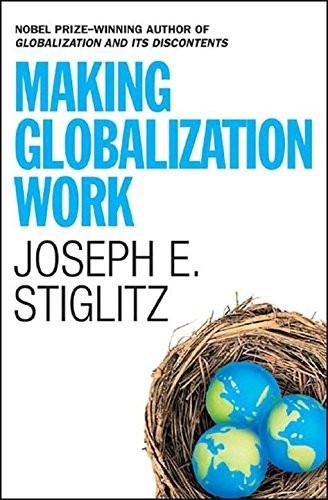
Making Globalization Work
by
Joseph E. Stiglitz
Published 16 Sep 2006
A former World Trade Organization official said that if trade liberalization—the lowering of tariffs and other trade barriers—had not fully delivered on its promise of enhanced growth and reduced poverty, it was the fault of the developing countries, which needed to open their markets more to free trade and globalize faster. But an Indian running a micro-credit bank stressed the downside of free trade for India. He spoke of peanut farmers who could not compete with imports of Malaysian palm oil. He said it was increasingly difficult for small and medium-sized businesses to get loans from banks. This was not surprising. Around the world, countries that have opened up their banking sectors to large international banks have found that those banks prefer to deal with other multinationals like Coca-Cola, IBM, and Microsoft.
…
In many developing countries, much important collective action is at the local level. In Bali, as in much of Asia, irrigation for agriculture is provided by a network of canals. These are maintained by the community which ensures that the water is shared fairly among the villages and villagers. The story of the Grameen micro-credit bank in rural Bangladesh, which gives small loans to poor rural women—who have a far better repayment rate than the rich urban borrowers—is well known. These schemes have been so successful because they entail groups of women who take responsibility for one another, helping one another out and ensuring that each pays what is due.30 Its sister organization BRAC (originally the Bangladesh Rural Advancement Committee), also a nongovernmental organization, is even larger than Grameen, and both have branched out into a wide variety of activities.
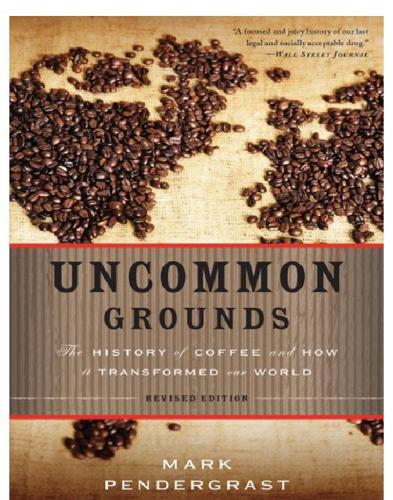
Uncommon Grounds: The History of Coffee and How It Transformed Our World
by
Mark Pendergrast
Published 2 Jan 2000
During the 1990s, environmentalists and birders created a market for “bird-friendly coffee” grown in shaded plantations that provide important habitat for migratory birds and other rain forest animals. Coffee retailer Bill Fishbein’s first visit to poverty-stricken Guatemalan farms in 1988, inspired him to found Coffee Kids, which provides micro-credit loans to promote alternative income in coffee communities. Courtesy Coffee Kids. This Fair Trade logo assures consumers that the coffee beans they pruchase were grown by democratically run cooperatives of small farms that receive a decent price for their beans. There are also other certifications and ways to help farmers.
…
By injecting life into local economies, families can diversify their income and continue farming coffee without total dependence on it. Fishbein retired from Coffee Kids in 2008, but the organization continued under the guidance of executive director Carolyn Fairman. In 2009, Coffee Kids worked with sixteen organizations in Mexico, Guatemala, Nicaragua, Costa Rica, and Peru. Projects included microcredit and savings, organic gardening and small animal production, training center development, scholarships, and health awareness programs. Similarly, Vermont-based Grounds for Health set up clinics in coffee-growing regions of Central America to test for and treat cervical cancer, a major problem among women in remote areas.
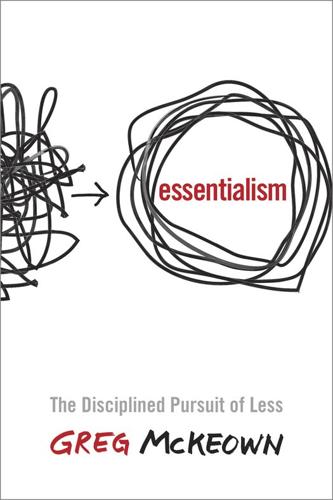
Essentialism: The Disciplined Pursuit of Less
by
Greg McKeown
Published 14 Apr 2014
Geoff was fiercely ambitious, driven, and committed to making a contribution to the world: he was on the board of Kiva, he had been named Ernst and Young’s Entrepreneur of the Year and a Young Global Leader by the World Economic Forum, he was the co-founder of a successful impact investment fund, and he was the CEO of a global microcredit organization that was reaching more than 12 million poor families around the world. He was thirty-six years old and on top of his game. Geoff traveled constantly, which often made sleep difficult. His company was based in Seattle but had offices in San Francisco, India, and Kenya. He would routinely fly to London for meetings, then to India for six days to be in five different cities, to Geneva for hours of meetings with investors, and then back to Seattle for a day and a half.
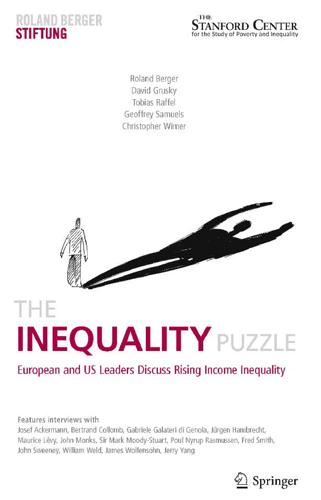
The Inequality Puzzle: European and US Leaders Discuss Rising Income Inequality
by
Roland Berger
,
David Grusky
,
Tobias Raffel
,
Geoffrey Samuels
and
Chris Wimer
Published 29 Oct 2010
I don’t think that reducing poverty is a means in itself, and the results tend to be very variable. As I said before, I am convinced that efforts to ensure the fair distribution of opportunities are more beneficial to society in the long run. Charity can demean and stigmatize the poor. Social businesses, like our joint venture with Grameen, and similar microcredit schemes on the other hand empower people and allow them to play an active role in business life. We want to shift the emphasis from institutional help to selfhelp. Governments are trusted when people perceive them to be working to establish a better life for all their citizens. Equalizing opportunities play an important role here, but populist wealth distribution schemes are another matter completely!
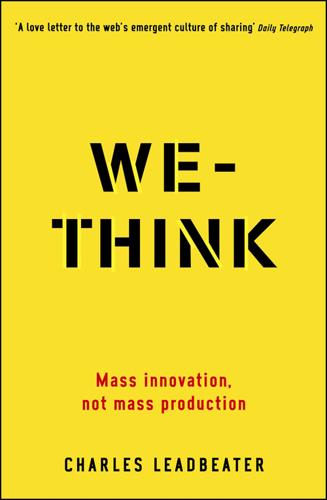
We-Think: Mass Innovation, Not Mass Production
by
Charles Leadbeater
Published 9 Dec 2010
In Roy’s world, demand can generate its own supply: people who need light can become lighting engineers; learners can become teachers. The most famous example of barefoot thinking in action is Bangladesh’s Grameen Bank, founded in 1976 by Muhammad Yunus, an economics professor, to provide very poor people with micro-credit. Traditional banks, reliant on professional expertise, regarded poor people seeking loans as unprofitable. Grameen employs a small body of professionals who train an army of barefoot bankers who then work with village committees to administer Grameen’s tiny loans. By 2003, Grameen had lent more than $4 billion to about 2.8 million Bangladeshis, including in 570,000 mortgages to build tin-roofs for huts to keep people dry during the monsoons.
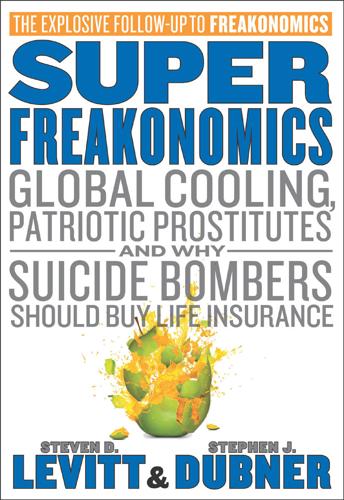
SuperFreakonomics
by
Steven D. Levitt
and
Stephen J. Dubner
Published 19 Oct 2009
The government has tried to help by banning dowries and sex-selective abortions, but these laws have largely been ignored. A number of monetary interventions have also been designed for Indian women. These include Apni Beti, Apna Dhan (“My Daughter, My Pride”), a project that pays rural women not to abort female babies; a vast micro-credit industry that makes small-business loans to women; and an array of charitable programs launched by a veritable alphabet soup of international aid agencies. The Indian government has also vowed to make smaller condoms more readily available. Unfortunately, most of these projects have proven complicated, costly, and, at best, nominally successful.
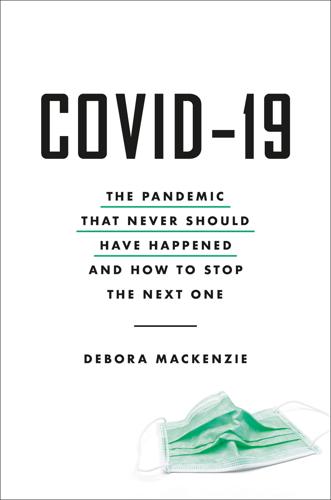
Covid-19: The Pandemic That Never Should Have Happened and How to Stop the Next One
by
Debora MacKenzie
Published 13 Jul 2020
The global supply chains of money, materials, people, energy, and component parts that underpin industries falter and break. Airlines go under as they are not set up to weather even a temporary disappearance of travelers. Malaria worsens in Africa as insecticide and antimalarial bed net deliveries falter. Microcredit that underpins small businesses throughout the developing world defaults because payment collectors are locked down, causing ramifications throughout an economy. The number of people facing starvation threatened to double in April 2020, warned the World Food Programme, even though the same amount of food was available.
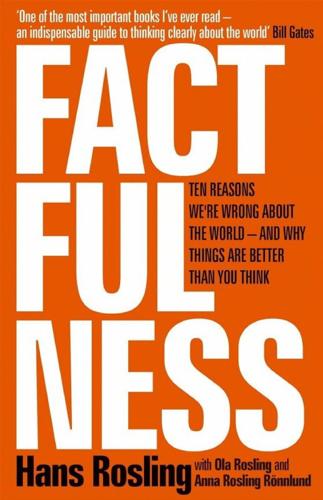
Factfulness: Ten Reasons We're Wrong About the World – and Why Things Are Better Than You Think
by
Hans Rosling
,
Ola Rosling
and
Anna Rosling Rönnlund
Published 2 Apr 2018
A smaller proportion of people than ever before is stuck in extreme poverty. But there are still 800 million people left. Unlike with climate change, we don’t need predictions and scenarios. We know that 800 million are suffering right now. We also know the solutions: peace, schooling, universal basic health care, electricity, clean water, toilets, contraceptives, and microcredits to get market forces started. There’s no innovation needed to end poverty. It’s all about walking the last mile with what’s worked everywhere else. And we know that the quicker we act, the smaller the problem, because as long as people remain in extreme poverty they keep having large families and their numbers keep increasing.
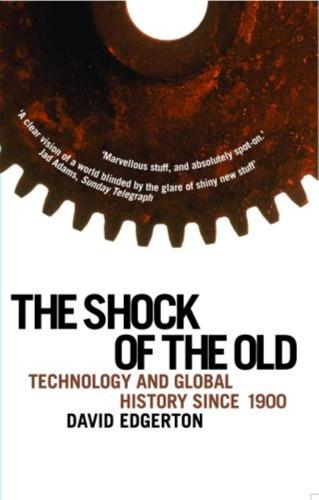
The Shock of the Old: Technology and Global History Since 1900
by
David Edgerton
Published 7 Dec 2006
Treadle-powered machines, not so different from those made before 1914, were, in the 1960s, ‘by far the most important modern appliance’ in a small town of the district of Huaylas in Andean Peru.23 In Mae Hong Son, northern Thailand, in April 2002, treadle-operated Singers decorated with a sticker celebrating 150 years of Singer machines were on sale alongside white goods, next to an internet café. At the other end of the world, an expensive (male) tailor working alone making men’s suits in Lecce, Italy, also used a treadle-operated Singer.24 Treadle-powered sewing machines feature regularly in discussions of micro-credit initiatives supported by international development agencies. The sewing machine had a very particular place in the thinking of Mahatma Gandhi, as exemplary of an alternative approach to production. Gandhi was a strong opponent of the machine-based industries and famously argued not for mass production, but for production by the masses.
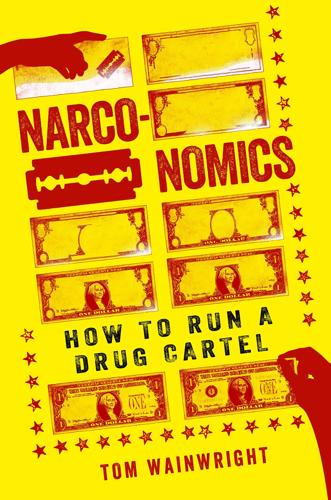
Narconomics: How to Run a Drug Cartel
by
Tom Wainwright
Published 23 Feb 2016
When analysts talk about drug cartels taking over territory where there is a vacuum of power, they envisage territory where the government has neglected to send enough police or soldiers. More often than not, there is another problem: these are places where the government has not bothered to provide any public services, from recreation to rubbish collection and microcredit. In short, the more responsible the state is, the less scope there is for the mob to show off its own phony “responsible” side. How can anyone undermine the role that cartels play as a guarantor of illegal agreements? Unlike other services, this is one that the state cannot provide, as price-fixing and bid rigging are rightly illegal.
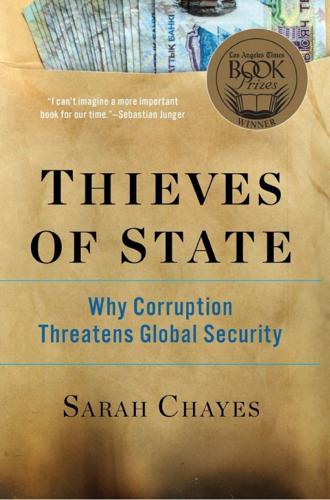
Thieves of State: Why Corruption Threatens Global Security
by
Sarah Chayes
Published 19 Jan 2015
A Trabelsi-linked exporter seeking to increase his margins by way of a discounted wholesale price could twist a grower’s arm by cutting the water to his land. As in Egypt, corruption was not confined to the top of the Tunisian government—it abounded at subnational levels too. Villagers complained about preferential distribution of government-financed microcredits or subsidized seed and fertilizer. “The local party boss decided who got them,” explained one small farmer, whose sickly calf was being examined by a veterinarian in the northeastern district of Nabeul. “He would give it to people who did things for him: worked on his house, or brought him gifts of honey or eggs”—what John of Salisbury referred to as “services and works that were not otherwise owed.” 13 Such “petty corruption” was allowed to flourish on the local level.

Food and Fuel: Solutions for the Future
by
Andrew Heintzman
,
Evan Solomon
and
Eric Schlosser
Published 2 Feb 2009
The larger hydrogen fuel cells have the additional advantage of producing pure drinking water as a by-product, a not-insignificant consideration in village communities around the world where access to clean water is often a critical concern. Distributed-generation associations need to be established throughout the developing world. Civil-society organizations, co-operatives (where they exist), micro-credit lending institutions, and local governments ought to view distributed-generation energy webs as the core strategy for building sustainable, self-sufficient communities. Breaking the cycle of dependency and despair, becoming truly “empowered,” starts with access to and control over energy. National governments and world lending institutions need to be lobbied or pressured to help provide both financial and logistical support for the creation of a hydrogen energy infrastructure.
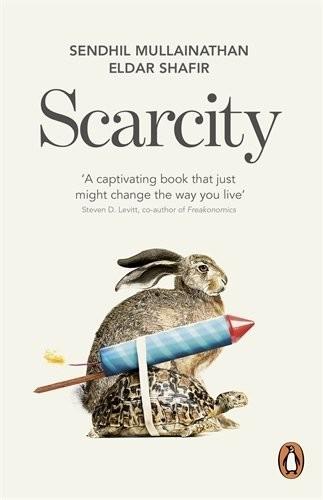
Scarcity: The True Cost of Not Having Enough
by
Sendhil Mullainathan
Published 3 Sep 2014
King, eds., Improving the Odds: Increasing the Effectiveness of Publicly Funded Training (Washington, D.C.: Urban Institute Press, 2000). loans are used to pay off other debts: Two recent impact evaluations of microfinance illustrate the potential problems quantitatively: Dean Karlan and Jonathan Zinman, “Microcredit in Theory and Practice: Using Randomized Credit Scoring for Impact Evaluation,” Science 332, no. 6035 (2011): 1278–84; Abhijit Banerjee et al., “The Miracle of Microfinance? Evidence from a Randomized Evaluation” (MIT working paper, 2010). do not undo hard work: Some of this argument can be made without resort to the psychology of scarcity.
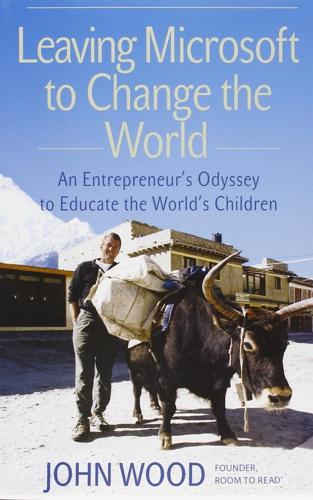
Leaving Microsoft to Change the World: An Entrepreneur's Odyssey to Educate the World's Children
by
John Wood
Published 28 Aug 2006
Afterward during the social hour he pulled me aside to compliment our work and to say that he had a myriad of ideas for how he could help us to reach our audacious goals. He had been involved early on in Grameen Bank, and what he said was music to my ears. “A decade ago, few people had heard of, or understood, micro-credit. But today millions of people knew how much good it could do to lend small amounts of money to help people start businesses, and how income from those micro-enterprises could help to lift people out of poverty. Most importantly, the model recognized that the poor are capable of helping themselves and could earn their way into self-sufficiency instead of relying on the traditional model of aid.”
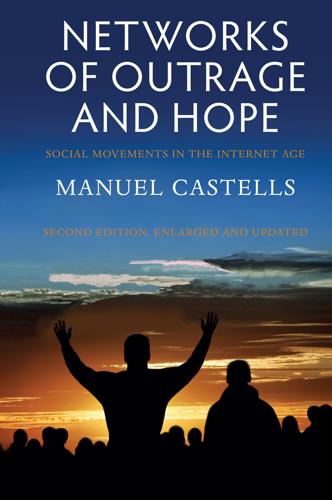
Networks of Outrage and Hope: Social Movements in the Internet Age
by
Manuel Castells
Published 19 Aug 2012
The deputies and senators were representing the decisions taken by registered members over the Internet in a number of legislative measures. Trying to set an example of new politics, the movement’s MPs returned millions of euros of their salaries to a fund to amortize Italian debt, and to a fund for micro-credit to support entrepreneurial startups, gestures that were dismissed as demagogic by other political parties. The movement also claimed to have rejected funding from the government for its campaigns, relying instead on crowdfunding from multiple sympathizers. However, the success of the movement was soon tarnished by mistakes and conflicts in the management of its decision-making system.

EcoVillage at Ithaca Pioneering a Sustainable Culture (2005)
by
Liz Walker
Published 20 May 2005
Spreading the Word 199 • Seven years after the conference, Adji Arame Thiaw (a key conference organizer) stayed with us at EVI for several months as a graduate student and international Humphrey Fellow, studying nonprofit development. While here she also held a traditional Senegalese feast to fundraise on behalf of a women’s micro-credit group in Yoff. The conference brought about many positive changes to Yoff, but the inexorable forces of Western-style development have continued, creating further economic, environmental, and social stresses. The fish harvest is at risk. “Many times the fishermen catch plastic garbage rather than fish,” Adji Arame tells us.
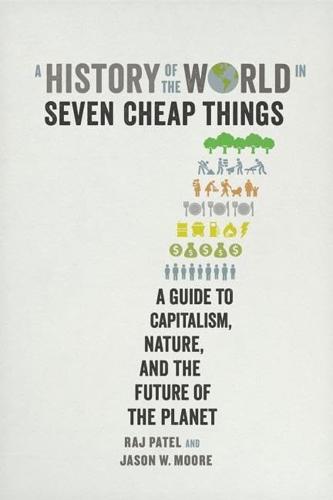
A History of the World in Seven Cheap Things: A Guide to Capitalism, Nature, and the Future of the Planet
by
Raj Patel
and
Jason W. Moore
Published 16 Oct 2017
Daily Beast, October 11. www.thedailybeast.com/articles/2010/10/11/columbus-forgotten-patron.html. Katzew, Ilona. 2004. Casta Painting: Images of Race in Eighteenth-Century Mexico. New Haven, CT: Yale University Press. Keating, Christine, Claire Rasmussen, and Pooja Rishi. 2010. “The Rationality of Empowerment: Microcredit, Accumulation by Dispossession, and the Gendered Economy.” Signs 36, no. 1: 153–76. Keller, Catherine. 1994. “The Breast, the Apocalypse, and the Colonial Journey.” Journal of Feminist Studies in Religion 10, no. 1: 53–72. Kenyon, Susan. 2010. “What Do We Mean by Multitasking? Exploring the Need for Methodological Clarification in Time Use Research.”
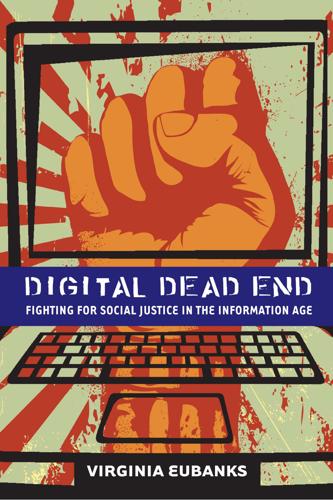
Digital Dead End: Fighting for Social Justice in the Information Age
by
Virginia Eubanks
Published 1 Feb 2011
Justice and the Politics of Difference. Princeton, NJ: Princeton University Press. Young, Iris Marion. 1997. Difference as a Resource for Democratic Communication. In Deliberative Democracy: Essays on Reason and Politics, ed. James Bohman and William Rehg, 383–406. Cambridge, MA: MIT Press. Yunus, M. 2001. Microcredit and IT for the Poor. New Perspectives Quarterly 18 (1): 25–26. Zimmerman, Andrew D. 1995. Toward a More Democratic Ethic of Technological Governance. Science, Technology & Human Values 20:86–107. Zuboff, Shoshana. 1989. In the Age of the Smart Machine: The Future of Work and Power. New York: Basic Books.

The New Harvest: Agricultural Innovation in Africa
by
Calestous Juma
Published 27 May 2017
First, too few farmers are aware of the availability and benefits of drip irrigation systems, which should be demonstrated clearly and effectively through a quality extension network. Second, despite the quick returns realized by many farmers using drip irrigation, the systems require significant capital up front. Banks, microcredit institutions, companies, and governments will need to consider providing credit or subsidies for the purchase of drip irrigation. The total cultivated land area of the Common Market for Eastern and Southern Africa amounts to some 71.36 million hectares. Of this, only about 6.48 million hectares are irrigated, representing some 9% of the total cultivated land area.
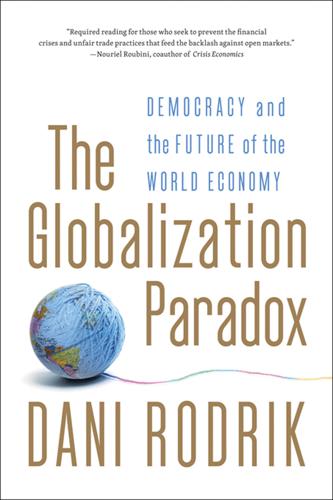
The Globalization Paradox: Democracy and the Future of the World Economy
by
Dani Rodrik
Published 23 Dec 2010
Give poor people a piece of paper which gives them legal ownership rights over their house or their land, he thought, and you will turn them into entrepreneurs and successful capitalists.27 For the Bangladeshi economist and banker Muhammad Yunus, X was credit. Give each entrepreneur a small loan (a “microcredit”), he argued, and you will unleash a process of growth and development from below.28 Both of these ideas inspired active movements and found large numbers of practitioners worldwide. Despite their obvious differences, what all of these strategies presume is that all developing countries suffer from the same ailments and require broadly similar treatment, and that we know enough about the nature of the remedies to mount a bold, ambitious, and often costly effort to eradicate world poverty.
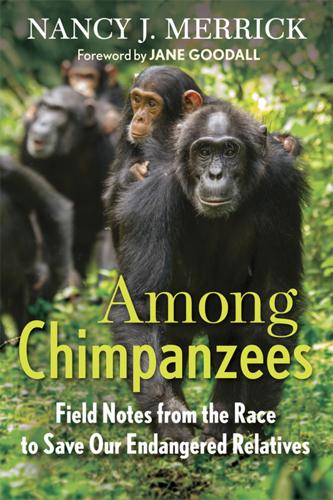
Among Chimpanzees
by
Nancy J. Merrick
Others felt contempt that arable land was being reserved for chimpanzees when there was so much human need. So, in 1994, the Jane Goodall Institute created a multifaceted community-based program, the Lake Tanganyika Catchment Reforestation and Education Project (TACARE), which created tree nurseries, women’s cooperatives, health-education centers, family-planning and AIDS clinics, and microcredit and other programs while also promoting sustainable technologies to reduce pressure on the remaining indigenous forests. The programs, which had an important impact on the health and economy of the local human community, resulted in more sustainable lifestyles and conservation. But even this array of programs was unable to fully compensate for the tremendous growth in population in the region.
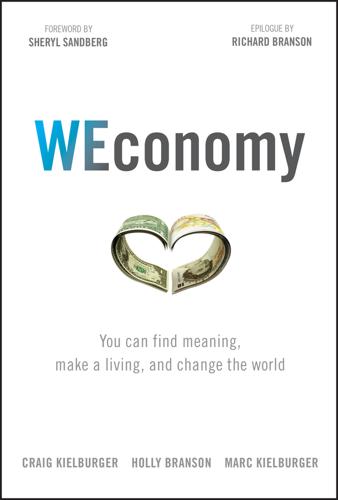
WEconomy: You Can Find Meaning, Make a Living, and Change the World
by
Craig Kielburger
,
Holly Branson
,
Marc Kielburger
,
Sir Richard Branson
and
Sheryl Sandberg
Published 7 Mar 2018
A small number of countries have started to build legal designations for social enterprises, allowing these entities to access the traditional capital of business, but granting special incentives to enable their purely social mission. Perhaps the world's most famous social enterprise is Grameen Bank, a for-profit that seeks to provide micro-credit to lift people out of poverty. It was founded by Muhammad Yunus, Nobel Peace Prize winner. This same value set is applied at ME to WE In sum, social enterprise is a hybrid sector, the love child of charity and business. As more and more innovation is spurred by social challenges, social enterprise could be the future of both capitalism and social impact.
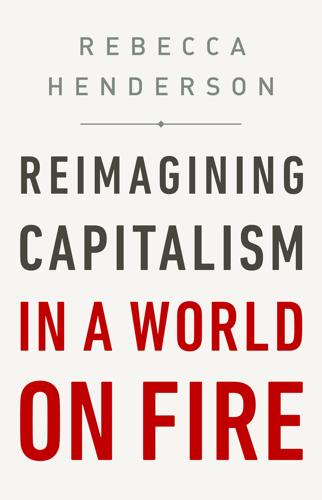
Reimagining Capitalism in a World on Fire
by
Rebecca Henderson
Published 27 Apr 2020
“Britain Backs Kenya Tea Farmers,” SOS Children’s Village, March 14, 2011, www.soschildrensvillages.org.uk/charity-news/archive/2011/03/britain-backs-kenya-tea-farmers. 21. Root Capital was a nonprofit social investment fund that provided financing for rural businesses in developing countries. It invested in a class of capital that sat between microcredit and commercial lending; Tensie Whelan, Rainforest Alliance, interview by author, Cambridge, MA, October 24, 2011. 22. Rebecca M. Henderson and Frederik Nellemann, “Sustainable Tea at Unilever,” HBS Case no. 712-438, December 2011 (Revised November 2012). 23. Idem. 24. Which is not to say that Unilever is perfect or that problems haven’t come up.
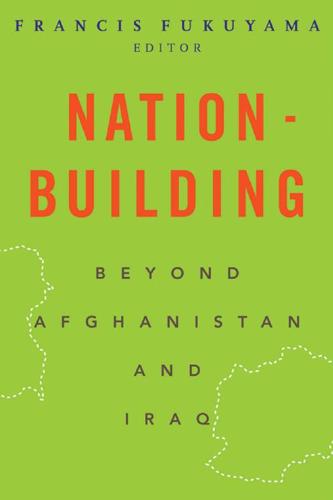
Nation-Building: Beyond Afghanistan and Iraq
by
Francis Fukuyama
Published 22 Dec 2005
A stimulated economy provides the income necessary for the disarmament, demobilization, and reintegration of private militias across the country, whose continued presence retards the establishment of national authority and threatens reconstruction programs. A revived agricultural sector calls for improvements in the country’s physical infrastructure and for the availability of inputs and microcredit; its success is critical to overcoming the illicit economy from opium-poppy growing that challenges state authority and is corrosive to Afghan society. Importantly, a reviving economy fosters the popularity of the Kabul government, ultimately also enhancing its legitimacy. The third requisite for creating a stable, modern Afghan state and economy is generous, sustained foreign assistance.
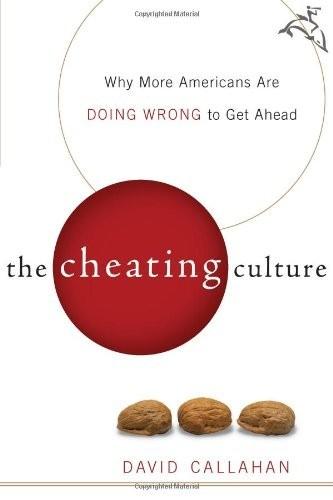
The Cheating Culture: Why More Americans Are Doing Wrong to Get Ahead
by
David Callahan
Published 1 Jan 2004
Smart proposals abound for how to help more people create personal wealth: birth endowments that give every child a nest egg on day one and, through the miracle of compound interest, translate into real assets by adulthood; Individual Development Accounts that leverage government money to encourage poorer Americans to save; special housing programs that offer low-interest loans to first-time homeowners; micro-credit loans that allow more people to start a small business. The ideas are all there. What is needed now are serious investments aimed at creating a true "stakeholder society."4 Fourth, more needs to be done to reduce key insecurities that are part of our postindustrial economy. Americans may never again have the kind of job security that was common forty years ago.
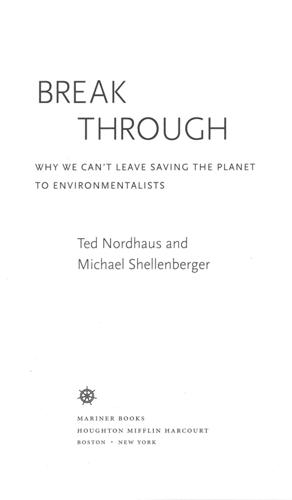
Break Through: Why We Can't Leave Saving the Planet to Environmentalists
by
Michael Shellenberger
and
Ted Nordhaus
Published 10 Mar 2009
Shortly after reading that, Warren says that he and his wife decided to give away 90 percent of the tens of millions of dollars they had earned from The Purpose-Driven Life. Inspired, perhaps, by Bono, Bill Gates, and Warren Buffet, who have dedicated their lives and much of their fortunes to compassionate action, the Warrens have funded microcredit programs and AIDS treatment in Africa. Awed by the American way of belonging, Tocqueville asked, “What political power could ever substitute for the countless small enterprises which American citizens carry out daily with the help of associations?”24 Gladwell quotes Warren making a similar point—but this time in a global context.

Markets, State, and People: Economics for Public Policy
by
Diane Coyle
Published 14 Jan 2020
No-shows to hospital appointments in New South Wales were reduced by selecting—out of several options assessed—a reminder text message that told patients each missed appointment cost the hospitals AUD$125. There was a 20% reduction in no-shows, saving $67,000 a year (BIU). Framing Kenya, 2015. Text messages were sent to people who had taken out zero-interest microcredit loans to test which message would increase repayment rates. Messages increased repayments from men but reduced them from women (CGAP, Busara Center for Behavioral Economics). Consider the problem of eating too much chocolate cake. You know it is bad for you long term to eat a piece each day but cannot resist the impulse.

The Hidden Globe: How Wealth Hacks the World
by
Atossa Araxia Abrahamian
Published 7 Oct 2024
The world was still in an economic recession caused, largely, by the so-called best and brightest, and the clever contrarianism of radio programs like Freakonomics and Planet Money—which covered Romer effusively—seemed to explain the economy about as well as anyone at the World Bank or the Federal Reserve. In the United States, the postracial promises of the Obama administration had not quite given way to the Trump-era awareness that inequality and bias were structural, not personal. Internationally this was the case as well: the economic press was still in the thrall of seductive fixes like microcredit, which relied on individuals over systemic solutions like a social safety net or functional infrastructure. It was also a time when big tech firms weren’t yet being sued for monopolization and invasions of privacy so much as celebrated for their ability to “hack” everything from personal fitness to political polling.
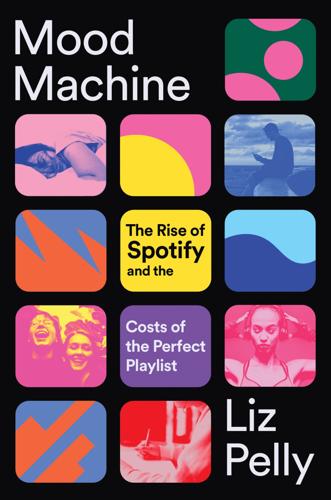
Mood Machine: The Rise of Spotify and the Costs of the Perfect Playlist
by
Liz Pelly
Published 7 Jan 2025
And to more broadly illustrate why else marketers and ad-tech firms as well as “credit agencies, banks, health-care providers, insurers, governmental agencies, and finance companies” might want music-related data—beyond just Spotify and streaming data—Drott points to examples that already exist: a start-up called Creditvidya, which has used music streaming data as part of its algorithm for approving loans, and the microcredit start-up Lenddo, which media scholar Robert Prey has noted uses concert ticket data as part of approving students for loans to buy textbooks.6 These examples illuminate why it matters that Spotify is a partner of Acxiom, one of the world’s largest data brokers, which as of 2021 claimed to have detailed data profiles for 2.5 billion people across sixty-two different countries.

Exceptional People: How Migration Shaped Our World and Will Define Our Future
by
Ian Goldin
,
Geoffrey Cameron
and
Meera Balarajan
Published 20 Dec 2010
Borders enclose many people within a poverty trap.34 The extreme example is in the countries of the Sahel, where colonial borders have been drawn around countries that have little economic, ethnic, or historical cohesion. In the past, there would have been mass emigration; now citizens of these countries are trapped in poverty and a cycle of conflict. This is a global phenomenon, as Kerry Howley explains: Say you're a Bangladeshi taxi driver struggling to survive on your daily wage in Dhaka.… Microcredit loans might net you an extra $700 over the course of a lifetime. Working [in the United States], you're likely to make the same amount in a month. Nothing rich countries can send the global poor—not loans, not textbooks, not fair-wage campaign materials—will boost the income of the average worker nearly so much as letting him walk among the wealthy.
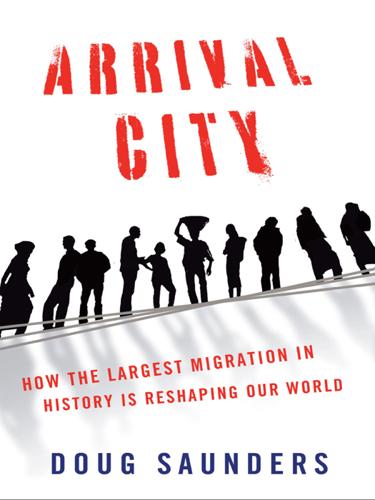
Arrival City
by
Doug Saunders
Published 22 Mar 2011
It helped that a farsighted mayor the same year recognized the social and economic value of giving the outlying favelas comprehensive bus and commuter-train service and an affordable transit pass for poor workers. It helped that medical clinics and street lighting were installed. It helped that micro-credit agencies established themselves here and offered loan guarantees and that small-business laws were liberalized, making it easier for favela-dwellers to use the value in their real estate to start a company. And it helped that entrepreneurs and agencies built venues to popularize and profit from the music and dance that had been an underground part of the favela’s culture.
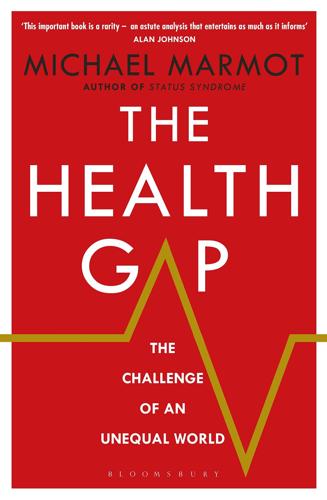
The Health Gap: The Challenge of an Unequal World
by
Michael Marmot
Published 9 Sep 2015
Instead of toiling beneath the surface of human dignity, dealing with the waste we would all rather not acknowledge, they were working to enhance others’ dignity and their own, by working to help women look more beautiful. Pictures of these graceful former scavengers in white saris gladden the heart. Other scavenger women have also been trained to make pickles, have various jobs in food processing, do office jobs, and have received micro-credits for small businesses. Lalta saw her pay go from 600 rupees a month to 2,000 rupees. More, she says: ‘From a heap of humiliation to the heights of self-respect and self-confidence, I believe life has turned out miraculously for the good. I don’t ask for more, for today I can stand and face the world with respect.’
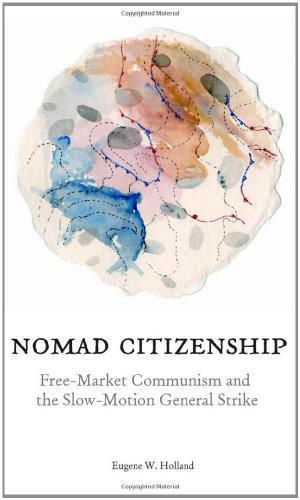
Nomad Citizenship: Free-Market Communism and the Slow-Motion General Strike
by
Eugene W. Holland
Published 1 Jan 2009
Credit unions pool savings from a specific group of members, most often organized according to locality or occupation, and make loans available to other members at prevailing interest rates. (What rates would prevail without the standard prime rate set by the Federal Reserve, nomad financial markets themselves would decide.) Microfinance or microcredit makes very small loans available to very poor people to jump-start small business enterprises that are routinely ignored by the major banking systems. In both cases, the kind of minor, local knowledge advocated by von Hayek for free markets in general en ables financial institutions to make decisions about whether and where investments should be made.

The Coming Wave: Technology, Power, and the Twenty-First Century's Greatest Dilemma
by
Mustafa Suleyman
Published 4 Sep 2023
It is in many ways just another part of the political system, building alliances, drafting laws, and working with the conventional instruments of state. Its members sit on local municipal councils and in parliament and hold ministerial cabinet positions. Across the large swaths of Lebanese territory it controls, Hezbollah operates schools, hospitals, health-care centers, infrastructure, water projects, and microcredit-lending initiatives. Indeed, some of these programs even have the support of Sunnis and Christians. Whole districts are essentially run by Hezbollah in the manner of a state. It also conducts various commercial activities, of both a legal and a more criminal nature, including smuggling oil. So what is Hezbollah?
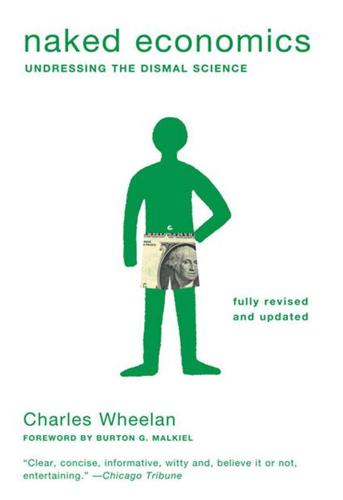
Naked Economics: Undressing the Dismal Science (Fully Revised and Updated)
by
Charles Wheelan
Published 18 Apr 2010
Modern economies cannot survive without credit. Indeed, the international development community has begun to realize that making credit available to entrepreneurs in the developing world, even loans as small as $50 or $100, can be a powerful tool for fighting poverty. Opportunity International is one such “microcredit” lender. In 2000, the organization made nearly 325,000 low-collateral or non-collateral loans in twenty-four developing countries. The average loan size was a seemingly paltry $195. Esther Gelabuzi, a widow in Uganda with six children, represents a typical story. She is a professional midwife, and she used a tiny loan by Western standards to set up a clinic (still without electricity).

The Prince of the Marshes: And Other Occupational Hazards of a Year in Iraq
by
Rory Stewart
Published 1 Jan 2005
Marines who were running the Iraqi Army recruitment, convinced them to provide a thousand places for soldiers from Maysan, and invited them down to site one of their recruitment centers in the province. She found that hundreds of millions were available for the Marsh Arabs and that foreign experts were discussing reflooding the marshes, but that few Marsh Arabs had been included in the discussions. So she formed a Marsh Arab council to represent their interests, and she pressed to create a micro-credit scheme for small businesses. We worked fourteen- to sixteen-hour days and were seldom able to take a day off. I no longer had time for a run with the soldiers every evening. I was concerned that we would become stale if we kept up this pace for the next seven and a half months. And although our operations were becoming more orderly, we were still not entirely in control.
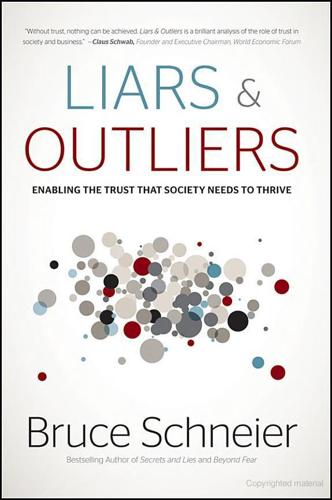
Liars and Outliers: How Security Holds Society Together
by
Bruce Schneier
Published 14 Feb 2012
A thousand years earlier, Roman letters of introduction were similarly trusted throughout the empire. Political scientist Robert Putnam has argued that mistrust increases in a community as ethnic diversity increases. Evidence of this effect comes from sources as diverse as studies of carpooling, Peruvian micro-credit cooperatives, and Civil War deserters. Even worse, this inherent mistrust of those in other ethnic groups isn't offset by an increase in trust of those in one's own ethnic group; trust across the board weakens in more ethnically diverse communities.11 So it should come as no surprise that we have an enormous number of membership markers that we use to determine who is like us: language, dress, ethnicity, gang tags, haircuts, tattoos, jewelry, T-shirt slogans, food choices, gestures, secret handshakes, turns of phrase in speech, formal membership credentials, and so on.
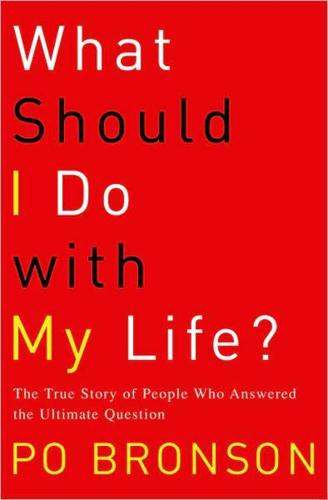
What Should I Do With My Life?
by
Po Bronson
Published 2 Jan 2001
This would be such a happier story if I could say that Ana found her in-between in Time Dollars, and now her life is happy and she’s reunited with her family, and she makes a decent, modest living, and she even has a new boyfriend. Plenty of people who do the kind of work that Ana does have that sort of picturesque life. (My older brother, for example—a former bank lending officer, he runs microcredit programs in several countries for Project Hope, a large nonprofit, and lives in the suburbs of Northern Virginia with his family.) But I came to Miami and I found Ana, and I can’t hide what I saw. I’m aware that when I mention she’s getting by on less than twenty-five grand a year, I kill any chance that someone else will choose to follow the path she’s blazed.

Dancing in the Glory of Monsters: The Collapse of the Congo and the Great War of Africa
by
Jason Stearns
Published 29 Mar 2011
When fighting broke out in Kigali in April 1994, she fled with her ailing mother and members of her family, and after several weeks of walking, she crossed the border into Zaire and made herself at home in Inera, a camp on the shores of Lake Kivu. There a slum of 55,000 refugees living in squalid huts had sprung up overnight on the muddy silt. Beatrice drew on her professional experience, quickly becoming a leader in a network of nonprofit groups working in the camps. She organized a small microcredit program to allow refugees to make a living in the camps, and she helped publish two newsletters for refugee women to express themselves and explain their problems. Although Beatrice had a small salary, she lived in one of the blindés, the tiny, doghouse-size tents where the refugees lived. Each family was given one tarpaulin, four meters by five, with the insignia of the UN refugee agency: a laurel wreath protecting a family inside.

Seeds of Hope: Wisdom and Wonder From the World of Plants
by
Jane Goodall
Published 1 Apr 2013
This was the approach that JGI took when developing our TACARE program—it was obvious that the health of the ecosystem, such as protecting the watershed and reforesting eroded slopes, was of key importance. It was also seen as vital to the long-term success of farming in the area to address the needs of the very poor rural community (through microcredit opportunities, empowerment of women, education of girls, family planning, and the establishment of cooperatives and markets for goods). In a March 2011 report, Agroecology and the Right to Food, the United Nations found that, within ten years of introducing agroecology into an area, food production could be doubled, climate change mitigated, and rural poverty alleviated.
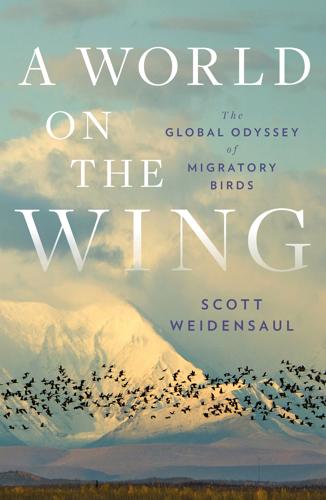
A World on the Wing: The Global Odyssey of Migratory Birds
by
Scott Weidensaul
Published 29 Mar 2021
As recently as a decade ago, the spoon-billed sandpiper appeared to be doomed, but heroic efforts have clawed it back from the edge of extinction—helped, it must be said, by the magnetic charm of this small, peculiar bird and the enthusiasm and affection it engenders in people. Overall, increased law enforcement has reduced the risk of illegal netting and hunting on the spoon-billed’s nonbreeding grounds in southern Asia. At Sonadia Island in Bangladesh, for example, where in addition to increased poaching patrols conservationists offered microcredit loans to allow former hunters to take up fishing, shopkeeping, or other alternate employment, there has been a complete cessation of shorebird killing of any sort. In 2017 part of the Gulf of Mottama in Myanmar, where half the spoonie population winters, was declared a Ramsar conservation site, with the remainder proposed for a similar designation.

Wall Street: How It Works And for Whom
by
Doug Henwood
Published 30 Aug 1998
Despite claims of "empowering" women, Grameen loans formalize women's informal household labor (while blocking their entry into po- WALL STREET tentially more liberating — with all the appropriate qualifications — waged work), typically without increasing their autonomy within the household (well under half have significant control over the businesses held in their names). By contrast, the Self-Employed Women's Association of India (SEWA) offers credit, but as part of a package of education and political organizing. With Grameen, male lending officers really call the shots. The appeal of microcredit schemes like Grameen — which have been adopted enthusiastically by the likes of the World Bank, Hillary Clinton, and Citibank — is that they are a low-cost, nonthreatening substitute for real self-organization, like SEWA, and for expensive public programs like education, health care, and infrastructure investment.
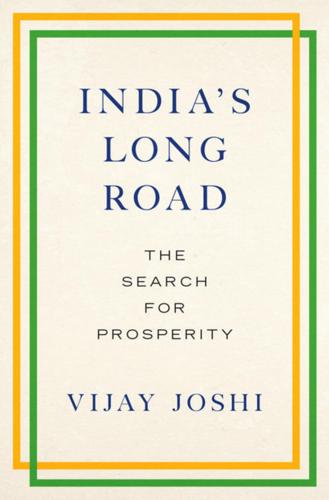
India's Long Road
by
Vijay Joshi
Published 21 Feb 2017
They are a mixed bag. Some such as the Integrated Child Development Scheme, for early childhood development, and the Mid-Day Meals Scheme for school children have a reasonably good track record. Many others such as the Indira Awas Yojana, a housing scheme for the poor, and the National Livelihoods Mission, a micro-credit subsidized lending scheme, are known to be to be very badly targeted. Many government reports have pointed out the failings of the multiplicity of India’s poverty programmes: unnecessary proliferation, large leakages and corruption, lack of accountability of government functionaries, lack of implementation capability etc.15 They raise the same overwhelming question that food subsidies do: Would their objectives not be better served by straightforward cash transfers?
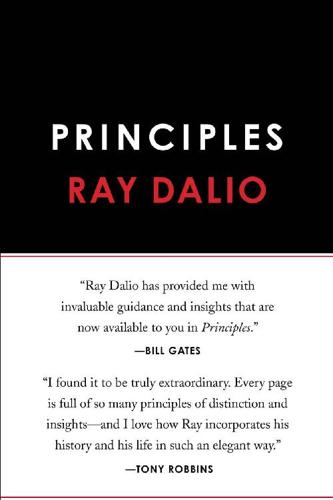
Principles: Life and Work
by
Ray Dalio
Published 18 Sep 2017
On one of the personality assessments there is a category they all ranked low on called “Concern for Others.” But that doesn’t mean quite what it sounds like. Consider Muhammad Yunus, for example. A great philanthropist, he has devoted his life to helping others. He received the Nobel Peace Prize for pioneering the ideas of microcredit and microfinance and has won the Congressional Gold Medal, the Presidential Medal of Freedom, the Gandhi Peace Prize, and more. Yet he tested low on “Concern for Others.” Geoffrey Canada, who has devoted most of his adult life to taking care of all the disadvantaged children in a hundred-square-block area of New York’s Harlem, also tested low on “Concern for Others.”
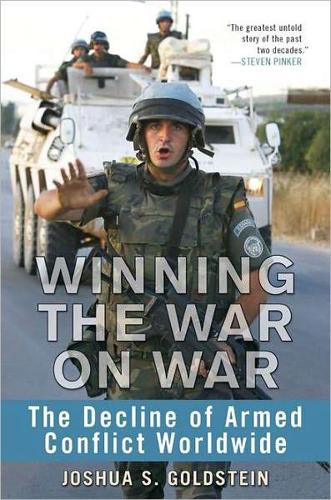
Winning the War on War: The Decline of Armed Conflict Worldwide
by
Joshua S. Goldstein
Published 15 Sep 2011
They staged a nonviolent sit-in against Chevron/Texaco to push for the same demands that men had been seeking with guns. Chevron/Texaco opened a dialogue with the women and agreed to adopt a “different philosophy,” in the words of one company executive, to “do more with communities” by funding schools, clinics, water, and electricity, and giving microcredit to women. The conflict in this region diminished in 2009, with a government amnesty and a reduction in rebel attacks, although the final outcome is not yet clear. No doubt the women’s nonviolent actions contributed to the progress that the Niger Delta has made. Women also played a vital role in South Africa’s peaceful transition from apartheid to democracy in the early 1990s.
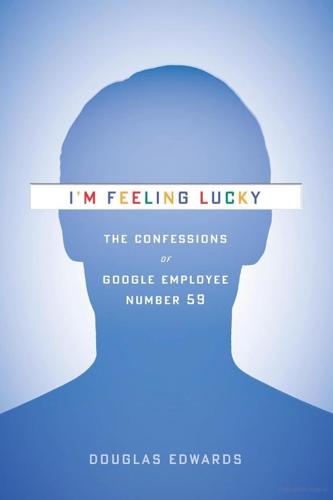
I'm Feeling Lucky: The Confessions of Google Employee Number 59
by
Douglas Edwards
Published 11 Jul 2011
Google wouldn't treat employees badly or sell products that worked poorly. We wouldn't waste people's time—a point Larry emphasized again and again. We need to do good, he said. We need to do things that matter on a large scale. Things that are highly leveraged. When I asked for examples, he mentioned micro-credits in Bangladesh and the Rocky Mountain Institute and talked about changing business systems to make them environmentally friendly while saving money. He also talked about distributed computing, drug discovery, and making the Internet faster. And that wasn't all. We should be known for making stuff that people can use, he said, not just for providing information.

Connectography: Mapping the Future of Global Civilization
by
Parag Khanna
Published 18 Apr 2016
Over 250,000 Burmese live in Thailand alone, without which the micro-economy would grind to a halt just as many American cities and towns would without Mexicans. As in Europe, a generation of post-national Southeast Asians is being born. FROM “SCRAMBLE FOR AFRICA” TO PAX AFRICANA Unscrambling Africa Everyone seems to have a one-word answer to the plight of African nations today: “democracy,” “secession,” “micro-credit,” “literacy,” “vaccines.” But African states won’t survive at all without basic physical infrastructure. What will make the difference between celebrating independence and achieving success in Africa is not just political nation building but physical state building—both within and across borders.

The Color of Money: Black Banks and the Racial Wealth Gap
by
Mehrsa Baradaran
Published 14 Sep 2017
The exemplar of community capitalism, the bank promoted a “triple bottom line: profitability, community development impact, and an environmental return."74 ShoreBank’s primary aim was to fight urban decline. At its peak, it had $4.1 billion invested in inner-city Chicago.75 The bank’s ambitious mission drew many admirers, including Grameen Bank founder Muhammad Yunus, who visited the bank before launching microcredit in Bangladesh and receiving a Nobel Peace Prize for his innovative approach to poverty.76 This is not to say that the bank didn’t struggle against the same profitability trap that had ensnared black banks for nearly a century. For the first ten years, the bank lost money because its loans were risky, deposits were small, and operation costs were high.77 In short, ShoreBank’s founders came to the same realization that many had before them—that operating a profitable bank in a poor and segregated ghetto is a challenge.

Aerotropolis
by
John D. Kasarda
and
Greg Lindsay
Published 2 Jan 2009
Elected by a landslide in 2001, Thaksin was one of Thailand’s richest men, having leveraged his family’s modest fortune into a TV and telecom empire. He ran as a self-made populist, ignoring Bangkok’s educated elites in favor of winning the hearts and minds of poor farmers in the countryside. He promised them a New Deal of universal health care, public works, microcredit, and outright cash handouts to the villages—in effect buying their votes. He announced his aim in early speeches to move away from the “East Asian economic model” that was “overly dependent upon exports produced by foreign technology brought in by foreign investors with low value-added content and relying mainly on cheap labor.”
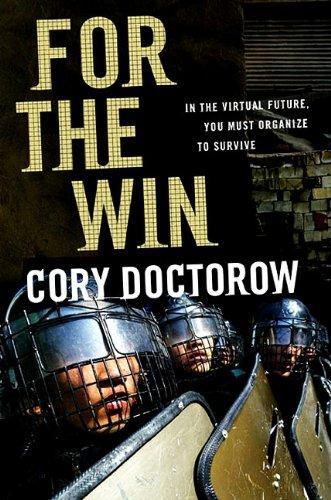
For the Win
by
Cory Doctorow
Published 11 May 2010
Invite squatters all over the country to move onto our grounds, test out our products, help us design, build and market them. We can recruit traveling salespeople to go door to door in the shanties and take orders. Shit, man, you talk about the Grameen Bank all the time—why not go into business providing these people with easy microcredit without preying on them the way the banks do? Then we could loan them money to buy things that we sell them that they use to better their lives and earn more money so they can pay us back and buy more things and borrow more money—” Kettlewell held up a hand. “I like the theory. It’s a nice story.
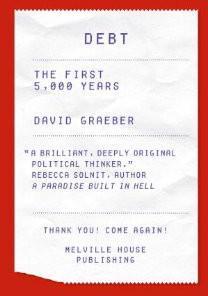
Debt: The First 5,000 Years
by
David Graeber
Published 1 Jan 2010
The chief cause of bankruptcy in America is catastrophic illness; most borrowing is simply a matter of survival (if one does not have a car, one cannot work); and increasingly, simply being able to go to college now almost necessarily means debt peonage for at least half one’s subsequent working life.32 Still, it is useful to point out that for real human beings survival is rarely enough. Nor should it be. By the 1990s, the same tensions had begun to reappear on a global scale, as the older penchant for loaning money for grandiose, state-directed projects like the Aswan Dam gave way to an emphasis on microcredit. Inspired by the success of the Grameen Bank in Bangladesh, the new model was to identify budding entrepreneurs in poor communities and provide them with small low-interest loans. “Credit,” the Grameen Bank insisted, “is a human right.” At the same time the idea was to draw on the “social capital”—the knowledge, networks, connections, and ingenuity that the poor people of the world are already using to get by in difficult circumstances—and convert it into a way of generating even more (expansive) capital, able to grow at 5 to 20 percent annually.

Caribbean Islands
by
Lonely Planet
You can make calls from Teleco offices, or the ubiquitous phone ‘stands’ – usually a youth on the street with a cell phone that looks like a regular desk phone. Volunteering The following aid groups have demonstrated they are in Haiti for the long haul; all welcome support from individuals interested in volunteering. Fonkoze (www.fonkoze.org) A microcredit organization spread across the country, working in economic empowerment. Lambi Fund (www.lambifund.org) A grassroots civil society NGO, working on sustainable development, environment and civic-empowerment programs in rural areas. Gheskio (www.gheskio.org) A Haitian HIV/AIDS NGO, working since 1982 and providing free health care for HIV patients.